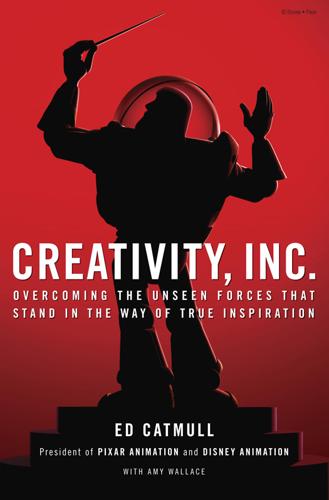
Creativity, Inc.: Overcoming the Unseen Forces That Stand in the Way of True Inspiration
by
Ed Catmull
and
Amy Wallace
Published 23 Jul 2009
The most productive creative sessions allow for the exploration of myriad trains of thought. Take WALL-E, for example, which was known, early on, as Trash Planet. For a long time, that movie ended with our googly-eyed trash compactor robot saving his beloved droid, EVE, from destruction in a dumpster. But there was something about that ending that nagged, that never quite felt right. We had countless discussions about it, but Andrew Stanton, the director, was having difficulty putting his finger on what was wrong, let alone finding a solution. The confusing thing was that the romantic plotline seemed right. Of course WALL-E would save EVE—he’d fallen in love with her the moment he saw her.
…
And it was Brad Bird who pointed that out to Andrew in a Braintrust meeting. “You’ve denied your audience the moment they’ve been waiting for,” he said, “the moment where EVE throws away all her programming and goes all out to save WALL-E. Give it to them. The audience wants it.” As soon as Brad said that, it was like: Bing! After the meeting, Andrew went off and wrote an entirely new ending in which EVE saves WALL-E, and at the next screening, there wasn’t a dry eye in the house. Michael Arndt remembers it was Andrew, meanwhile, who gave a Braintrust note on Toy Story 3 that fundamentally altered the end of that movie’s second act.
…
This idea—that all the movies we now think of as brilliant were, at one time, terrible—is a hard concept for many to grasp. But think about how easy it would be for a movie about talking toys to feel derivative, sappy, or overtly merchandise-driven. Think about how off-putting a movie about rats preparing food could be, or how risky it must’ve seemed to start WALL-E with 39 dialogue-free minutes. We dare to attempt these stories, but we don’t get them right on the first pass. And this is as it should be. Creativity has to start somewhere, and we are true believers in the power of bracing, candid feedback and the iterative process—reworking, reworking, and reworking again, until a flawed story finds its throughline or a hollow character finds its soul.

Little Bets: How Breakthrough Ideas Emerge From Small Discoveries
by
Peter Sims
Published 18 Apr 2011
One of the methods that can be most helpful in achieving this balance, in order to embrace the learning potential of failure, is prototyping. What the creation of low cost, rough prototypes makes possible is failing quickly in order to learn fast. As Pixar director Andrew Stanton, director of Finding Nemo and WALL-E, describes this way of operating, “My strategy has always been: be wrong as fast as we can. Which basically means, we’re gonna screw up, let’s just admit that. Let’s not be afraid of that. But let’s do it as fast as we can so we can get to the answer. You can’t get to adulthood before you go through puberty.
…
As Joe Ranft, who was one of Pixar’s master storyboard artists, described it, “A story artist gets the plan for a scene whether in script form or loose outline, and starts to draw, exploring possibilities, imagining the scene in pictures, making discoveries, and uncovering unforeseen problems, dramatic or logistical.” Interestingly, with each success they’ve had, they have challenged themselves even more, and in keeping with that, they have used more storyboards: 27,565 on A Bug’s Life, 43,536 for Finding Nemo, 69,562 for Ratatouille, and 98,173 for WALL-E. That’s a striking expression of healthy perfectionism. The primary venue for monitoring progress with these story boards are story meetings with the film’s director. During the story development phase, the meetings happen daily, attended by the director, members of Pixar’s in-house story development team, and storyboard artists.
…
“Perfectionistic concerns suppress associations between perfectionistic strivings and positive life outcomes,” by Robert Hill, Timothy J. Huelsmana and Gustavo Araujoa, Personality and Individual Differences, vol. 48, 5, April 2010, 584–589. “The Two Faces of Perfectionism,” by Tom Jacobs, Miller-McCune, January 28, 2010. Andrew Stanton reference: Stanton, Pixar Director of Finding Nemo and WALL-E, is well-known around Pixar for talking about the importance of “failing quickly to learn fast.” Other directors there, like Pete Docter, quote him. Quote taken from an interview Stanton did with Slashfilm, about nine minutes into the discussion, which can be found at: http://www.slashfilm.com/37-minute-interview-with-andrew-stanton/.

The Eureka Factor
by
John Kounios
Published 14 Apr 2015
BY WAY OF ANALOGY * * * Andrew Stanton of Pixar Animation Studios already had a string of hit movies to his credit. He had written blockbusters such as Toy Story; Monsters, Inc.; Finding Nemo; and Cars and was writing a new film that would prove just as successful: WALL-E, about the last robot left on a hopelessly polluted earth abandoned by humans many years before. One of the problems with which he had been struggling was the design of WALL-E’s face. It had to be machinelike, yet expressive. One day, Stanton went to a baseball game. He couldn’t see the game very well, because his seat was “crappy” (for which he blamed his editor). So he borrowed a pair of binoculars from the person sitting next to him.
…
He mistakenly turned the binoculars around. With the lenses on the wrong side staring at him, the answer to the problem “dropped in my lap.” The binoculars looked like a face. He flexed the inner hinge a few times to create different facial expressions and saw “an entire character with a soul in it.” It was settled. The robot WALL-E would look like a “binocular on a stem.” Stanton’s insight caused him to miss a whole inning of the game. Undoubtedly, winning an Oscar made up for that. This aha moment conferred an analogical insight. Analogical thinking solves a problem by revealing a deep relationship between two things that appear very different from each other on the surface.
…
Later, he spent many years thinking about cancer and angiogenesis, which put all the elements of his next insight into place. These pieces eventually snapped together when he ducked out of his lab to attend a religious service. Similarly, Andrew Stanton had been struggling for some time with the problem of a face for WALL-E. The answer appeared when he took a break from work to enjoy a baseball game. Such examples show that an insight can incubate unconsciously in your brain while you’re thinking about other things, only to pop into consciousness at an unexpected moment, sometimes triggered by a seemingly irrelevant stimulus such as bloodless tumors or a pair of binoculars.
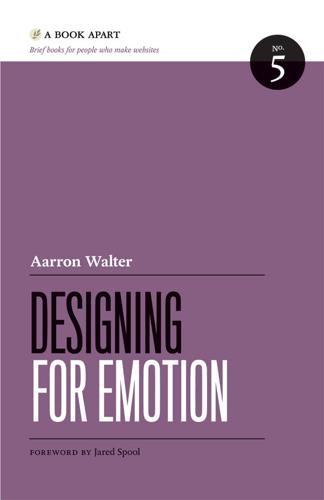
Designing for Emotion
by
Aarron Walter
Published 4 Oct 2011
One robot in particular inspired Tapbots app designer Mark Jardine to design personality into the user interface: The whole UI concept was really inspired by the movie, WALL•E.Our concept for the first two apps was to design them as if they were physical robots. We want our apps to be used seriously, but also give the sense that they are more than just a piece of software. We want our users to have an emotional connection to our apps. Most people don’t have a love/joy for software like geeks do. Users react with effusive emotion to these cartoony, yet seemingly tangible interfaces enhanced by robotic whirs, bleeps, and blips. You can certainly see the parallels with WALL•E, in physical and personality traits. Both are friendly, endearing, and reliable.
…
q=%22Guess+I+could+have+waited+for+today+if+all%22&in=81&type=contents&view=posts&search=true&button_search.x=54&button_search.y=-106&button_search=true 13 http://www.alistapart.com/articles/understandingprogressiveenhancement/ 14 http://google.com/websiteoptimizer Resources 15 http://amzn.com/1592535879 16 http://getmentalnotes.com/ 17 http://amzn.com/0465051367 18 http://amzn.com/0393334775 19 http://amzn.com/014303622X 20 http://amzn.com/030746086X 21 http://amzn.com/0979777747 22 http://amzn.com/0321607376 23 http://uxmag.com/design/beyond-frustration-three-levels-of-happy-design 24 http://uxmag.com/design/the-psychologists-view-of-ux-design 25 http://uxmag.com/design/organized-approach-to-emotional-response-testing 26 http://boxesandarrows.com/view/emotional-design Index 37Signals 8-10 A Able Design 88 aesthetic-usability effect 27-28 A List Apart 90 Apple 7, 27 anticipation 54-58, 87 apathy 75 Arts and Crafts movement 2, 94 B baby-face bias 18-20, 28, 32 Basecamp 8-10, 70 Betabrand 13-16, 75 Blue Sky Resumes 88-90, 93 bible 31-33 Biological Homage to Mickey Mouse, A 19 Bowman, Doug 21, 55-56 Brain Rules 12 Breathing Status LED Indicator 27 Bringhurst, Robert 20 Brizzly 19-20 C calligraphy 31 Carbonmade 40, 42-45 Clippy 60 CoffeeCup Software 85-87, 90 Cornelius, J. 86 contrast 22-25, 28, 44 Convertbot 40-41 D Damasio, Antonio 67 Darwin, Charles 17-18 design persona 35-40, 48, 91, 92 Don’t Make Me Think 77 dot-com bubble 3 Dribbble 55-56, 59 Dropbox 72-74 E Etsy 2 Elements of Content Strategy, The 75 Elements of Typographic Style, The 20 Emotional Design 27 Expression of the Emotions in Man and Animal, The 17 F Facebook 3, 7, 54, 59, 74, 86-87 face-ism ratio design principle 46 fail whale 7 Fletcher, Louise 90 Flickr 3, 51, 54, 79-82, 93 Freddie Von Chippenheimer IV 37, 60-65 G Getting Real 8 GigaOm 56 Gmail 70 golden ratio 20-21, 27 Google Site Optimizer 93 GoToMeeting 76 Gould, Stephen Jay 19 Gorum, Dave 44 Groupon 62 Gruber, John 42 Gupta, Amit 51-52 Gutenberg, Johannes 31-33 gut instinct 67-68 H Hale, Kevin 11 Happy Cog 46 Hick’s Law 24, 28 hierarchy of needs 5-6, 35 Hipmunk 7 Hodgman, John 33, 36 Housing Works 40, 45-46, 75, 93 HTML 3 Human-Computer Interaction 29 I iPhone 40 iPod 20 industrial revolution 1 iTunes 7 Ping 7 Pink Panther 15-16 Putorti, Jason 69, 71 priming 59-65, 76 progressive enhancement 90-91 Pythagoras 20, 27 J Jobs, Steve 27 Jardine, Mark 41-42 K Kickstarter 2 Kissane, Erin 75 Krug, Steve 77 L Lindland, Chris 13-16 Long, Justin 33, 36 M Mac 33, 36 Mall, Dan 46 MailChimp 20, 36-40, 60-65, 91 Mashable 56 Maslow, Abraham 5-6 Medina, John 12 memory 11-13, 49, 82 messagefirst 33-35 Mestre, Ricardo 25-26 Microsoft Office 60 Mint 69-72, 93 N Norman, Donald 27, 82-83 O open system 54 Oprah Magazine 90 P Parthenon 20 party pooper 91 persona 33-40 Photojojo 49-52, 59, 65 Q Quicken 72 R rosy effect 82 S Scoutmob 62 Shakespeare 10 Silverback 77 Sims 54 Skype 76 Smith, Matthew 88-89 StickyBits 20 Squared Eye 88 Super Mario Brothers 54 surprise 49-54 T Tapbots 40-42 Tumblr 23-24 Trammell, Mark 55 Twitter 3, 7, 20-21, 54, 55-59, 74, 86-87 V variable rewards 62, 87 velvet rope 57, 87 Volkswagen Beetle 32 W WALL•E 41-42 Warfel, Todd Zaki 33 Weightbot 40-41 Wilson, Rainn 4 Wufoo 9-11, 13, 52-54, 93 Y YouTube 37, 60 About A Book Apart Web design is about multi-disciplinary mastery and laser focus, and that’s the thinking behind our brief books for people who make websites. We cover the emerging and essential topics in web design and development with style, clarity, and, above all, brevity—because working designer-developers can’t afford to waste time.
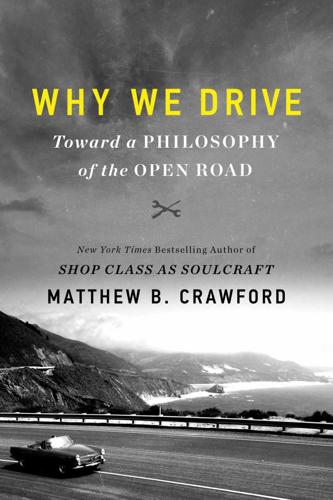
Why We Drive: Toward a Philosophy of the Open Road
by
Matthew B. Crawford
Published 8 Jun 2020
So now Silicon Valley is going to solve the problem of distracted driving that it helped to create, by removing us from the driver’s seat. Perhaps that is a good thing, on balance, given the realities. But it also represents a quiet coup of some consequence, and we do well to pause and consider the direction we are headed. We catch a glimpse of one possible future in the animated film WALL-E, in which we see grotesquely fat people ferried about a hovering grid in their car-like pods. Finally relieved of the burden of paying attention to their surroundings, they slurp from enormous cup holders and gaze raptly at their screens, untroubled by the overdetermination of their world. Their faces beam, in a slackened sort of way, with the opiate pleasure of novelties piped into their cockpits from afar.
…
Rather than try to duplicate the efficiency of their driving practices with computers, we might instead look to such practices to remind ourselves what human beings are capable of, when left to their own devices. This becomes a meditation on the meaning of self-government. I believe it is in this vicinity that we should look if we want to understand why self-driving cars play prominent roles in several dystopian films, including Blade Runner, Total Recall, Minority Report, and WALL-E. In these films, drivers have become passengers and appear as a new class of administrative subjects to be managed. I use the word “subject” to mean both an object of political rule and the type of person—the form of subjectivity—that is assumed or required by such rule, and thereby brought into existence.
…
In response, we may become dispirited in the way an animal does when it is removed from its accustomed habitat, the one that calls forth its full repertoire of excellences. In this dispirited state, we do in fact become incompetent. The end point of this trajectory is clear enough: the world becomes a techno-zoo for defeated people, like the glassy-eyed creatures in WALL-E, or like the lab rats who are raised in Plexiglas enclosures. In the following chapter, we will consider a different way of living with machines. Folk Engineering The next few chapters deal with the ironmongery, and in these I have gone into rather more detail, for it is upon detail that the success or failure of the hardware depends.
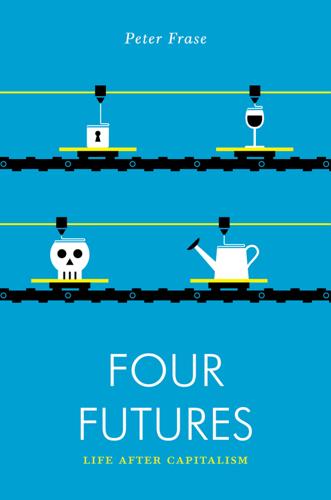
Four Futures: Life After Capitalism
by
Peter Frase
Published 10 Mar 2015
Perhaps this is why so many of Vonnegut’s apprehensions about automation remain intractable anxieties, afflicting both our economic conversations and our popular culture. Even when we hate our jobs, sometimes we still lean on them as sources of identity and social worth. Many cannot imagine a world beyond work as anything but one of dissipation and sloth. The 2008 animated movie WALL-E, for example, portrays a world where all humans have departed a ruined Earth and live lives of leisure in fully automated starships. But the sympathetic protagonist of the movie is a sentient robot, left behind on Earth to pick up trash—a worker, in other words. The humans, by contrast, are grotesque—obese and torpid parodies of consumerism.
…
This is far from guaranteed, but there are hopeful indicators for our ability to stabilize the climate, find sources of clean energy, and use resources wisely. These will be discussed further in Chapter 3. But with the scarcity problem solved, would we all just sit around in dissipation and torpor as in WALL-E? Not if, as Marx put it, “labor has become not only a means of life but life’s prime want.” Whatever activities and projects we undertook, we would participate in them because we found them inherently fulfilling, not because we needed a wage or owed our monthly hours to the cooperative. This is hardly so implausible in many areas, considering the degree to which decisions about work are already driven by nonmaterial considerations, among those who are privileged enough to have the option: millions of people choose to become teachers or social workers, or start small organic farms, even when far more lucrative careers are open to them.

The Equality Machine: Harnessing Digital Technology for a Brighter, More Inclusive Future
by
Orly Lobel
Published 17 Oct 2022
Mining through lists of movie robots, a compilation of seventy-seven different major AI characters across sixty-two films, spanning from 1927 (Metropolis) to 2015 (Ex Machina), reveals a striking imbalance. A large majority of bot actors are male: fifty-seven male bots compared to only seventeen female. Hollywood has long depicted robots as conforming to gender norms. For example, in Pixar’s Wall-E, Wall-E’s female robot friend Eve is clean, slick, and smooth, while Wall-E is rough and grubby. And, to produce the next generation, Wall-E literally puts his seed in Eve’s belly. Many bots in film have been male fighter robots. There is also a version of a female killer bot, one that Turkish critical scholar Leman Giresunlu has called the “cyborg goddess.” Notably, a “cyborg” differs from a “robot”: a robot is an advanced machine with a degree of intelligence, whereas a cyborg is a combination of a living being and a machine.
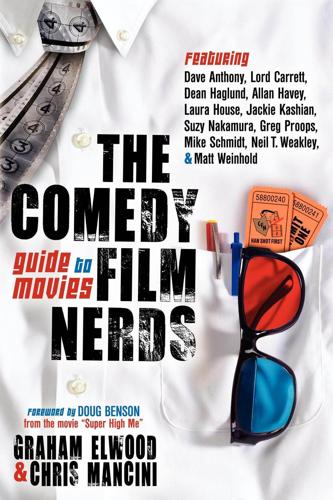
The Comedy Film Nerds Guide to Movies
by
Graham Elwood
and
Chris Mancini
Published 31 May 2012
But what is it about science fiction that makes it so attractive and like no other genre? I think it’s that science fiction films (and other media) offer two basic but very different views of the future: Utopian and Dystopian. Guess which of our favorite movies fall under? Of course, dystopian when the robots (The Terminator) or trash (Wall-E) take over. There’s much more fucked up shit going on in Blade Runner than there is in Star Trek. One has rogue robots killing people, the other has a holodeck where you can play tennis. The ultimate dystopian future film would have to be The Terminator. Even before Arnold Schwarzenegger became governor.
…
Side note: I don’t fucking care what you’re having for lunch. UNFOLLOW. But, broadening out from the questions asked, science fiction films often give us a cautionary tale of the consequences of giving over too much power to ANYTHING, be it government (V for Vendetta), robots (The Terminator, I Robot), corporations (Wall-E, Soylent Green, Robocop, etc), or angry monkeys (Planet of the Apes). Ultimately, science fiction films stimulate the imagination like no other genre. They wash over us in a darkened theater and show us what could be, and often what we could be, in the future. Will we be even more detached as a people, or more connected?
…
(1954) – 42 There’s Something About Mary (1998) – 60 They Live (1988) – 199 They Saved Hitler’s Brain (1968) – 198 Thief (1981) – 152, 153, 154, 155, 157 The Thin Man (1934) – 211 The Thing (1982) – 44, 47 This Is Spinal Tap (1984) – 59, 61, 74, 201 Thor (2011) – 30 The Three Stooges Meet Hercules (1962) – 37 Through A Glass Darkly (1961) – 135, 136 Tideland (2005) – 202 The Tillman Story (2010) – 125 Time Bandits (1981) – 138 The Tingler (1959) – 43, 44 Titan A.E. (2000) – 186 Titanic (1997) – 144 Tom and Jerry: The Movie (1992) – 86 Tombs of the Blind Dead (1972) – 49 Tommy (1975) – 73, 119 The Tooth Fairy (2010) – 226, 227 Tootsie (1982) – 61 Top Dog (1995) – 225 Top Hat (1935) – 118 Total Recall (1990) – 3 Touch of Evil (1958) – 112 Toy Story (1995) – 81, 184 Toy Story 2 (1999) – 184 Toy Story 3 (2010) – 184 Training Day (2001) – 152 Transformers (2007) – 138 Transformers: Revenge of the Fallen (2009) – 9 Transformers: Dark of the Moon (2011) – 9 Treasure Island (1950) – 180 A Trip to the Moon (1902) – 2, 135, 140 Triumph of the Will (1935) – 134 Troll 2 (1990) – 47, 215 TrollHunter (2010) – 49 A Troll in Central Park (1994) – 86 TRON (1982) – 208 TRON: Legacy (2010) – 208 Tropic Thunder (2008) – 55 The Truck Farmer (1954) – 131 True Grit (1969) – 13, 17 True Grit (2010) – 13, 16 Tucker and Dale Vs Evil (2010) – 49 Turner & Hooch (1989) – 159 Twelve Monkeys (1995) – 202 Twilight (2008) – 138 Twins (1988) – 91 Two Weeks Notice (2002) – 146, 216 The Ugly Truth (2009) – 144, 145, 149 U UHF (1989) – 205 Un Chien Andalou (1929) – 140 Unbreakable (2000) – 223 The Undefeated (2011) – 132 Under the Cherry Moon (1986) – 75 Unfaithful (2002) – 176 Unforgiven (1992) – 11, 17 Universal Soldier (1992) – 92 The Unknown (1927) – 49 Up (2009) – 59, 81, 85, 181, 182, 185 V V For Vendetta (2006) – 7 Vampire Hunter D (1985) – 82 The Vampire Lovers (1970) – 43 The Vanishing (1993) – 227 Victor Victoria (1982) – 118, 121 The Village (2004) – 50, 223, 224 The Villain (1979) – 14, 17 W Wagons East (1994) – 14, 17 Waiting for Superman (2010) – 131 Walk Hard: The Dewey Cox Story (2007) – 75 A Walk in the Clouds (1995) – 178 Walk The Line (2005) – 73 Wall-E (2008) – 4, 7 Wallace & Gromit in the Curse of the Were-Rabbit (2005) – 84 The Warriors (1979) – 204 Watchmen (2009) – 23, 27, 29 Watership Down (1978) – 83 Waterworld (1995) – 1, 18 The Way of the Dragon (1972) – 194 The Wedding Singer (1998) – 146 Weekend at Bernie’s II (1993) – 63 We’re Back: A Dinosaur Story (1993) – 86 West Side Story (1961) – 46, 118, 123 When Harry Met Sally (1989) – 145, 146, 148 When We Were Kings (1996) – 128, 130 While You Were Sleeping (1995) – 146 White Men Can’t Jump (1992) – 166, 167 Who Framed Roger Rabbit?
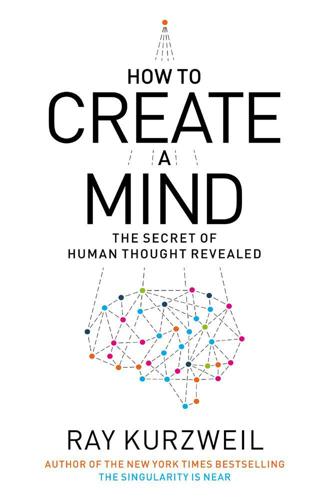
How to Create a Mind: The Secret of Human Thought Revealed
by
Ray Kurzweil
Published 13 Nov 2012
But putting the time frame aside, I believe that we will eventually come to regard such entities as conscious. Consider how we already treat them when we are exposed to them as characters in stories and movies: R2D2 from the Star Wars movies, David and Teddy from the movie A.I., Data from the TV series Star Trek: The Next Generation, Johnny 5 from the movie Short Circuit, WALL-E from Disney’s movie Wall-E, T-800—the (good) Terminator—in the second and later Terminator movies, Rachael the Replicant from the movie Blade Runner (who, by the way, is not aware that she is not human), Bumblebee from the movie, TV, and comic series Transformers, and Sonny from the movie I, Robot. We do empathize with these characters even though we know that they are nonbiological.
…
G., 75 technology, as compensating for human limitation, 3, 27, 276, 279 Technology Review, 266 Tegmark, Max, 208 Terminator films, 210 testosterone, 118 thalamus, 36, 77, 95, 97, 97, 98–101 as gateway to neocortex, 100–101 thermodynamics, 177 laws of, 37, 267 Thiel, Peter, 156 thinking: computing compared with, 26–27 disorderliness of, 55, 69 language as translation of, 56, 68 limitations to, 23–24, 27 redundancy and, 57 as statistical analysis, 170 statistical probability and, 270–71 thought experiments on, 24, 25–33 undirected vs. directed, 54–55, 68–69 see also hierarchical thinking thought experiments, 114 “Chinese room,” 170, 274–75 on computer consciousness, 202, 210 of Darwin, 14–16, 23 of Einstein, 18–23, 114, 117 on identity, 242–47 on the mind, 199–247 on thinking, 24, 25–33 of Turing, 185–87, 188 Thrun, Sebastian, 158 time, Einstein’s thought experiments on, 19–20 tool making, by humans, 3, 27, 276, 279 Tractatus Logico-Philosophicus (Wittgenstein), 219–21 Transcend: Nine Steps to Living Well Forever (Kurzweil and Grossman), 287n–88n Transformers films, 210 transistors: per chip, growth in, 258, 301n–3n price decrease in, 260, 304n–6n three-dimensional, 268 Turing, Alan, 121, 159–60, 185, 191 thought experiments of, 185–87, 188 unsolvable problem theorem of, 187, 207–8 Turing machine, 185–87, 186, 188, 192, 207–8 Turing test, 159–60, 169, 170, 178, 191, 213, 214, 233, 276, 298n UIMA (Unstructured Information Management Architecture), 167–68 Ulam, Stan, 194 Unitarianism, 222 universality of computation, 26, 181–82, 185, 188, 192, 207 universe, as capable of encoding information, 2 University College (London), 118 unsolvable problems, Turing’s theorem of, 187, 207–8 vasopressin, 119 vector quantization, 135, 138–39, 145 invariance and, 141 ventral pallidum, 105 Vicarious Systems, 156 visual association, 77 visual cortex, 7, 77, 83, 95, 193 of congenitally blind people, 87 digital simulation of, 128 hierarchical structure of, 85–86 V1 region, 83, 85, 87, 95, 100 V2 region of, 83, 85, 87, 95 V5 (MT) region of, 83, 95 visual information processing, 94–96, 95, 96 visual pathway, 95 visual recognition systems, 53 von Neumann, John, 179, 186–89, 190, 195 brain/computer comparison of, 191–95 stored program concept of, 186–87, 188 von Neumann machine, 187–89, 190, 193 Voyage of the Beagle (Darwin), 14 Wall-E (film), 210 Watson (IBM computer), 6–7, 108, 157–58, 159, 160, 165, 166, 167–68, 171, 172, 178, 200, 232–33, 239, 247, 265, 270–71, 274 Watson, James D., 8–9, 16–17 Watts, Lloyd, 96 wave function, collapse of, 218–19, 235–36 Wedeen, Van J., 82–83, 90, 129, 262 Werblin, Frank S., 94–95 Whitehead, Alfred North, 181 Whole Brain Emulation: A Roadmap (Sandberg and Bostrom), 129–30, 130, 131 Wiener, Norbert, 115, 143 Wikipedia, 6, 156, 166, 170, 176, 232, 270, 279 Wittgenstein, Ludwig, 219–21 Wolfram, Stephen, 170–71, 177, 236–39 Wolfram Alpha, 161, 170–72, 177 Wolfram Research, 170–71 working memory, 101 World War I, 278 World War II, 187, 278 writing, as backup system, 123–24 Young, Thomas, 18 Z-3 computer, 189 Zuo, Yi, 89 Zuse, Konrad, 189

Hit Refresh: The Quest to Rediscover Microsoft's Soul and Imagine a Better Future for Everyone
by
Satya Nadella
,
Greg Shaw
and
Jill Tracie Nichols
Published 25 Sep 2017
The combination of cloud computing, sensors, Big Data, machine learning, and Artificial Intelligence (AI), mixed reality, and robotics foreshadows socioeconomic change ripped from the pages of science fiction. There is a wide and growing spectrum of debate about the implications of this coming wave of intelligent technologies. On the one hand, Pixar’s film WALL-E paints a portrait of eternal relaxation for humans who rely on robots for the hard work. But on the other, scientists like Stephen Hawking warn of doom. The most compelling argument was to write for my colleagues—Microsoft’s employees—and for our millions of customers and partners. After all, on that cold February day in 2014 when Microsoft’s board of directors announced that I would become CEO, I put the company’s culture at the top of our agenda.
…
Supreme Court, 177, 185 universal basic income, 239–40 University of California at Santa Barbara, 162 University of Chicago, 29 University of Pennsylvania, 184 University of Wisconsin, 22–26 UNIX, 26, 29, 128 Upside of Inequality, The (Conard), 220 asphyxia in utero, 8 Vairavan, Dr., 23 values, 76, 182, 205 Vancouver, 92–93 Vanity Fair, 73–74 venture capital, 199 vice presidents, 118–19 videogames, 103, 106–8, 127 video-on-demand (VOD), 30 video surveillance cameras, 153 Vietnam, 170 virtual reality, 144–45, 228 visual crowding, 104 visual recognition, 76, 89, 150–51, 200 Visual Studio, 58, 59 vocational training, 227 Volvo, 153 Von Neumann, John, 26 WALL-E (film), 13 Wall Street Journal, 179, 230 Wal-Mart, 3 Washington Post, 80 Watsa, Prem, 20 Web, 49, 99. See also Internet websites, 28 Weiner, Jeff, 137–38, 182, 232 Westworld (film), 149–50 WHiPS (Windows High-Powered Summits), 108–9 Widmer, Ted, 24 Willans, Geoffrey, 154–55 Williams, Emma, 158 Windows, 2, 26–27, 46, 47, 53, 68, 71–72, 89, 103, 109, 125, 137, 222 devices run on, in ICU, 41–42 free upgrades, 105–6 future PC platform and, 110 mobile devices, 59 point-of-sales market, 129 Windows 3.1, 28 Windows 8, 66 Windows 10, 28, 85, 89, 97–100, 134, 144 upgrades, 42 Windows 10 MR devices, 144 Windows 95, 28, 98 Windows Mixed Reality, 89 Windows NT, 28–30, 128 Windows Phone, 67, 72–73 Windows Server, 53, 55 Windows Vista, 147 Windows XP, 147 Wired, 234 women, 111–17, 218 Women @ Microsoft, 116–17.

Jaws
by
Sandra Kahn,Paul R. Ehrlich
Published 15 Jan 2018
But in your high chair or in your favorite restaurant today, you hardly have to chew at all.3 Relatively little chewing early in life can alter the development of your entire face, jaws, and airways.4 You don’t have to be a scientist to intuitively understand the trend away from chewing; even the writers and animators of the dystopian Pixar movie WALL•E understood this. They showed how all foods being liquefied, hamburgers manufactured to be sucked through straws, and lack of physical activity, not genetics, changed the faces and bodies of the humans traveling through space. What we chew, we emphasize, is closely linked to how much we chew. Chewing too little, as we have seen, is a major cause of the escalating problems of malocclusion.5 The increased frequency of crooked teeth is a signal of how serious oral-facial health problems have become in society.
…
See also Utensils Stress, 15–16 Stuffy noses, 6, 11, 27, 43, 45, 65–66, 98–99 Sudden infant death syndrome (SIDS), 60 Sugarcane, 31 Supralaryngeal vocal tract (SVT), 61 Swallowing, 5, 115–117, 116, 117 Sweet foods, 31 Tape technique, for proper breathing, 102 Tarahumara Native Americans, 101 Teeth clenching/grinding, 82–83 Temporomandibular joint (TMJ), 110, 111, 139 Tongue position, 5, 35, 36, 61, 79, 133 Tonsils, 59, 80, 85, 99 Tooth decay, 24, 32, 35, 75 Tooth extraction: detrimental effects of, 136–137, 137, 142; orthodontic use of, 2, 5, 110, 112, 143, 146; of wisdom teeth, 27 Tooth wear, 9, 34 Touchette, Evelyne, 152 Traditional environments. See Indigenous peoples Twin Block oral appliance, 125 Utensils, 30, 69. See also Stone tools Uvulopalatopharyngeoplasty (U-triple P), 85 WALL•E (film), 41 Weaning, 11, 19, 33, 62, 67–70, 67, 89, 90, 91, 116 Wellington, Duke of, 51–52, 52, 70 White Western standards of beauty, 49, 54 Wisdom teeth, 2, 6, 9, 27, 32, 33 Wong, Simon, 103, 107, 127 Work, time devoted to, 95–96 Writing, 29
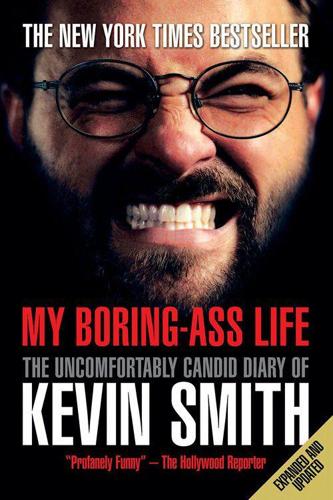
My Boring-Ass Life: The Uncomfortably Candid Diary of Kevin Smith
by
Kevin Smith
Published 24 Sep 2007
Nolan and crew have created something close to a masterpiece. Also in the Masterpiece Department... If you haven’t already peeped Wall-E, get thee to a theater. It’s the ballsiest animated film ever made (right up there with Persepolis, in terms of untraditional cartoons), yet it’ll melt your heart. Seriously — Wall-E’s so adorable, he makes E.T. look like Josef Mengele. Alright, maybe not Mengele, but at least Rudolf Hess. Y’know what? Let’s drop the Nazi comparisons altogether and just leave it at this: Wall-E (the character) is adorable and Wall-E (the film) is a must-see. In the Far-Less-Than-a-Masterpiece department, Zack and Miri Make a Porno continues to move ever closer to its October 31st release date.
…
Johnny Rotten at Poetry Event 404 Lewis, Juliette, receives massage from 206 Longoria, Eva, regrets mentioning she likes vibrators 409 M Mallrats, original opening of 263-72 Man boobs, refuses to show on screen 204 ‘Me and My Shadow’ 328-95 Mengele, Josef, E.T. looks like in comparison to adorableness of Wall-E 491 Mullet, bickers about with wife 69 NEH!, Mewes’s use of as verbal punctuation 331 Nose-picking 416 O Ontari-asses 494 Orient, lick-master from the 419 P Penetration, double, Mewes prefers Murder She Wrote to 353 Penile growth spurt, lack of 429 Playlist, unedited version of 444-50 Proctologist’s office, unexpected sighting of Sidney Poitier in 301 Pussy, opts for Peter Parker over 214 Q Quinnster, Harley, plays tickle monster with 168, 171, 177 R Revenge of the Sith, genetic predisposition to love 66 Rickman, Alan, Mewes memorizes entire script to avoid pissing off 343-4 Rogen, Seth, practically blown by Kevin 478 S Schwalbach, Jennifer, tugs one out to nude photos of 21 Scully, face licked by 80 Sex, anal, tips on 416-9 Siegel, Joel, Fozzie Bear laughs at, not with 420 Skywalker Ranch, reluctance to fart in 396 SNIKT!
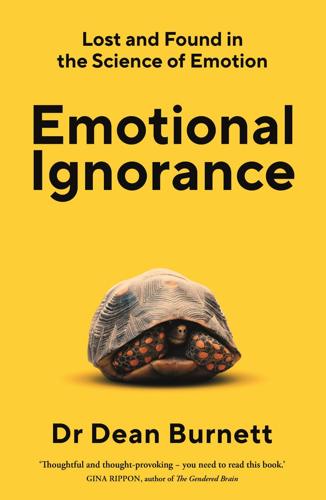
Emotional Ignorance: Lost and Found in the Science of Emotion
by
Dean Burnett
Published 10 Jan 2023
I’ve already revealed I’m a big Pixar fan, and, via their output, the studio has managed to get millions of people emotionally invested in CGI representations of toys, monsters, cars, rats, and even, in the case of the beloved WALL-E, what is essentially an elaborate box. But Pixar also clearly know the limits of conveying emotions via technology. None of their human characters have 100 per cent realistic human dimensions, thus avoiding the uncanny valley. And actual humans voice every character, because computer-generated voices remain off-putting.¶¶ And while Pixar’s efforts tend to succeed, others regularly miss the mark. For every loveable bunch of charming characters found in films like Toy Story or WALL-E, there’s the unsettling array of monstrosities in Mars Needs Moms, or gang of glassy-eyed nightmare children in Polar Express.
…
But the impact of his original work is clearly beyond his control at this point. ‡‡ The Simpsons, one of if not the most popular animated series of all time, is a good one for this. §§ As an experienced cadaver embalmer, I can confirm this. ¶¶ Pixar even used this to their advantage in the aforementioned WALL-E. Every machine character in that film is voiced by a human, except the ship’s autopilot, the film’s antagonist. It has a synthetic voice, making it seem cold and unsympathetic. ||| I was also told lockdowns were unnecessary because COVID-19 would only kill 1 per cent of people. In the UK alone, that’s around 700,000 lives, a higher death toll than that inflicted by World War II. ## Also, if you want me really angry, please continue lecturing me on how I ‘should’ grieve. *** What counts as a ‘thing’ varies between situations, because that’s the brain for you. ††† Consider how much news coverage is dedicated to sports, and celebrity antics.
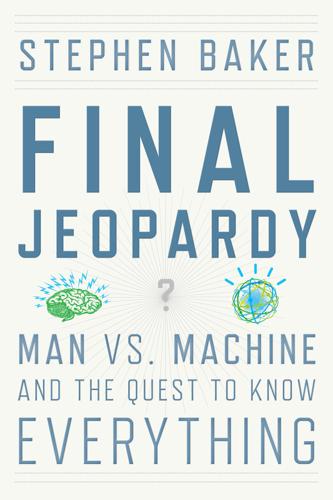
Final Jeopardy: Man vs. Machine and the Quest to Know Everything
by
Stephen Baker
Published 17 Feb 2011
That didn’t make sense, though, because Watson would already be an adult by the time it showed up on TV. (And Jeopardy apparently wasn’t going to give IBM airtime to describe the education of young Watson.) The Ogilvy team also considered other types of figures. A new Pixar movie that year featured Wall-E, a lovable robot. Perhaps that was the right path for Watson. Whether it was a cartoon figure or a bot like Wall-E, much of the discussion boiled down to how human Watson should be. The marketers feared that millions of viewers might find it unsettling if the computer looked or acted too much like a real person. Science fiction was full of evil “human” computers.
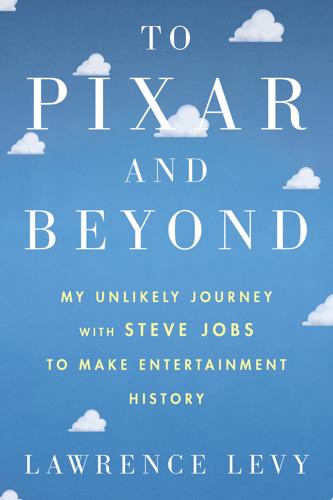
To Pixar and Beyond
by
Lawrence Levy
Steve was now Disney’s largest stockholder, and the value of his stock in Disney would eventually soar to over $13 billion, making his investment in Pixar by far the largest source of his personal wealth. Almost overnight, Pixar restored Disney’s dominance in animation, producing a string of hits including Cars, Ratatouille, Wall-E, Up, Toy Story 3, Brave, and Inside Out. Ed and John successfully turned around Disney Animation which, in 2013, released Frozen, which became the highest-grossing animated feature film of all time. Further, Steve, whose health tragically continued to decline, was freed of the burdens of running Pixar.
…
Years earlier Steve had orchestrated the building of Pixar’s campus in Emeryville, just across the Bay Bridge, tucked to the south of the Berkeley Hills. It had been a couple of years since I had visited Pixar, but I never tired of seeing the film posters that lined the walls. The Incredibles, Cars, Wall-E, Finding Nemo, Monsters, Inc., Up, Ratatouille, Brave—who could have imagined such a legacy from Pixar’s humble beginnings? Pixar’s campus was not the only thing that had changed. Jenna, our Toy Story baby, was now nineteen, a sophomore at the University of Washington in Seattle, majoring in psychology and communications.
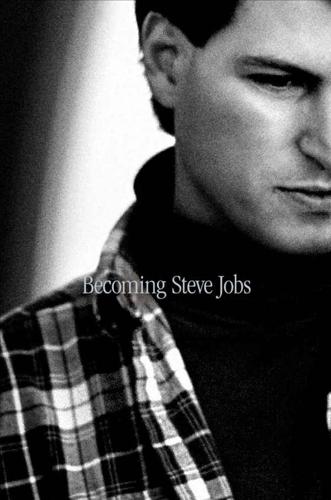
Becoming Steve Jobs: The Evolution of a Reckless Upstart Into a Visionary Leader
by
Brent Schlender
and
Rick Tetzeli
Published 24 Mar 2015
Lasseter, Andrew Stanton, Pete Docter, and Joe Ranft worked together to create the script, eventually with help from other writers, including Joss Whedon, who would go on to create the Buffy the Vampire Slayer TV series and to direct movies such as The Avengers. The team on Toy Story would turn out to be remarkably productive, and exceedingly close-knit. Stanton would direct Pixar’s second movie, A Bug’s Life, as well as Finding Nemo and Wall-E. Docter would direct Monsters, Inc. and Up, while Ranft would serve as cowriter and story chief on several pictures, until his death in a car crash in 2005. The four men became the core of what Catmull calls the Brain Trust—a collection of Pixar writers, directors, and animators who provide constructive criticism to the director of every Pixar movie.
…
The four men became the core of what Catmull calls the Brain Trust—a collection of Pixar writers, directors, and animators who provide constructive criticism to the director of every Pixar movie. It’s a unique idea—the Brain Trust has no authority whatsoever, and the directors are only asked to listen and deeply consider the advice of its members. It became a powerful tool, helping to reshape movies like The Incredibles and Wall-E. But Steve was never a part of it. Catmull kept him out of those discussions, because he felt that Steve’s big personality would skew the proceedings. Watching Lasseter, Stanton, Docter, and Ranft develop Toy Story, Steve was witnessing creative thinking at its best—meaning it was chock-full of failures and dead ends.
…
So I go up to Emeryville, and for six or seven hours the directors pitch me every single upcoming movie. I see a couple of movies that they didn’t wind up making [one called Newt, and the other an unnamed Lee Unkrich project about dogs in a New York City apartment building]. I also see work in progress from Ratatouille, Up, Wall-E. Disney hadn’t seen any of this, and I went back to my guys—including Alan Braverman, the general counsel—and told them that it wasn’t even close. The richness of the creativity, the quality of the people, was so obvious. We had to do this deal.” With Lasseter and Catmull feeling more comfortable, Steve homed in on the final details of a deal.

I, Warbot: The Dawn of Artificially Intelligent Conflict
by
Kenneth Payne
Published 16 Jun 2021
We can certainly learn something about AI warfare from popular culture, especially when thinking about the near future. But we need to be careful: the movies have created unrealistic expectations about AI. Wilful robots and the efforts of humans to control them are both Hollywood staples. From the arty highbrow of Stanley Kubrick’s 2001: A Space Odyssey and Alex Garland’s Ex_Machina to the knockabout fun of Wall-e and Austin Powers, the basic conceit is the same: Hollywood’s AI is human-like, while being not quite human. Often these almost-human robots have malign intentions. All of which points to an interesting feature of many AI discussions—the connection between science fact and science fiction. Articles about AI in the popular media are frequently accompanied by a picture of Arnie as the Terminator, his robotic eyes glowing a sinister shade of red.
…
A-10 Warthog abacuses Abbottabad, Pakistan Able Archer (1983) acoustic decoys acoustic torpedoes Adams, Douglas Aegis combat system Aerostatic Corps affective empathy Affecto Afghanistan agency aircraft see also dogfighting; drones aircraft carriers algorithms algorithm creation Alpha biases choreography deep fakes DeepMind, see DeepMind emotion recognition F-117 Nighthawk facial recognition genetic selection imagery analysis meta-learning natural language processing object recognition predictive policing alien hand syndrome Aliens (1986 film) Alpha AlphaGo Altered Carbon (television series) Amazon Amnesty International amygdala Andropov, Yuri Anduril Ghost anti-personnel mines ants Apple Aristotle armour arms races Army Research Lab Army Signal Corps Arnalds, Ólafur ARPA Art of War, The (Sun Tzu) art Artificial Intelligence agency and architecture autonomy and as ‘brittle’ connectionism definition of decision-making technology expert systems and feedback loops fuzzy logic innateness intelligence analysis meta-learning as ‘narrow’ needle-in-a-haystack problems neural networks reinforcement learning ‘strong AI’ symbolic logic and unsupervised learning ‘winters’ artificial neural networks Ashby, William Ross Asimov, Isaac Asperger syndrome Astute class boats Atari Breakout (1976) Montezuma’s Revenge (1984) Space Invaders (1978) Athens ATLAS robots augmented intelligence Austin Powers (1997 film) Australia authoritarianism autonomous vehicles see also drones autonomy B-21 Raider B-52 Stratofortress B2 Spirit Baby X BAE Systems Baghdad, Iraq Baidu balloons ban, campaigns for Banks, Iain Battle of Britain (1940) Battle of Fleurus (1794) Battle of Midway (1942) Battle of Sedan (1940) batwing design BBN Beautiful Mind, A (2001 film) beetles Bell Laboratories Bengio, Yoshua Berlin Crisis (1961) biases big data Bin Laden, Osama binary code biological weapons biotechnology bipolarity bits Black Lives Matter Black Mirror (television series) Blade Runner (1982 film) Blade Runner 2049 (2017 film) Bletchley Park, Buckinghamshire blindness Blunt, Emily board games, see under games boats Boden, Margaret bodies Boeing MQ-25 Stingray Orca submarines Boolean logic Boston Dynamics Bostrom, Nick Boyd, John brain amygdala bodies and chunking dopamine emotion and genetic engineering and language and mind merge and morality and plasticity prediction and subroutines umwelts and Breakout (1976 game) breathing control brittleness brute force Buck Rogers (television series) Campaign against Killer Robots Carlsen, Magnus Carnegie Mellon University Casino Royale (2006 film) Castro, Fidel cat detector centaur combination Central Intelligence Agency (CIA) centre of gravity chaff Challenger Space Shuttle disaster (1986) Chauvet cave, France chemical weapons Chernobyl nuclear disaster (1986) chess centaur teams combinatorial explosion and creativity in Deep Blue game theory and MuZero as toy universe chicken (game) chimeras chimpanzees China aircraft carriers Baidu COVID-19 pandemic (2019–21) D-21 in genetic engineering in GJ-11 Sharp Sword nuclear weapons surveillance in Thucydides trap and US Navy drone seizure (2016) China Lake, California Chomsky, Noam choreography chunking Cicero civilians Clarke, Arthur Charles von Clausewitz, Carl on character on culmination on defence on genius on grammar of war on materiel on nature on poker on willpower on wrestling codebreaking cognitive empathy Cold War (1947–9) arms race Berlin Crisis (1961) Cuban Missile Crisis (1962) F-117 Nighthawk Iran-Iraq War (1980–88) joint action Korean War (1950–53) nuclear weapons research and SR-71 Blackbird U2 incident (1960) Vienna Summit (1961) Vietnam War (1955–75) VRYAN Cole, August combinatorial creativity combinatorial explosion combined arms common sense computers creativity cyber security games graphics processing unit (GPU) mice Moore’s Law symbolic logic viruses VRYAN confirmation bias connectionism consequentialism conservatism Convention on Conventional Weapons ConvNets copying Cormorant cortical interfaces cost-benefit analysis counterfactual regret minimization counterinsurgency doctrine courageous restraint COVID-19 pandemic (2019–21) creativity combinatorial exploratory genetic engineering and mental disorders and transformational criminal law CRISPR, crows Cruise, Thomas Cuban Missile Crisis (1962) culmination Culture novels (Banks) cyber security cybernetics cyborgs Cyc cystic fibrosis D-21 drones Damasio, Antonio dance DARPA autonomous vehicle research battlespace manager codebreaking research cortical interface research cyborg beetle Deep Green expert system programme funding game theory research LongShot programme Mayhem Ng’s helicopter Shakey understanding and reason research unmanned aerial combat research Dartmouth workshop (1956) Dassault data DDoS (distributed denial-of-service) dead hand system decision-making technology Deep Blue deep fakes Deep Green DeepMind AlphaGo Atari playing meta-learning research MuZero object recognition research Quake III competition (2019) deep networks defence industrial complex Defence Innovation Unit Defence Science and Technology Laboratory defence delayed gratification demons deontological approach depth charges Dionysus DNA (deoxyribonucleic acid) dodos dogfighting Alpha domains dot-matrix tongue Dota II (2013 game) double effect drones Cormorant D-21 GJ-11 Sharp Sword Global Hawk Gorgon Stare kamikaze loitering munitions nEUROn operators Predator Reaper reconnaissance RQ-170 Sentinel S-70 Okhotnik surveillance swarms Taranis wingman role X-37 X-47b dual use technology Eagleman, David early warning systems Echelon economics Edge of Tomorrow (2014 film) Eisenhower, Dwight Ellsberg, Daniel embodied cognition emotion empathy encryption entropy environmental niches epilepsy epistemic community escalation ethics Asimov’s rules brain and consequentialism deep brain stimulation and deontological approach facial recognition and genetic engineering and golden rule honour hunter-gatherer bands and identity just war post-conflict reciprocity regulation surveillance and European Union (EU) Ex Machina (2014 film) expert systems exploratory creativity extra limbs Eye in the Sky (2015 film) F-105 Thunderchief F-117 Nighthawk F-16 Fighting Falcon F-22 Raptor F-35 Lightning F/A-18 Hornet Facebook facial recognition feedback loops fighting power fire and forget firmware 5G cellular networks flow fog of war Ford forever wars FOXP2 gene Frahm, Nils frame problem France Fukushima nuclear disaster (2011) Future of Life Institute fuzzy logic gait recognition game theory games Breakout (1976) chess, see chess chicken Dota II (2013) Go, see Go Montezuma’s Revenge (1984) poker Quake III (1999) Space Invaders (1978) StarCraft II (2010) toy universes zero sum games gannets ‘garbage in, garbage out’ Garland, Alexander Gates, William ‘Bill’ Gattaca (1997 film) Gavotti, Giulio Geertz, Clifford generalised intelligence measure Generative Adversarial Networks genetic engineering genetic selection algorithms genetically modified crops genius Germany Berlin Crisis (1961) Nuremburg Trials (1945–6) Russian hacking operation (2015) World War I (1914–18) World War II (1939–45) Ghost in the Shell (comic book) GJ-11 Sharp Sword Gladwell, Malcolm Global Hawk drone global positioning system (GPS) global workspace Go (game) AlphaGo Gödel, Kurt von Goethe, Johann golden rule golf Good Judgment Project Google BERT Brain codebreaking research DeepMind, see DeepMind Project Maven (2017–) Gordievsky, Oleg Gorgon Stare GPT series grammar of war Grand Challenge aerial combat autonomous vehicles codebreaking graphics processing unit (GPU) Greece, ancient grooming standard Groundhog Day (1993 film) groupthink guerilla warfare Gulf War First (1990–91) Second (2003–11) hacking hallucinogenic drugs handwriting recognition haptic vest hardware Harpy Hawke, Ethan Hawking, Stephen heat-seeking missiles Hebrew Testament helicopters Hellfire missiles Her (2013 film) Hero-30 loitering munitions Heron Systems Hinton, Geoffrey Hitchhiker’s Guide to the Galaxy, The (Adams) HIV (human immunodeficiency viruses) Hoffman, Frank ‘Holeshot’ (Cole) Hollywood homeostasis Homer homosexuality Hongdu GJ-11 Sharp Sword honour Hughes human in the loop human resources human-machine teaming art cyborgs emotion games King Midas problem prediction strategy hunter-gatherer bands Huntingdon’s disease Hurricane fighter aircraft hydraulics hypersonic engines I Robot (Asimov) IARPA IBM identity Iliad (Homer) image analysis image recognition cat detector imagination Improbotics nformation dominance information warfare innateness intelligence analysts International Atomic Energy Agency International Criminal Court international humanitarian law internet of things Internet IQ (intelligence quotient) Iran Aegis attack (1988) Iraq War (1980–88) nuclear weapons Stuxnet attack (2010) Iraq Gulf War I (1990–91) Gulf War II (2003–11) Iran War (1980–88) Iron Dome Israel Italo-Turkish War (1911–12) Jaguar Land Rover Japan jazz JDAM (joint directed attack munition) Jeopardy Jobs, Steven Johansson, Scarlett Johnson, Lyndon Joint Artificial Intelligence Center (JAIC) de Jomini, Antoine jus ad bellum jus in bello jus post bellum just war Kalibr cruise missiles kamikaze drones Kasparov, Garry Kellogg Briand Pact (1928) Kennedy, John Fitzgerald KGB (Komitet Gosudarstvennoy Bezopasnosti) Khrushchev, Nikita kill chain King Midas problem Kissinger, Henry Kittyhawk Knight Rider (television series) know your enemy know yourself Korean War (1950–53) Kratos XQ-58 Valkyrie Kubrick, Stanley Kumar, Vijay Kuwait language connectionism and genetic engineering and natural language processing pattern recognition and semantic webs translation universal grammar Law, Jude LeCun, Yann Lenat, Douglas Les, Jason Libratus lip reading Litvinenko, Alexander locked-in patients Lockheed dogfighting trials F-117 Nighthawk F-22 Raptor F-35 Lightning SR-71 Blackbird logic loitering munitions LongShot programme Lord of the Rings (2001–3 film trilogy) LSD (lysergic acid diethylamide) Luftwaffe madman theory Main Battle Tanks malum in se Manhattan Project (1942–6) Marcus, Gary Maslow, Abraham Massachusetts Institute of Technology (MIT) Matrix, The (1999 film) Mayhem McCulloch, Warren McGregor, Wayne McNamara, Robert McNaughton, John Me109 fighter aircraft medical field memory Merkel, Angela Microsoft military industrial complex Mill, John Stuart Milrem mimicry mind merge mind-shifting minimax regret strategy Minority Report (2002 film) Minsky, Marvin Miramar air base, San Diego missiles Aegis combat system agency and anti-missile gunnery heat-seeking Hellfire missiles intercontinental Kalibr cruise missiles nuclear warheads Patriot missile interceptor Pershing II missiles Scud missiles Tomahawk cruise missiles V1 rockets V2 rockets mission command mixed strategy Montezuma’s Revenge (1984 game) Moore’s Law mosaic warfare Mueller inquiry (2017–19) music Musk, Elon Mutually Assured Destruction (MAD) MuZero Nagel, Thomas Napoleon I, Emperor of the French Napoleonic France (1804–15) narrowness Nash equilibrium Nash, John National Aeronautics and Space Administration (NASA) National Security Agency (NSA) National War College natural language processing natural selection Nature navigation computers Nazi Germany (1933–45) needle-in-a-haystack problems Netflix network enabled warfare von Neumann, John neural networks neurodiversity nEUROn drone neuroplasticity Ng, Andrew Nixon, Richard normal accident theory North Atlantic Treaty Organization (NATO) North Korea nuclear weapons Cuban Missile Crisis (1962) dead hand system early warning systems F-105 Thunderchief and game theory and Hiroshima and Nagasaki bombings (1945) Manhattan Project (1942–6) missiles Mutually Assured Destruction (MAD) second strike capability submarines and VRYAN and in WarGames (1983 film) Nuremburg Trials (1945–6) Obama, Barack object recognition Observe Orient Decide and Act (OODA) offence-defence balance Office for Naval Research Olympic Games On War (Clausewitz), see Clausewitz, Carl OpenAI optogenetics Orca submarines Ottoman Empire (1299–1922) pain Pakistan Palantir Palmer, Arnold Pandemonium Panoramic Research Papert, Seymour Parkinson’s disease Patriot missile interceptors pattern recognition Pearl Harbor attack (1941) Peloponnesian War (431–404 BCE) Pentagon autonomous vehicle research codebreaking research computer mouse development Deep Green Defence Innovation Unit Ellsberg leaks (1971) expert system programme funding ‘garbage in, garbage out’ story intelligence analysts Project Maven (2017–) Shakey unmanned aerial combat research Vietnam War (1955–75) perceptrons Perdix Pershing II missiles Petrov, Stanislav Phalanx system phrenology pilot’s associate Pitts, Walter platform neutrality Pluribus poker policing polygeneity Portsmouth, Hampshire Portuguese Man o’ War post-traumatic stress disorder (PTSD) Predator drones prediction centaur teams ‘garbage in, garbage out’ story policing toy universes VRYAN Prescience principles of war prisoners Project Improbable Project Maven (2017–) prosthetic arms proximity fuses Prussia (1701–1918) psychology psychopathy punishment Putin, Vladimir Pyeongchang Olympics (2018) Qinetiq Quake III (1999 game) radar Rafael RAND Corporation rational actor model Rawls, John Re:member (Arnalds) Ready Player One (Cline) Reagan, Ronald Reaper drones reciprocal punishment reciprocity reconnaissance regulation ban, campaigns for defection self-regulation reinforcement learning remotely piloted air vehicles (RPAVs) revenge porn revolution in military affairs Rid, Thomas Robinson, William Heath Robocop (1987 film) Robotics Challenge robots Asimov’s rules ATLAS Boston Dynamics homeostatic Shakey symbolic logic and Rome Air Defense Center Rome, ancient Rosenblatt, Frank Royal Air Force (RAF) Royal Navy RQ-170 Sentinel Russell, Stuart Russian Federation German hacking operation (2015) Litvinenko murder (2006) S-70 Okhotnik Skripal poisoning (2018) Ukraine War (2014–) US election interference (2016) S-70 Okhotnik SAGE Said and Done’ (Frahm) satellite navigation satellites Saudi Arabia Schelling, Thomas schizophrenia Schwartz, Jack Sea Hunter security dilemma Sedol, Lee self-actualisation self-awareness self-driving cars Selfridge, Oliver semantic webs Shakey Shanahan, Murray Shannon, Claude Shogi Silicon Valley Simon, Herbert Single Integrated Operations Plan (SIOP) singularity Siri situational awareness situationalist intelligence Skripal, Sergei and Yulia Slaughterbots (2017 video) Slovic, Paul smartphones Smith, Willard social environments software Sophia Sorcerer’s Apprentice, The (Goethe) South China Sea Soviet Union (1922–91) aircraft Berlin Crisis (1961) Chernobyl nuclear disaster (1986) Cold War (1947–9), see Cold War collapse (1991) Cuban Missile Crisis (1962) early warning systems Iran-Iraq War (1980–88) Korean War (1950–53) nuclear weapons radar technology U2 incident (1960) Vienna Summit (1961) Vietnam War (1955–75) VRYAN World War II (1939–45) Space Invaders (1978 game) SpaceX Sparta Spike Firefly loitering munitions Spitfire fighter aircraft Spotify Stanford University Stanley Star Trek (television series) StarCraft II (2010 game) stealth strategic bombing strategic computing programme strategic culture Strategy Robot strategy Strava Stuxnet sub-units submarines acoustic decoys nuclear Orca South China Sea incident (2016) subroutines Sukhoi Sun Tzu superforecasting surveillance swarms symbolic logic synaesthesia synthetic operation environment Syria Taliban tanks Taranis drone technological determinism Tempest Terminator franchise Tesla Tetlock, Philip theory of mind Threshold Logic Unit Thucydides TikTok Tomahawk cruise missiles tongue Top Gun (1986 film) Top Gun: Maverick (2021 film) torpedoes toy universes trade-offs transformational creativity translation Trivers, Robert Trump, Donald tumours Turing, Alan Twitter 2001: A Space Odyssey (1968 film) Type-X Robotic Combat Vehicle U2 incident (1960) Uber Uexküll, Jacob Ukraine ultraviolet light spectrum umwelts uncanny valley unidentified flying objects (UFOs) United Kingdom AI weapons policy armed force, size of Battle of Britain (1940) Bletchley Park codebreaking Blitz (1940–41) Cold War (1947–9) COVID-19 pandemic (2019–21) DeepMind, see DeepMind F-35 programme fighting power human rights legislation in Litvinenko murder (2006) nuclear weapons principles of war Project Improbable Qinetiq radar technology Royal Air Force Royal Navy Skripal poisoning (2018) swarm research wingman concept World War I (1914–18) United Nations United States Afghanistan War (2001–14) Air Force Army Research Lab Army Signal Corps Battle of Midway (1942) Berlin Crisis (1961) Bin Laden assassination (2011) Black Lives Matter protests (2020) centaur team research Central Intelligence Agency (CIA) Challenger Space Shuttle disaster (1986) Cold War (1947–9), see Cold War COVID-19 pandemic (2019–21) Cuban Missile Crisis (1962) culture cyber security DARPA, see DARPA Defense Department drones early warning systems F-35 programme Gulf War I (1990–91) Gulf War II (2003–11) IARPA Iran Air shoot-down (1988) Korean War (1950–53) Manhattan Project (1942–6) Marines Mueller inquiry (2017–19) National Security Agency National War College Navy nuclear weapons Office for Naval Research Patriot missile interceptor Pearl Harbor attack (1941) Pentagon, see Pentagon Project Maven (2017–) Rome Air Defense Center Silicon Valley strategic computing programme U2 incident (1960) Vienna Summit (1961) Vietnam War (1955–75) universal grammar Universal Schelling Machine (USM) unmanned aerial vehicles (UAVs), see drones unsupervised learning utilitarianism UVision V1 rockets V2 rockets Vacanti mouse Valkyries Van Gogh, Vincent Vietnam War (1955–75) Vigen, Tyler Vincennes, USS voice assistants VRYAN Wall-e (2008 film) WannaCry ransomware War College, see National War College WarGames (1983 film) warrior ethos Watson weapon systems WhatsApp Wiener, Norbert Wikipedia wingman role Wittgenstein, Ludwig World War I (1914–18) World War II (1939–45) Battle of Britain (1940) Battle of Midway (1942) Battle of Sedan (1940) Bletchley Park codebreaking Blitz (1940–41) Hiroshima and Nagasaki bombings (1945) Pearl Harbor attack (1941) radar technology V1 rockets V2 rockets VRYAN and Wrangham, Richard Wright brothers WS-43 loitering munitions Wuhan, China X-37 drone X-drone X-rays YouTube zero sum games
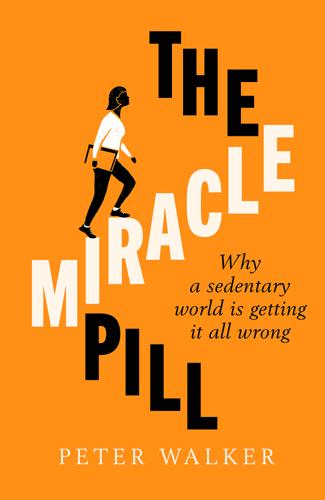
The Miracle Pill
by
Peter Walker
Published 21 Jan 2021
The academics calculated that on current trends, by 2030 the average American will, over an average week, expend only about 15 per cent more total bodily energy than someone who spent the entire seven days in bed.17 If that sounds worrying, it should be. The myth of personal choice In the 2008 Pixar film WALL·E, while the eponymous solitary robot endlessly cleans up a rubbish-ruined Earth, the people of the twenty-ninth century are portrayed as space-dwelling, corpulent, jumpsuit-dressed adult-babies, who spend their lives on mobile reclining chairs, a screen permanently at hand. It can be difficult to read studies about the seemingly unstoppable decline in human movement without viewing the film as prophetic, as well as an indictment of humanity’s collective decision to slide towards a future of indolence, lethargy and pharmaceutically managed ill-health.
…
actin (protein) 40 active applause 176–7, 180, 271 Active Ten app (Public Health England) 57, 269 adenosine triphosphate (ATP) 40, 41, 276 Aldred, Rachel 119–20, 139 Alzheimer’s disease 5, 49, 186, 226, 232, 233, 234 Agricultural Revolution/Agrarian Revolution 15–16 Amager Bakke/Copenhill waste-burning energy plant, Denmark 134–5 Amish people 17–18, 208 anaerobic respiration 40 Annual Travel Survey 3 anxiety 5, 50, 57, 112 Araujo, Claudio Gil 229–32 Aspern, Vienna 140 asthma 10–11, 160, 172, 209 Atlas, Charles (Angelo Siciliano) 31 Barnet Graph of Doom 100–1 basal metabolic rate (BMR) 51, 158, 191 Better (non-profit social enterprise) 224 BeUpstanding 195–6 bike couriers 11–13 Biobank public health project 114 biophilia 133 Bjarke Ingels Group (BIG) 132–5, 138–9 Blackburn, Elizabeth 41–2 Blair, Steven 19–20, 21, 46, 169–72, 275–6 blood pressure 5, 41, 46, 48, 57, 75, 90, 160, 225, 227, 265 Boardman, Chris 124–5, 127, 137, 264 BodPod 172–3, 174 body mass index (BMI) 146–7, 150–2, 161–4, 167, 170, 171, 172, 173, 193, 243 bone density/health 16–17, 22, 23, 44, 46, 49, 67, 101, 209, 223, 227–8 Boyd, Andrew 105–6 breast cancer 48, 160 British Medical Journal (BMJ) 64, 65, 80 Buchan, William: Domestic Medicine 63 Buchanan, Colin: Traffic in Towns 120–1 Buchanan, Nigel 203–4, 206, 207–8 Buchner, David 228 Bull, Fiona 98–9 Burden of Disease, WHO 47, 90 Burfoot, Amby 78, 79 Burnham, Andy 124, 264, 266 bus drivers, heart attack rates in London 61–2, 71–3 Bushy Park Time Trial 250 calories 13, 19–20, 19n, 27, 51, 54, 75, 113, 114, 146, 148, 153, 155, 156–7, 158, 165–6, 169, 190 Cambridge University 64, 65–6, 187 cancer 5, 41, 48–9, 62, 79, 90, 114, 160, 186, 187, 227, 231–2 car children and 216, 219, 258, 263–4, 265, 272 electric 137, 268 lobby 263 social engineering and 254, 258 town/city planning and 110, 111, 113, 121, 120–2, 124, 125, 126, 127–8, 129, 130, 131, 135, 136, 137, 138, 140, 141, 142, 191–2, 263, 265, 268 walking supplanted by 2, 3, 5, 53 cardiovascular activity 168–9, 209, 271–2 cardiovascular health bus drivers, heart attack rates in London 61–2, 71–3 children and 2, 213 coronavirus and 265 diabetes and 95 Harvard Alumni Health Study 75–7, 134 heart attacks 41, 48, 50, 62, 70, 71, 74, 75, 76, 77, 91, 92, 93, 106 heart disease 5, 43, 46, 48, 59, 68, 69, 70–4, 81, 82, 88, 89, 114, 152, 154, 243, 244 inactivity first linked to 47–8 life expectancy and 93 longshoremen health study, San Francisco 75 low-density lipoprotein (LDL)/triglycerides and 41, 43, 46, 185 mitochondria and 40, 41 rheumatic heart disease 68, 69–70, 82, 152 sitting and 5, 185, 186, 187, 199 Centers for Disease Control (US government) 95, 228 chair 178–9 Chan, Margaret 152–3 children 22–3, 203–20, 235 adult health, movement in childhood and 11, 209–10 BMI and 51 bone density and 16, 23, 49, 67, 209–10 childhood movement diminishing into adolescence and onwards 11, 210–11 cycling and 121, 130, 214, 237–8, 246, 247 Daily Mile and 203–7, 212–13 decline in activity/inactivity statistics 1–2, 10–11, 22–3, 24, 203–11, 252–3, 254, 256 girls, low activity levels in 141–3, 204, 209, 210–11, 256 independent childhood mobility, perceived cosseting of children and 216–20 life expectancy and 97 obesity and 84, 152, 153, 252–3, 256–7 schools and see schools social care and 100 social engineering and 244, 245, 246, 247–9, 252–3 town/city planning and 121, 122–3, 130, 138, 139–40, 142, 216–20 cholesterol 43, 185, 242–3 cigarettes 10, 29, 47, 62, 75, 76, 79, 92, 98, 105, 176, 177, 242–4 cognitive function 5, 46, 49, 57, 87, 186, 226, 232, 233, 234 Coldbath Fields Prison, London 63–4 colon cancer 48 co-morbidity 89, 91 commuting 58, 111, 114–18, 125, 127–9, 148, 183, 184, 199–200, 221, 270, 273, 274 Cooper, Ashley 129 Cooper, Ken: Aerobics 78, 79 Copenhagen, Denmark 109–12, 122–3, 125, 134, 135, 184, 240 Coronary Heart Disease and Physical Activity of Work 61–2, 71–3 coronavirus pandemic 8–10, 13, 33, 88, 90, 100, 115, 116, 130, 138, 154, 172, 173, 182, 183, 192, 198, 201–2, 214, 240, 247, 248, 257, 259–61, 263, 264–9 Cregan-Reid, Vybarr: Primate Change 178–9, 189 Criado-Perez, Caroline: Invisible Women 141 cycling body fat and 173 calories and 113 car travel supplants 2, 3, 127, 217–18 children/schools and 121, 130, 214, 217, 237–8, 246, 247 commuting/everyday cycling for transport 7, 9, 13, 27–8, 34, 58, 104–5, 113, 114, 115–20, 129, 137, 177, 182, 183, 184, 199, 213, 254, 261, 265, 270, 272–3 couriers 11–13 Denmark and 7, 111, 121, 128, 130, 135, 239, 240, 249, 268 electric-assist bicycle/e-bike 128–30, 135 Finland and 236–8, 246, 247 heart attacks and 74 lanes/routes 9, 28, 82, 111, 119, 120–1, 122, 124, 130, 133, 192, 237, 246, 253–4, 265, 267–8 leg strength and 224, 231, 276 METs and 51, 52, 58, 115, 129 mortality and 114–20, 121 Netherlands and 119, 121, 125, 127, 128, 239, 240, 249, 268 Olympics and 34 overweight people and 166 Peloton 31 postmen and 73 safety/road danger 28, 118–19, 121, 125–6, 128, 137, 216–18, 240, 260 Slovenia and 253–4 social engineering and 236–8, 239–40, 246, 247, 249, 253–4, 256 share schemes 106 short car trips and 136, 137, 143 town/city planning and 33, 111, 112, 113, 114–20, 121, 122, 124–6, 127–31, 136, 137, 141, 143, 191, 192, 236–9, 246–7, 249, 253–4, 256, 263–4, 267–8 cytokines 42, 161, 162 Dahl, Roald 217–18 Daily Mile 203–7, 212–13, 214, 249, 251, 261, 262 Davies, Adrian 5, 35 dementia 5, 49, 87, 88, 226, 227, 229, 232–4 Denmark cycling in 7, 111, 121, 128, 130, 135, 137–8, 184, 239, 240, 249, 268 town/city planning in 109–12, 114–15, 121, 122–3, 125, 128, 130, 131, 132–5, 268 Department for Transport, UK 3 depression 5, 50, 106, 250 diabetes 88, 90, 95, 102, 186, 187, 192–3, 227 pre-diabetes 37, 59, 188 type 1 37, 94 type 2 4, 5, 36, 37, 41, 42, 43, 46, 48–9, 57, 89, 93–4, 99, 106–8, 129, 145, 146, 151, 160, 162–3, 167, 185, 193, 215, 222, 265 Diabetes UK 108 Disneyland 135–6 Dober Tek campaign 254–5 Doll, Richard 79 Donaldson, Liam 79 driverless cars 136, 137 Dunstan, David 192–3, 200 duurzaam veilig (sustainable safety) 126 electric-assist bicycle/e-bike 128–30, 135 electric vehicles 128–30, 135, 136–7, 268 endocrine system 42 Equinox (US gym chain) 32 Erickson, Kirk 226, 233–4, 275 exercise see individual exercise and area of exercise ‘fat and fit’ 147, 169–75 fat, body 42–4, 145, 146–7, 151, 161, 162, 165–6, 167, 169–75, 185, 188, 193, 242, 255 financial costs of inactivity 87–143 mortality and morbidity and 90–3 NHS/universal medical systems and 87–108 non-medical long-term action against preventable conditions and 102–8 social care and 100–2 total additional costs imposed on health services due to inactivity 94–5 Finland 236–47, 258 cycling in 236–8, 246, 247 Finnish Schools on the Move 211–12, 246, 252 Global Report Card study on childhood activity levels and 252–3, 255 Helsinki central library 252 Network of Finnish Cycling Municipalities 247 social engineering in 236–47, 249, 252, 262, 264 Sports Act (1980) 245–6 Sports Act (1999) 246 Winter Cycling Congress 238, 246 see also individual place name Fitbit 54, 181 fitness industry 3, 31, 33, 34 fitness watches 116, 181, 270–1 food corporation lobby 148 ‘four by four’ threat (four most damaging NCDs) 90 Frauen-Werk-Stadt (Women’s Work City), Vienna 140–1 Freiburg, Germany 137–8 Frome, Somerset 141–3 Garmin 116, 181, 270–1 Gehl, Jan 109–12, 120, 122–4, 125, 126, 131, 135, 184, 268, 275 Life Between Buildings 110, 122–3, 131 Gill, Tim 138, 218–20 No Fear: Growing Up in a Risk-Averse Society 219–20 Glasgow University 66, 68, 134, 163 Global Report Card study on childhood activity levels 24, 252–3 glucose intolerance 37, 38, 167, 185, 192–3, 194 Gobec, Mojca 254–5 Googleplex, Mountain View 133, 196 Greater Manchester 124–5, 127, 264–6 gyms 1, 4, 26, 30–5, 51, 106, 149, 166, 167, 220–1, 223–4, 256, 276 Hartley, Sir Percival Horton-Smith 64–5 Harvard Alumni Health Study 75–7, 134 Harvard University 46, 52, 74, 76, 77, 134, 171 Haskell, William 26, 274 Hatano, Yoshiro 54 Health Education Authority 210 health gap (gap between life expectancy and healthy life expectancy) 92–4, 95, 99–100, 222 Healy, Genevieve 194–6, 274 heart attacks 41, 48, 50, 62, 70, 71, 74, 75, 76, 77, 91, 92, 93, 106 see also cardiovascular health heart disease 5, 43, 46, 48, 59, 68, 69, 70–4, 81, 82, 88, 89, 114, 152, 154, 243, 244 see also cardiovascular health heart rate 13, 27, 53, 116, 117, 129, 181, 197, 270 Hidalgo, Anne 192 high-density lipoprotein cholesterol (HDL) 43, 185 Hillman, Mayer: One False Move 217–18 Hillsdon, Mervyn 79–80, 83, 84, 85 Hippocrates 63 Hobro, Denmark 131 hunter-gatherers 5, 15, 16, 17 Hunt, Jeremy 261–4 Imbeah, Alistair 224 inactivity financial costs of 87–143 see also financial costs of inactivity obesity and see obesity sitting and see sitting see also individual area and consequence of inactivity incidental activity (activity which takes place as part of your regular day) 27, 114, 220 individual responsibility 2, 30, 58, 148, 263 industrialisation 2, 30 inequality (of income and opportunity) 103 Ineos 205 inflammation 42, 48, 68, 161, 162, 223 Institute of Hygiene and Occupational Health, Sofia 165 insulin 36, 37, 38, 42, 43, 57, 146, 161, 162 International Olympic Committee 81 International Space Station 44 Johnson, Boris 259, 260, 261, 264, 266, 267 Kail, Eva 139–43 Kelly, Mark 44 Kelly, Phil 88–9, 96–7, 103–5, 107 Kelly, Scott 44 Keston, John 225 keto diet 146 King’s College Hospital, London 87–9, 91 Kiuru, Krista 238–9, 245 Korhonen, Nina 246, 248–9, 252 Kraus, Hans: Hypokinetic Disease: Diseases Produced by Lack of Exercise 74 lactic acid 40–1 Lancet, The 23, 46, 47, 73, 95, 98, 128, 153, 199, 210 Lean, Mike 163–4 Lee, I-Min 46, 47, 52, 55, 56, 59, 60, 74, 77, 78, 80, 81, 82, 274 Levine, James 189–92, 193, 194, 196–7, 199, 201 Lewis, Thomas 68, 71–2 life expectancy 91–2, 99, 221–2 health gap (gap between life expectancy and healthy life expectancy) 92–4, 95, 99–100, 222 lipaemia 43 liver 161, 186, 187 Longevity of Oarsmen study, The 64–5 longshoremen health study, San Francisco 75 low-density lipoprotein (LDL) 43, 185 Lucas, Tamara 73–4, 83, 85 lung cancer 48, 79 lung function 5, 95–6 Lykkegaard, Kasper 181–2 Mackenzie, Richard 36–8, 43, 59, 117, 274–5 Maguire, Jennifer Smith 31, 32, 33 Mancunian Way, Manchester 124–5 Marin, Sanna 238 Marmot, Michael 82–3 ‘Matthew effect’ 206 Mayer, Jean 154–6, 157, 175 Physiological Basis of Obesity and Leanness 155–6 McGovern, Artie 31 meals, movement and processing of fats and sugars after 43–4, 167, 183, 188, 194, 272 mental health 49–50, 74, 204, 211 MET (metabolic equivalent) 51–2, 58, 115, 129, 178 metabolic disorders 5, 43, 49, 74, 95 see also individual disorder name metabolic rate 39, 51, 158, 191 micro mobility 135 Miliband, Ed 266–7 minimum amount of moderate activity needed to maintain health, recommended 116–17 mitochondria 41, 48, 167 Mitrovic, Polona Demšar 254 modal filtering 126 morbidity 89, 91–3, 160, 168–9, 227, 256–7 Morris, Annie 66–7 Morris, Jerry 61–3, 64, 65, 66–74, 75, 77, 79, 80–6, 152, 154, 241 Morris, Nathan 66–7, 83 Moscow 111, 112, 123 Mosley, Michael 229 movement decline of everyday 15–35 rediscovery of benefits of 61–86 see also individual type of movement muscle leg 224, 231, 276 skeletal 40, 42, 43, 167, 276 smooth 40 strength/muscle training 22, 223, 228, 271–2 wastage 22, 42, 223–4 Muscular Christianity 30 myosin (protein) 40 ‘nanny state’ 9, 243–4, 262–3, 264, 265 NASA 44 National Fitness Survey (1990) 84 National Health Service (NHS) 9, 70, 101, 164, 179, 223, 266 cost of inactivity to 9, 89–90, 93–7, 101, 104, 106–7, 153–4 social prescribing 105–6 National Lottery 33 Nebelong, Helle 219–20 Netherlands 119, 121, 125, 127, 128, 166, 239–40, 249, 268 Nieman, David 265 Niemi, Joonas 246, 248–9, 252 non-communicable diseases (NCDs) 90, 98 non-exercise activity thermogenesis (NEAT) 190–1, 194–5 North Karelia, Finland 241–3, 244, 245, 257 obesity 5, 19, 89, 98, 144–75, 215, 241 activity required to lose significant amounts of weight 144–7, 164–9 age and 152 basal metabolic rate and 158, 191 BMI and 146, 150–1, 160, 161–4, 167, 170, 171, 172, 173 body fat percentage and 146–7, 151, 165, 167, 170, 172–4, 193 childhood and 84, 152, 153, 212 costs of 95, 153–4 crisis 152–3, 154, 157 deaths and 47, 90, 160, 163, 170, 171 energy balance and 154–9 exercise benefits for 59, 144–7, 156, 158, 159, 165–6, 167–8 ‘fat and fit’ 169–75 health conditions associated with 160–1 obesogenic foodscape and 148–9 sex and 152 Slovenia and 256–7 stigma 147, 149–50 sugar and 146, 148, 156, 166 waist circumference and 161–4, 169, 172 weight loss/Watson and 144–6, 147–8, 149, 162, 166–7, 171, 173, 175, 270 worldwide spread of 152–3 Odense, Denmark 130 Ojajärvi, Sanna 247 older people/ageing staying active and 220–35 town/city planning and 138–9 Old Order Mennonites community 208 Olympics 33–4, 124, 224, 228, 255 (1964) 54 (1996) 33, 81 (2000) 33 (2012) 23 150-minutes of moderate exercise per-week recommendation 21–2, 26, 38, 54, 201, 270 active travel and 112 children and 207 commuting and 127–8 definitions of moderate and intense exercise 22 MET and 58 moderate activities, WHO list of possible 52 mortality and 45 older people and 222 strength training and 271–2 weight loss and 164 osteoporosis 16–17, 209, 227 Paffenbarger, Ralph 62, 64, 74, 75–82, 84–5, 101, 134, 225, 274 Paris 191–2, 197, 268 Parkrun 106, 249–51 pavement 120, 122, 124, 130, 140, 141, 237, 265, 268 pedometers 53–4 Peloton 31 personal choice, myth of 25–30 personal trainers 31 Peska, Pukka 46, 240–5, 257, 262–3 Physical Activity and Health (eds Bouchard, Blair, Haskell) 39 Physical Activity Guidelines Advisory Committee (PACAG) 45, 48, 57 physical activity level (PAL) 51 Pichai, Sundar 133 Policy Studies Institute 217 polypharmacy 89 portal theory 161 poverty 67, 68, 69, 82, 152, 180 Poynton, Frederic 68 protein 37, 40 Public Health England (PHE) 3, 22, 33, 57, 94–5, 97, 169, 269 Raab, Wilhelm: Hypokinetic Disease: Diseases Produced by Lack of Exercise 74 Radcliffe, Paula 36 ramp test 117–18 rheumatic heart disease 68, 69–70, 82, 152 risk-averse culture 207, 219 road danger 28, 119, 121, 125–6, 128, 137, 216–18, 240, 260 Roehampton University 36, 117, 172 Rook, Sir Alan 65 Ross, Robert 149–50, 157, 160, 161–2, 163, 164, 168–9, 171, 173, 174, 175 Rost, Leon 132–4, 135, 136, 139 Royal College of General Practitioners 105 running 1, 3, 9 ageing and 225, 227, 275 ATP and 40 bone density and 16 childhood and 203–7, 209, 210, 212–13, 214, 215, 246, 255 exercise industry and 31 home running treadmills 147 METs and 51, 58 150-minutes of moderate exercise per-week recommendation and 22, 52, 201 overweight people and 167 Paffenbarger and 76, 77, 78–9, 80, 225 Parkrun 106, 249–51 ultrarunning 32 schools 20, 27, 30, 121, 210–20, 236, 237–8, 239, 244, 245, 246, 247, 248, 252–7, 261–2 cycling to 121, 130, 214, 237–8, 246, 247 Daily Mile and 203–7, 212–13 English curriculum, physical education and 212, 248, 261–2 Finland and 211–12, 246, 252–3, 257 free school meals at 245 girls low activity levels in 204, 209, 210–11 Global Matrix 3.0 Physical Activity Report Card and 24, 252–3 independent childhood mobility, perceived cosseting of children and 216–20 playing fields 103, 107 Scottish schools curriculum, physical education and 212 sitting in 211–16 Slovenian 212, 255–7 social engineering and 237–8, 239, 244, 245, 246 sedentary behaviour 177–202 see also sitting Sens 181–4, 271 short-termism 107 Sidewalk Labs 136 Sim, David: Soft City 123–4, 126–7 Sinton-Hewitt, Paul 250 sit-stand test 228–31 sit-stand workstations 195, 196, 198–9, 200, 202 sitting 5, 13, 24, 26, 39, 49, 54, 62, 72, 176–202, 211–16 active applause and 176–7, 180, 271 average amounts of 179 breaking up prolonged 176–7, 180, 181, 182, 190–1, 193, 194–5, 197, 200, 271, 275 chair and 178–9 diabetes and 185, 186, 187, 188, 192–4 exercise and effects of 184, 199–201 fidgeting and 190–1, 194–5 health effects of 176–7, 185–8 low-density lipoprotein cholesterol (LDL)/triglycerides and 185 ‘new smoking’ headlines 177 schools and 211–16 sedentary behaviour defined 177–8 sit-stand test 228–31 sit-stand workstations 195, 196, 198–9, 200, 202 tracking/measuring 179–84 TV viewing and 178, 186, 187–8, 189, 192 workplace and 189–92, 195–9, 201–2 skeletal muscles 40, 42, 43, 167, 276 skinfold body fat test 173–4, 255 Skinner, James 21 sleep 5, 42, 50, 57, 184 Sleep, Leisure, Occupation, Transportation, and Home-based Activities (SLOTH) 25 Slofit programme 255–6 Slovenia 24, 212, 253–8, 261 Smith, Edward 63–4 smooth muscle 40 social care 97, 99–101, 108 social engineering 236–58 cycling and 236–8, 239–40, 246, 247, 249, 253–4, 256 Finland and 236–47, 249, 252–3, 255, 257, 258 see also individual area of Finland kindergartens and 252 mortality rates and 240–5 ‘nanny state’ objections to 243–4 obesity and 241, 252–7 Parkrun 249–51 political support, need for complete 244–5 schools and 236, 237–8, 239, 244, 245, 246–7, 248, 252–3, 255, 256, 257 Slovenia and 253–7, 258 sports facilities funding 245–6 tax and 245–6, 252 Youth Sports Trust, UK 247–9, 251 social medicine 61, 68–71, 83 Social Medicine Unit 61, 69–70 socialism 66, 67–8 social prescribers 105–6 Spevak, Harvey 32, 35 Sport England 34 stairs 28–9, 131–4 Starc, Gregor 255–7 St Mary’s Hospital, London 93 St Ninian’s primary school, Stirling, Scotland 203–7, 213 Stockholm, Sweden 141 Stop de Kindermoord (Stop the Child Murders) road safety mass protests, Netherlands (1970s) 121, 240 strength/muscle training 22, 223, 228, 271–2 stroke 5, 46, 61, 81, 89, 160, 180, 186, 267 technology, monitoring of activity levels and Active Ten app (Public Health England) 57, 269 activity trackers 38, 57, 116, 180–4, 200–1, 214–15, 269, 270–1 Sens activity tracker 181–4, 200–1, 214–15, 271 television viewing 26, 82–3, 121, 186–9, 192 telomeres 41–2, 226 10,000 steps a day target 26, 38, 52, 53–5, 56, 184, 200, 270, 275 Titmuss, Richard 68–9 town/city planning (built environment) 5, 28–9, 108, 109–43, 210 active travel and 109–43 Amager Bakke and 134–5 Buchanan and 120–1 cars, hegemony of 110, 111, 113, 120–2, 124, 125, 126, 127–31, 135–8, 140, 141, 142, 143, 191–2, 263, 265, 268 Copenhagen 111–12, 122, 123 coronavirus lockdown and 130–1 cycling and 111, 112, 113, 114–20, 121, 122, 124–6, 127–31, 136, 137, 141, 143 driverless cars and 136–7 duurzaam veilig (sustainable safety) concept 126 e-bikes and 127–30 Gehl’s philosophy 109–12, 120, 122–4, 125, 126, 131, 135 Googleplex, Mountain View and 132–4 health dividends of active travel and 114–20 Manchester and 124–5, 127 Odense and 130 older people/those with disabilities and 138–9 stairs and 131–2 Toyota Woven City 135–6, 137, 138–9 Vauban, Freiburg 137–8 walking and 109, 112, 113, 114, 115, 120, 121–7, 129, 130, 131, 132, 133, 134, 136, 137, 140, 141, 143 women and girls, discrimination against 139–43 Toyota Woven City, Japan 135–6, 137, 138–9 tracking, electronic activity 13, 17, 21, 26, 38, 52, 53–5, 56, 57, 113, 116, 180–4, 190, 200–1, 214–15, 269–71, 272 transport use see individual mode of transport travel, active 9, 24, 112–14, 118, 121, 126, 127, 131, 136, 143, 191, 216 see also individual mode of travel Travers, Andrew 100–1 treadmill desk 199 triglycerides 43, 185 True Finns 245 Tudor-Locke, Catrine 53–4, 56 Tulleken, Xand van 29–30, 44–5 Uber 137 ultrarunning 32 University of Massachusetts 53 Utrecht, Netherlands 125 Utzon, Jørn 111 Valabhji, Jonathan 93, 99, 104 Varney, Justin 97–8, 169, 198 Vartiainen, Juha-Pekka 237 Vauban, Freiburg, Germany 137–8 Vienna, Austria 140–3 VO2 max test 117–18, 173 walking Active Ten app and 57, 269–70 ageing and 102 assessing/tracking 26, 38, 52, 53–5, 56, 181, 182, 183, 184, 200, 269–70, 272 bone density and 16 brisk/speed of 3, 9, 22, 48, 52, 53, 55, 57, 60, 74, 79, 84, 86, 114, 167, 269 children and 11, 209, 214, 215, 216, 218, 246, 247 commuting and 114, 130 cycling and 114, 115 danger and 120 decline in 2, 3, 9, 16, 18, 19, 27–9, 33, 208, 216 fat processing/reduction and 43, 48, 185 150 minutes of moderate activity a week recommendation and 52–4 social prescribing and 106 stairs and 28–9, 131–4 10,000 steps a day target 26, 38, 52, 53–5, 56, 184, 200, 270, 275 town/city planning and 109, 112, 113, 114, 115, 120, 121–7, 129, 130, 131, 132, 133, 134, 136, 137, 140, 141, 143 weight loss and 144–5, 157, 165, 166, 167 workplace and 196, 197, 199, 200, 201, 202, 274, 275 WALL·E (film) 25–6 Watson, Tom 144–6, 147–8, 149, 162, 166–7, 171, 173, 175, 270 Downsizing 145 weekend warriors 58–9 Wellington, Chrissie 250, 251, 252, 257 Whyte, Martin 87–9, 91, 94, 95–6, 102–5, 106–8 Wicks, Joe 10 Wiggle 270 Wijndaele, Katrien 187–8 Winter Cycling Congress 238, 246 Wollaston, Sarah 263 Wolff’s Law (bones adapt to the repeated loads put on them) 209 women 6 BMI and 51 bone density 16, 18, 227 cancer and 48 diabetes 151 girls, low activity levels in 141–3, 204, 209, 210–11, 256 life expectancy 92, 222 modern decline in activity among 19, 22, 24 obesity and 150, 151, 152, 153, 154, 157, 159, 160, 161, 162–3, 164, 165, 171 150-minutes of moderate exercise per-week recommendation and 22, 207 public space and 139–43 sitting and 186 walking and 53–4, 55, 84, 121 World Health Organization (WHO) 22, 47, 52, 98, 151, 152–3, 210 World Obesity Forum 154 Wright, Chris 247–9, 252, 257 Wyllie, Elaine 203–4, 205, 206, 209, 212, 213, 262 Youth Sports Trust 247–9, 251 First published in Great Britain by Simon & Schuster UK Ltd, 2021 Copyright © Peter Walker, 2021 The right of Peter Walker to be identified as the author of this work has been asserted in accordance with the Copyright, Designs and Patents Act, 1988.
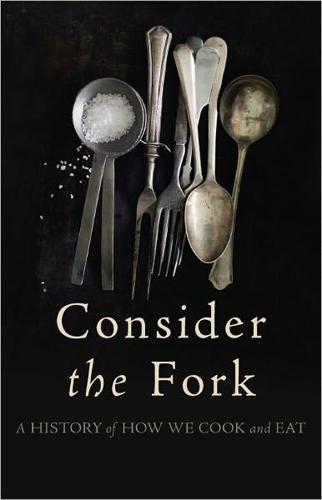
Consider the Fork: A History of How We Cook and Eat
by
Bee Wilson
Published 14 Sep 2012
It tries to function as both spoon and fork, and because of this dual nature, it fails miserably at both. You cannot have soup with a spork; it is far too shallow. You cannot eat meat with a spork; the prongs are too small. A spork is not one thing or another, but in-between. In the Pixar-animated film Wall-E, a robot in a postapocalyptic wasteland attempts to clear up the detritus left behind on planet earth by the human race. He heroically sorts old plastic cutlery into different compartments, until encountering a spork. His little brain cannot cope with this new object. Does it go with the spoons? Or the forks?
…
Russell, John Russia Sabatier Salamanders Samoa Samsung Sargent, John Singer Sauce pots Sauteing Scales Scappi, Bartolomeo Schutte-Lihotsky, Margarete Science culture and kitchens and measurement and wooden spoon and Science Museum, London Scots Scullery Scythians Seasoning Seneca Shakespeare, William Shellfish Sherbets Sierra Leone Silver Simmons, Amelia Sinclair, Upton Slater, Nigel Slavery Slicing Slow Food Movement Smith, Delia Smoke Sokolov, Ray Somerville, Thomas Sontheimer, Carl Sous-vide South Africa South America South Korea Soyer, Alexis Space food Spain Spatulas Spencer, Percy Spieler, Marlena Spit roasting Spit-roasting Splayd Spoons English cuisine and functions of history of metal proper use of silver teaspoons as technology trefoil trifid wooden wooden silicone Sporks Stainless steel heat conduction and knives and pots and pans and Starbucks Starr, Frederick Steel kitchen utensils and knives and pots and pans and Stewing Stone cutting tools and grinding tools and Stone Age Stone cooking Stowe, Harriet Beecher Strite, Charles Stuart era Sugar Sugg, William Sur la Table Sweden Syria Szilard, Leo Table knives Table manners forks and knives and Tannur Taste knives and pots and pans and Technological change resistance to types of Technology boiling and chopsticks as of cooking cooking and culture and of food food processing and forks as of kitchen kitchen utensils and knives and knives as pots and pans and Technology (continued) pottery as of roasting spoons as wooden spoon as Teeth Tefal company Teflon Tehuaca Valley, Central America Temperature uniformity Terhune, Mary Virginia Tetra Brik Tetra Pak Thailand Thermometers Thermomix Thermostats Third World This, Herve Thompson, Benjamin Tierra del Fuego Tilda Tin Toast Toasters Tongs Toshiba Tou Tou (Chinese knife) Toxicity Trevithick, Richard Troisgros, Pierre Tupperware Uncle Tom’s Cabin (Stowe) Van Ostade, Adriaen Vegetable peelers Vegetables boiling frozen foods and stone cooking and Verdun, Pierre Verrall, William Victoria, Queen Victorian era Visser, Margaret Von Platen, Baltzar Wall-E (film) Waring Blender Washington, George The Washington Post Waters, Alice Webster, Fletcher Webster, Thomas Weir, Robin Whakarewarewa “Where There Are Asians, There Are Rice Cookers” (Nakano) Whirlpool Whisks WHO. See World Health Organization Wilder, Laura Ingalls Wilkinson, John “Iron-Mad” Williams, Turner Williams, William Carlos Williams-Sonoma Woks Wolke, Robert L.
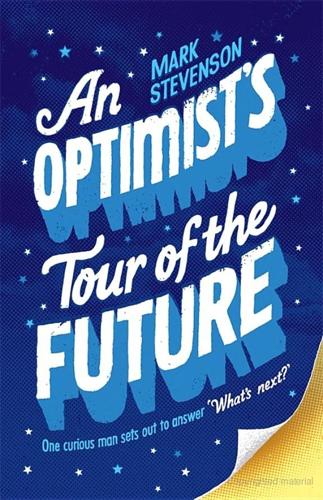
An Optimist's Tour of the Future
by
Mark Stevenson
Published 4 Dec 2010
Will they decide that we humans are useless and stupid and take over the world from us?’ We’re weaned on a diet of Hollywood movies that generally cast future robots as perilous weapons of war and aggression (The Terminator) or scheming murderers (like the iconic HAL in 2001: A Space Odyssey), with only the occasional Wall-E as light relief. It’s hardly surprising we fear being dominated by our mechanical progeny when our dreams are so dark. Noel Sharkey, professor of Artificial Intelligence and Robotics at the University of Sheffield, told New Scientist, ‘Isaac Asimov said that when he started writing about robots, the idea that robots were going to take over the world was the only story in town.
…
Daniel 160, 164 Hitchhiker’s Guide to the Galaxy, The 100 Hoek, Eric 118 Hofmeister, Anke 261–2 Hofstadter, Douglas 276 Holbrook 221–2, 239–40 Huggable 78 Human Security Brief 148 Huntington’s disease 44, 58 Huxley, Julian 13 I IBM 113, 125 identical twins 43 Imperial College London 31, 213 indium 195–6 Industrial Revolution 110, 115, 167, 171, 284–5 inequality 302 influenza virus 64–5, 69–70 Insomnia Cookies 93–4 Institute for Health Metrics and Evaluation 149 Institute of Bioengineering and Nanotechnology 69 Intelligent, Safe and Smart Built (ISSB) 119 interconnectedness Internet 151–8 nonzero-sum game 149–51 telegraph 145–7 and violent deaths 149 Intergovernmental Panel on Climate Change (IPCC) 171, 172, 179, 180 International Association Synthetic Biology 68 International Gene Synthesis Consortium 68 Internet 147, 151–64, 268, 302 invariants 99 Iran 157 Isasi, Rosario 27 IVF 106 J Jackson, Ron 64 Jones, Richard 120–1, 124, 130 Joule Biotechnologies 57, 186–8, 189 JSB see Brown, John Seely Jungerbluth, Philip 20 Jurassic Park 39, 75 K Kahn, Bob 153, 159 Kármán line 133 Kasparov, Garry 82, 83, 86 Katter, Bob 171 Keeley, Lawrence 147 Keeling, Charles David 167 Keith, David 184 Kelly, Kevin 161 Kench, Paul 242 Kessler, Andy 43 Klein, Naomi 303 Kleinrock, Leonard 152 Kline, Charley 152 Knome 50 Konarka 190–1, 196–204, 206, 224, 295, 299 Kossel, Albrecht 37 Krummel, Glen 228 Kukla, George 178–9, 186 Kunfunadhoo Island 261–2, 266 Kurzweil, Ray 90, 267–78, 282, 293, 299, 303–4 and Brown, John Seely 285 posthumans 103–4, 268 The Singularity 88 transhumanism 21–2, 267–8 Kyrgyzstan 157 L Lackner, Klaus 173, 174–86, 188, 189, 259–60, 299, 301 Lana 224–5 Langley, Tim 212–19 Law of Accelerating Returns 51, 270–8, 293 Leber’s congenital amaurosis (LCA) 59–60 Legion of Extraordinary Dancers 155, 158, 294 Lehmann, Johannes 209–10 Leo 73–4, 75–6, 79, 80–2, 84–6, 102 Lewis, Dan 203 Licht, Stuart 184 life expectancy 12–13, 301 and income 27–8 longevity escape velocity 29–30 limited liability corporations 290–1 Lincoln, Abraham 265–6 Lipson, Hod 92, 94–6, 98–101, 102, 210, 272–3, 293, 299 longevity escape velocity 29–30 López, José 117 Lovell, Tony 222–40, 300 Lovelock, James 164, 172, 220 biochar 208–9, 210, 215 LS9 56–7, 61 Lynx spaceplane 142 M Maahlos 261 McConnell, James 17 MacDiarmid, Alan 196 ‘Machine Stops, The’ (Forster) 161 McNamara, Kaitlyne 20–1 Maes, Pattie 162–3 Maldives 241–62 Malé 249–50 Malthus, Thomas Robert 250 ‘Manchester Report, The’ 223, 224 Markram, Henry 90, 91 Martine, George 252–3 Masten Space Systems 136 Matrix, The 103 men life expectancy 12, 23 pregnancy 24 methane 230 Methuselah Foundation 21 Mexico 278–9 Miescher, Johannes Friedrich 37 Miller, Webb 41 Minsky, Marvin 102, 104 Miromatrix Medical 20 MIT 40, 262 Fluid Interfaces Group 162–3 Media Lab 77–8 nanotechnology 201 Smart Cities Group 200 Technology Review 16, 187 Mitchell, Bill 200 Mojave 131–3, 135–44 Monbiot, George 215, 303 Moombril 221–2, 239–40 Moore, Michael 303 Moorhead, Paul 18 Moravec, Hans 74, 84, 89–90 Morgan Stanley 193 Mosely, Andrew 231–5 Mosely, Megan 231–5 Mouchot, Augustin 192–3, 266 mousepox 63–4 Musk, Elon 136, 141 Myhrvold, Nathan 16 N Najning University 120 nanofactories 114–17, 125–6, 286 Nanoforum 120 nanoparticles 287 nanopunk 117 Nanosolar 202–3 Nanosystems (Drexler) 112, 124 nanotechnology 107, 108–30, 268, 301, 302 apocalypse 125–7 and energy 201 Grey Goo 121–3 products 117–21 Narrandera 237–8 NASA 134, 135, 136, 141, 170 Nasheed, Mohamed 243–9, 254–60, 262 National Academy of Engineering 125 National Academy of Sciences 125 National Center for Atmospheric Research 176 National Center for Biotechnology Information (NCBI) 64–5 National Human Genome Research Institute 36 National Research Council 125 National Science Advisory Board for Biosecurity 67–8 natural language 86–7 Nature 170 Near-Earth Asteroid Rendezvous (NEAR) 134 New Scientist 68 New York 172 New York University 120 New Zealand 206–20 New Zealand Wind Farms 208 Nexi 102 Niven, Larry 135 nonzero-sum games 149–51, 153–4, 270 Northwest Passage 177–8 Nouri, Ali 65 nuclein 37 O oil 193 Olovnikov, Alexey 52–3 Olshansky, Stuart Jay 12 oncogenes 46–7 optical telegraph 145–6 Optimist (cocktail) 220 organic conductive polymers 196–7, 198, 201 ornithine transcarbamylase deficiency 58–9 Ott, Harold 20 over-population 17–18 P Pakistan 157 Pan Am 133 parabolic surfaces 192 Parkinson’s disease 273–4 Partners in Health (PIH) 202 Personal Genome Project (PGP) 37, 42–3, 47–50, 51, 273 Personal Robots Group 73–4, 75–6, 77–82, 84–6, 102 Pew Charitable Trusts 119 Pew Research Center 168 phenylketonuria 44, 58 Picton 214–15, 217–18, 220 Pifre, Abel 192 Pinatubo, Mount 169 Pinker, Steven 83, 147, 149, 293 Pirbright Laboratory 68 Pistorius, Oscar 29, 300 Pleasance, Erin 40–1 Polonator G.007 50 Pontin, James 16 Popular Science Monthly 192 population 17–18, 249–54 pornography 158 Portugal 234–5 Power Plastic 196–7, 198, 204, 224 Prey (Crichton) 122 procreative beneficence 23 Project on Emerging Nanotechnologies 119 proteins 45–6 ProtoLife 66 Pygmalion (Shaw) 86 pyrolysis 209–10, 212–14 R Ranchos de Taos, New Mexico 234 Rankin, Sarah 31 Rasmussen, Lars 256 Rebek, Julius 124 reflection 86 Regis, Ed 112 Reicher, Dan 194–5 Rema 199 Reporters Without Borders 157 Revue des Deux Mondes 192 Rice University 118–19, 201 Ridley, Matt 270, 302–3 Roberts, Lawrence 152 Roberts, Paul 244, 248, 254 Robinson, Ken 265–6, 284, 288, 293 robots 73–92, 302 Leo 73–4, 75–6, 79, 80–2, 84–6 Nexi 102 Starfish 95–6, 98–9 Rofecoxib 49 Rosenthal, Elisabeth 254 Rosling, Hans 251, 254, 293 Rothemund, Paul 119, 120 Ruddiman, William 230 Rumsfeld, Donald 172 Rutan, Dick 140–1, 142, 143 S Sanger Institute 40–1, 51 Saudi Arabia 157 Savory, Allan 221, 226–7, 232 Savulescu, Julian 23 scalable efficiency 286 Scaled Composites 136, 139, 142 Schmidt, Michael 98, 99, 273 Schöni, Peter 220 Schuster, Stephen 41 Schweizer, Erhard 113 scientific method 96–8 self-replication 121–3 senescence 18, 53–4 Shadow Robot Company 74–5 Sharkey, Noel 76–7 Sharpe, Tom 256 Shaw, George Bernard 86 Shawcross, Lord 215 Shew, Ashley 109–10 Shirakawa, Hideki 196 Shivdasani, Eva 261 Shivdasani, Sonu 261 Siemens 193 silicon cells 195–7 Singularity 88, 268 Singularity is Near, The 268, 269, 271 Six Million Dollar Man, The 14 SixthSense 162–3 Skordalakes, Emmanuel 52, 53 Smalley, Richard 111, 122, 123, 201 SmartHand 103 Smolker, Rachel 216 Snider, Wayne 200 Socrates 96–7, 99 soil carbon 228–31, 233–5, 236–7, 238 soil charcoal 213–14 solar energy 190–1, 192–3, 194–205, 206, 274, 295, 302 Solar Thermal Electrochemical Photo Carbon Capture 184 Solarbuzz 205 Soneva Fushi 261–2 space 133–44, 302 Space Frontier Foundation 134 SpaceShipOne 135–6 SpaceShipTwo 136, 139, 142 SpaceX 136, 141 Sparrow, Rob 23–4 Speedy, Barb 218 Spielberg, Steven 75 Stan Winston Studio 75 Standage, Tom 146–7 Stanford University 20 Star Wars 76, 83, 102 Starfish 95–6, 98–9 Stark, Philip 158 Stellenbosch University 118 stem cells 19–21, 31, 301 Stiehl, Dan 78–9 Stoppard, Tom 281 Strong, Graham 237–8 StubbyGlove 228 Suel, Gurol 273 Suh, Yousin 53 Sun Tzu 40–1, 51–2 surveillance 127, 129 synthetic biology 55–8, 70 bacteria 56–8 bioterrorism 63–6, 68 control 66–70 genome engineering 60–3 viral gene therapy 58–60 Synthetic Genomics 56 Syria 157 Szostak, Jack 18 T Taylor, Doris 20 TED (Technology, Entertainment, Design) 14, 153, 265–6, 291–5 Tefera, Elfenesh 199 telegraph 145–7, 297, 301 tellurium 195–6 telomerase 18–19, 45, 52–4 Terminator, The 76, 78, 103, 302 Tetrahymena 18 Thornton, Edward 146 thymine 37–9, 46 Toffler, Alvin 289 Tofu 79 transhumanism 13–18, 21–34, 45, 52–4, 267–8 transplants 19–21 Treder, Mike 126–7 tribes 155–6 Tripathy, Sukant 199 truth 96–8 Tsiolkovsky, Konstantin 114, 116, 125, 128 Tufts Center for the Study of Drug Development 49 Tumlinson, Rick 133–4 Turing, Alan 88 Turkmenistan 157 Turney, Chris 213 twins 43 U underwater cabinet meeting 241–2, 245, 246–9, 258 Ungar, Georges 17 United Nations (UN) biosafety 68 Livestock’s Long Shadow 230 population 252 State of the World’s Forests 253 World Urbanisation Prospects 250 United States biofuels 187 carbon dioxide 184 electricity 285 global warming 168 oil 187, 188 science 279–80 space programme 134, 136 University of Bradford 149 University of Bristol 20 University of British Columbia 148 University of California 118–19 University of Maryland 201 University of Minnesota 20 University of Regensburg 125 University of Washington, Center for Conservation Biology 40 Uppsala University 148 Uzbekistan 157 V Venter, Craig 36, 47, 50, 56, 57, 58, 279 Vietnam 157 Vinsen, Mark 211–12 violence 147–51, 302 and interconnectedness 157–8 and Internet 244–5 and nanotechnology 126–7 Vioxx 49 viral gene therapy 58–60 Virgin Galactic 135–6, 141 vitrification 15 Voltaire 218 Voyager 140 W Wake Forest Institute for Regenerative Medicine 20 Wall-E 76 Ward, Bruce 222–40, 259, 300 wars 147–9 Watson, James 56 Web 154–5 Weitz, David 51 Weizenbaum, Joe 86 Weldon, Larry 190–1, 196–7 Wellcome Trust Sanger Institute 40–1, 51 Wemett, Tracy 190, 197, 204, 267, 276, 297 Wired 61, 112, 159 Witt, Stuart 137–40, 143, 144 women 23–4 Wonder, Stevie 269 wood gas 209 Woodrow Wilson International Center for Scholars 119 World Health Organisation 68, 69–70, 148, 149 World Transhumanist Association 25 worldchanging.com 158 Wright, Allen 179, 180 Wright, Burt 179, 180 Wright, Karen 224–5 Wright, Orville 132–3 Wright, Robert 149–51, 156, 158, 270, 293 Wright, Tim 224–5 Wright, Wilbur 132–3 X Xcel Energy 199, 200 XCOR Aerospace 136, 141–2 Y YouTube 155, 157, 294 Z Zhang, Jin 118 Zimbabwe 221, 226 Zittrain, Jonathan 153 Ziyad, Mohamed 254, 255–6 Zykov, Victor 95 * An interesting coda to Claudia’s story is that she nearly didn’t get her operation.

Human Compatible: Artificial Intelligence and the Problem of Control
by
Stuart Russell
Published 7 Oct 2019
Once the practical incentive to pass our civilization on to the next generation disappears, it will be very hard to reverse the process. One trillion years of cumulative learning would, in a real sense, be lost. We would become passengers in a cruise ship run by machines, on a cruise that goes on forever—exactly as envisaged in the film WALL-E. A good consequentialist would say, “Obviously this is an undesirable consequence of the overuse of automation! Suitably designed machines would never do this!” True, but think what this means. Machines may well understand that human autonomy and competence are important aspects of how we prefer to conduct our lives.
…
See work, elimination of Tegmark, Max, 4, 114, 138 Tellex, Stephanie, 73 Tencent, 250 tensor processing units (TPUs), 35 Terminator (film), 112, 113 Tesauro, Gerry, 55 Thaler, Richard, 244 Theory of the Leisure Class, The (Veblen), 230 Thinking, Fast and Slow (Kahneman), 238 thinking, learning from, 293–95 Thornton, Richard, 133 Times, 7, 8 tool (narrow) artificial intelligence, 46, 47, 136 TPUs (tensor processing units), 35 tragedy of the commons, 31 Transcendence (film), 3–4, 141–42 transitivity of preferences, 23–24 Treatise of Human Nature, A (Hume), 167 tribalism, 150, 159–60 truck drivers, 119 TrueSkill system, 279 Tucker, Albert, 30 Turing, Alan, 32, 33, 37–38, 40–41, 124–25, 134–35, 140–41, 144, 149, 153, 160–61 Turing test, 40–41 tutoring, 100–101 tutoring systems, 70 2001: A Space Odyssey (film), 141 Uber, 57, 182 UBI (universal basic income), 121 uncertainty AI uncertainty as to human preferences, principle of, 53, 175–76 human uncertainty as to own preferences, 235–37 probability theory and, 273–84 United Nations (UN), 250 universal basic income (UBI), 121 Universal Declaration of Human Rights (1948), 107 universality, 32–33 universal Turing machine, 33, 40–41 unpredictability, 29 utilitarian AI, 217–27 Utilitarianism ((Mill), 217–18 utilitarianism/utilitarian AI, 214 challenges to, 221–27 consequentialist AI, 217–19 ideal utilitarianism, 219 interpersonal comparison of utilities, debate over, 222–24 multiple people, maximizing sum of utilities of, 219–26 preference utilitarianism, 220 social aggregation theorem and, 220 Somalia problem and, 226–27 utility comparison across populations of different sizes, debate over, 224–25 utility function, 53–54 utility monster, 223–24 utility theory, 22–26 axiomatic basis for, 23–24 objections to, 24–26 value alignment, 137–38 Vardi, Moshe, 202–3 Veblen, Thorstein, 230 video games, 45 virtual reality authoring, 101 virtue ethics, 217 visual object recognition, 6 von Neumann, John, 23 W3C Credible Web group, 109 WALL-E (film), 255 Watson, 80 wave function, 35–36 “we’re the experts” argument, 152–54 white-collar jobs, 119 Whitehead, Alfred North, 88 whole-brain emulation, 171 Wiener, Norbert, 10, 136–38, 153, 203 Wilczek, Frank, 4 Wiles, Andrew, 185 wireheading, 205–8 work, elimination of, 113–24 caring professions and, 122 compensation effects and, 114–17 historical warnings about, 113–14 income distribution and, 123 occupations at risk with adoption of AI technology, 118–20 reworking education and research institutions to focus on human world, 123–24 striving and enjoying, relation between, 121–22 universal basic income (UBI) proposals and, 121 wage stagnation and productivity increases, since 1973, 117 “work in human–machine teams” argument, 163 World Economic Forum, 250 World Wide Web, 64 Worshipful Company of Scriveners, 109 Zuckerberg, Mark, 157 ABCDEFGHIJKLMNOPQRSTUVWXYZ About the Author Stuart Russell is a professor of Computer Science and holder of the Smith-Zadeh Chair in Engineering at the University of California, Berkeley.
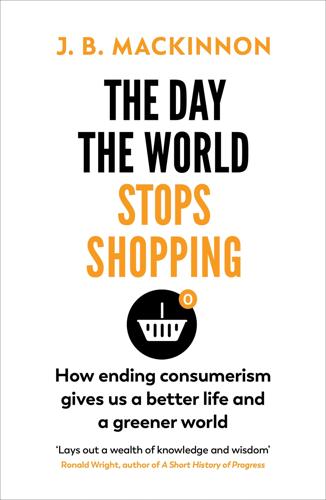
The Day the World Stops Shopping
by
J. B. MacKinnon
Published 14 May 2021
Giant holograms above dingy streets in Blade Runner 2049, Neo’s tattered sweatshirt with the holes along the neckline in The Matrix, and the enduring appeal of steampunk, with its mashup of whalebone crinolines and quantum computing, zeppelins and space travel, are all wabi-sabi. So is the Star Wars universe, with its spacecraft that resemble the beater cars of the 1970s, its grimy bars, its heroes dressed in patched and threadbare kimonos, a style that dates back a thousand years. The animated film WALL-E is set on a ghost-town Earth that still somehow feels more like our home than the shining space colonies humans have moved to. “It’s the beauty of decay,” the film’s cinematographer, Jeremy Lasky, once said, “like when you go into old buildings that have been abandoned.” We could, in a world that stops shopping, build things not only to last, but to age gracefully.
…
See also Finland sumuyasi tokoro, 271 Sunday sabbath, 46 closing, 43–45, 49, 51–52 shopping, 44, 51 Sustainable Prosperity, 90–91 Suzman, James, 3, 278, 293 “swamp coolers,” 199 Syktyvkar, 131 system dynamics approach, 82 Tahiti, 20 Takano, Koichiro, 271–72 “tech,” 255 technology, 34, 60, 82, 132, 144–45, 147–48, 178, 201, 207, 255, 263 consumption, reducing, 291–92 digital technology, 251, 254 green technology, 8–9, 67, 70, 75, 91 temperature “change sensation,” 200 “metabolic syndrome,” 206 “non-shivering thermogenesis,” 205 room temperature, 202–3, 205 “thermal boredom,” 207 “thermoneutral” condition, 206 Ten Books on Architecture (Vitruvius), 199 Ten Summoner’s Tales, 51 Terkel, Studs, 135, 238 Thatcher, Margaret, 82–83, 213 things, attachment to, 143–53 “think globally, act locally,” 203 “third world” feeling, 34 Thoreau, Henry David, 5, 9, 238, 287 three Cs, 202 “time famine,” 48 “time vampire,” 256 TINA, 83 toki, 263, 268, 272 tokikala, 263 Tokyo, 72, 170, 176, 181, 214, 251–52, 259–61, 265–66, 268–70, 272 Tom Tailor, 157 Tomlinson, Ray, 179 Top Runner, 213–15 Toraya, 170–73, 177 Toronto, Canada, 59, 81, 126 transformation, not-shopping digital sphere, consumerism in, 249–58 happiness, redefining, 237–48 “just enough,” state of, 275–84 nonhuman species, protecting, 223–35 population, decline of, 259–73 Trends Research Institute, 240 Trentmann, Frank, 50, 158, 175, 211 Tsumkwe, 2, 5, 280 Tuckerman & Co., 161–62, 288–89 tuna, 234 Turner, James, 114–15 TV characters, depiction of, 102 underconsuming, 36, 281 Unfulfillment Center, 164 United Kingdom, 6, 202 United Nations, 6, 34 United States, 10, 21, 25, 27, 35, 52, 61, 70–71, 85–86, 91, 102–3, 105, 108, 134, 167, 175, 182, 211, 215, 227, 233–34, 287 and air conditioning, 199 cotton, production of, 26, 161 garbage, output of, 7 happiness, generating, 39 household spending, 13, 20 living, cost of, 36 Sabbatarian nation, 44 shoppers, spending of, 7 shopping addict, stereotype of, 7 Universal Declaration of Human Rights, 187 Urban-Brookings Tax Policy Center, 213 US Bureau of Labor Statistics, 162, 293 utility companies, 201 U-turners, 264 “valorization of busyness,” 53 Van Eeghen, 177 vanlife, 23 Varro, Laszlo, 63–64, 66 “Veblen good,” 100, 201 Veblen, Thorstein, 99–102, 104, 201, 212 Venice, Italy, 178 Victor, Peter, 81–83, 87–91, 105, 267 Vietnam War, 22 ville lumière, 77 “virtuous cycle,” 243 “visibly consumed,” 100 Vitruvius, Marcus, 199 Volcker, Paul, 180 voluntary simplicity, 237–41, 244, 267 Von Hippel, Eric, 179 wabi-sabi, 151–53, 267 wagashi, 171, 173, 182 Walker, Adam, 166 WALL-E (film), 153 Walmart, 135, 161, 163–64 Wang, Momo, 250 Ware, Caroline, 36 Warren, Earl, 49 Washington Redskins, 129 wealth distribution of, 81, 84, 91, 279 “health to wealth,” 233 markers of, 103 material wealth, 243, 282–82 overall wealth, 20, 90 redistribution of, 91, 280 wealthy nations, 59, 64, 97, 262 well-being, 4, 39, 63, 74, 87, 118–22, 124–28, 247, 279, 290 Western Europe, 6, 58, 63, 86, 105, 134, 167 whaling, 223–225.
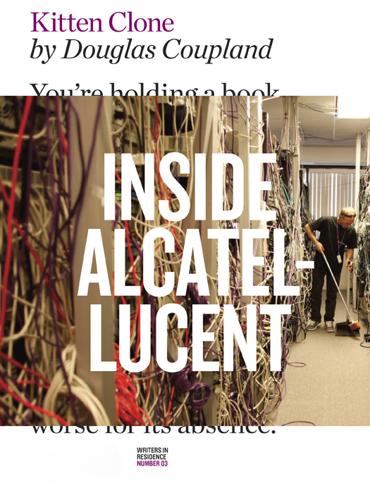
Kitten Clone: Inside Alcatel-Lucent
by
Douglas Coupland
Published 29 Sep 2014
I’m told that it’s time to take my photo for this book, so I try to be with it, saying, “Let’s do it here by these 7710 SR-c12 routers,” to which a tech worker rolls his eyes and says, “That’s not a 7710 SR-c12 router; it’s a 7710 SR-c4.” Whoops. I’m soon off to see Amélie Lamothe, a young systems quality assurance engineer from Ottawa who’s been with the company for five years and has a vinyl WALL-E figurine in her cubicle. She is also a taekwon-do black belt, but she tells me she considers herself to be an introvert. “At work I have my work personality, but then I go home and don’t have to talk to anyone.” Lamothe tests software that oversees routers: is everything flowing through the pipes quickly and without blockage?
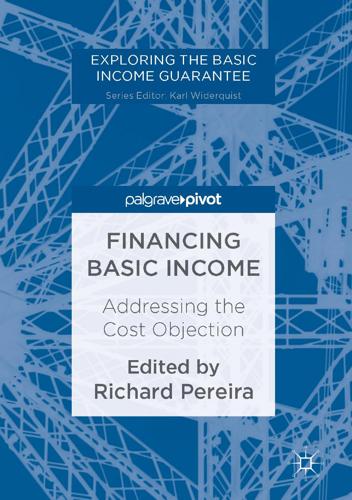
Financing Basic Income: Addressing the Cost Objection
by
Richard Pereira
Published 5 Jul 2017
Taylor, P. (2007) “Everyone’s Guide to Tax Shelters.” Money Sense. December/January. Ternette, N. (2012) “Guaranteed-Income Idea Kept Alive by Many.” Winnipeg Free Press. 15 May. TFSA – Tax-Free Savings Account. (2014) Government of Canada. http://www.tfsa.gc.ca/. Trenholm, R. (2012) “Apple Factory’s Wall-E robots and Suicide Nets Revealed.” Cnet.com . 21 February. Trudeau Foundation. (2013) Responsible Citizenship: A National Survey of Canadians. Montreal: The Pierre Elliott Trudeau Foundation, 31 October. Van Parijs, P. (1995) Real Freedom for All: What (If Anything) Can Justify Capitalism?.
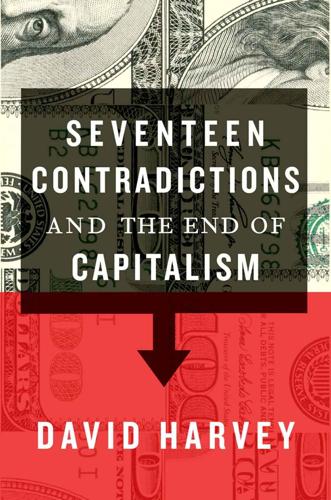
Seventeen Contradictions and the End of Capitalism
by
David Harvey
Published 3 Apr 2014
But Gorz’s point is that it is this that also deeply penetrates to the very core of daily life by way of the instruments we daily use to live that life, including all those we handle in our work. There is, evidently, a deep longing in popular culture to somehow humanise the impacts of this barren culture of technology. We see that in the way that the replicants in Blade Runner acquire feelings, how Sonmi-451 learns an expressive language in Cloud Atlas, how the robots in Wall-E learn to care and shed a tear while human beings, bloated with compensatory consumer goods, passively float alone, each on their separate magic carpet, above the ruinous world the robots are seeking to order below; and even, more negatively, how HAL the computer in 2001: A Space Odyssey goes rogue.
…
283 Maddison, Angus 227 Maghreb 174 Malcolm X 291 Maldives 260 Malthus, Thomas 229–30, 232–3, 244, 246, 251 Manchester 149, 159 Manhattan Institute 143 Mansion House, London 201 manufacturing 104, 239 Mao Zedong 291 maquilas 129, 174 Marcuse, Herbert 204, 289 market cornering 53 market economy 198, 205, 276 marketisation 243 Marshall Plan 153 Martin, Randy 194 Marx, Karl 106, 118, 122, 142, 207, 211 and alienation 125, 126, 213 in the British Museum library 4 on capital 220 conception of wealth 214 on the credit system 239 and deskilling 119 on equal rights 64 and falling profits 107 and fetishism 4 on freedom 207, 208, 213 and greed 33 ‘industrial reserve army’ 79–80 and isolation of workers 125 labour theory of value 109 and monetary system reforms 36 monopoly power and competition 135 reality and appearance 4, 5 as a revolutionary humanist 221 and social reproduction 182 and socialist utopian literature 184 and technological innovation 103 and theorists of the political left 54 and the ‘totally developed individual’ 126–7 and world crises xiii; Capital 57, 79–80, 81, 82, 119, 129, 132, 269, 286, 291–2 The Economic and Philosophic Manuscripts of 1844 269, 286 Grundrisse 97, 212–13 Theories of Surplus Value 1 Marxism contradiction between productive forces and social relations 269 ‘death of Marxism’ xii; ecologically sensitive 263 and humanism 284, 286, 287 ‘profit squeeze’ theory of crisis formation 65 traditional Marxist conception of socialism/ communism 91 Marxists 65, 109 MasterCard Priceless 275 Mau Mau movement 291 Melbourne 141 merchants 67 and industrial capital 179 price-gouging customers 54 and producers 74–5 Mercosur 159 Mexican migrants 115, 175, 195–6 Mexico 123, 129, 174 Mexico City riots (1968) x microcredit 194, 198 microfinance 186, 194, 198, 211 Microsoft 131 Middle East 124, 230 Milanovic, Branko 170 military, the capacities and powers 4 dominance 110 and technology 93, 95 ‘military-industrial complex’ 157 mind-brain duality 70 mining 94, 113, 123, 148, 239, 257 MIT (Massachusetts Institute of Technology) 292 Mitchell, David: Cloud Atlas 264 Mitchell, Timothy 122 Modern Times (film) 103 Mondragon 180 monetarism xi monetary wealth and incomes, inequalities in (1920s) x 1071 monetisation 44, 55, 60, 61, 62, 115, 192–3, 198, 235, 243, 250, 253, 261, 262 money abandonment of metallic basis of global moneys 30, 37, 109 circulation of 15, 25, 30–31, 35 coinage 15, 27, 29, 30 commodification of 57 commodity moneys 27–31 creation of 30, 51, 173, 233, 238–9, 240 credit moneys 28, 30, 31, 152 cyber moneys 36, 109–10 electronic moneys 27, 29, 35, 36, 100 and exchange value 28, 35, 38 fiat 8, 27, 30, 40, 109, 233 gap between money and the value it represents 27 global monetary system 46–7 love of money as a possession 34 measures value 25, 28 a moneyless economy 36 oxidisation of 35 paper 15, 27, 29, 30, 31, 37, 40, 45 power of 25, 36, 59, 60, 62, 65–66, 131–6, 245, 266 quasi-money 35 relation between money and value 27, 35 represented as numbers 29–30 and social labour 25, 27, 31, 42, 55, 88, 243 and the state 45–6, 51, 173 storage of value 25, 26, 35 the US dollar 46–7 use value 28 money capital 28, 32, 59, 74, 142, 147, 158, 177, 178 money laundering 54, 109 ‘money of account’ 27–8, 30 monopolisation 53, 145 monopoly, monopolies 77 and competition 131–45, 218, 295 corporate 123 monetary system 45, 46, 48, 51 monopoly power 45, 46, 51, 93, 117, 120, 132, 133–4, 136, 137, 139, 141, 142–3 monopoly pricing 72, 132 natural 118, 132 of state over legitimate use of force and violence 42, 44, 45, 51, 88, 155, 173 see also prices, monopoly monopsony 131 Monsanto 123 Montreal Protocol 254, 259 ‘moral restraints’ 229, 233 mortgages 19, 21, 28, 32, 54, 67, 82, 239 multiculturalism 166 Mumbai 155, 159 Murdoch, Rupert xi Myrdal, Gunnar 150 N NAFTA 159 name branding 31, 139 nano-trading 243 Nation of Islam 291 national debt 45, 226, 227 National Health Service 115 National Labor Relations Board 120 National Security Administration 136 nationalisation 50 nationalism 7, 8, 44, 289 natural resources 58, 59, 123, 240, 241, 244, 246, 251 nature 56 alienation from 263 capital’s conception of 252 capital’s relation to 246–63 commodification of 59 domination of 247, 272 Heidegger on 59, 250 Polanyi on 58 power over 198 process-thing duality 73 and technology 92, 97, 99, 102 Nazis 151 neoclassical economists 109 neocolonialism 143, 201 neoliberal era 128 neoliberal ethic 277 neoliberalisation x, 48 neoliberalism xiii, 68, 72, 128, 134, 136, 176, 191, 234, 281 capitalism 266 consensus 23 counter-revolution 82, 129, 159, 165 political programme 199 politics 57 privatisation 235 remedies xi Nevada, housing in 77 ‘new economy’ (1990s) 144 New York City 141, 150 creativity 245 domestic labour in 196 income inequality 164 rental markets 22 social reproduction 195 Newton, Isaac 70 NGOs (non-governmental organisations) 189, 210, 284, 286, 287 Nike 31 Nkrumah, Kwame 291 ‘non-coincidence of interests’ 25 Nordic countries 165 North America deindustrialisation in 234 food grain exports 148 indigenous population and property rights 39 women in labour force 230 ‘not in my back yard’ politics 20 nuclear weapons 101 Nyere, Julius 291 O Obama, Barack 167 occupational safety and health 72 Occupy movement 280, 292 Ohlin Foundation 143 oil cartel 252 companies 77, 131 ‘Seven Sisters’ 131 embargo (1973) 124 ‘peak oil’ 251–2, 260 resources 123, 240, 257 oligarchy, oligarchs 34, 143, 165, 221, 223, 242, 245, 264, 286, 292 oligopoly 131, 136, 138 Olympic Games 237–8 oppositional movements 14, 162, 266–7 oppression 193, 266, 288, 297 Orwell, George 213 Nineteen Eighty-Four 202 overaccumulation 154 overheating 228 Owen, Robert 18, 184 Oxfam xi, 169–70 P Paine, Tom: Rights of Man 285 Paris 160 riots (1968) x patents 139, 245, 251 paternalism 165, 209 patriarchy 7 Paulson, Hank 47 pauperisation 104 Peabody, George 18 peasantry ix, 7, 107, 117, 174, 190, 193 revolts 202 pensions 134, 165, 230 rights 58, 67–8, 84, 134 people of colour: disposable populations 111 Pereire, Emile 239 pesticides 255, 258 pharmaceuticals 95, 121, 123, 136, 139 Philanthropic Colonialism 211 philanthropy 18, 128, 189, 190, 210–11, 245, 285 Philippines 115, 196 Picasso, Pablo 140–41, 187, 240 Pinochet, Augusto x Pittsburgh 150, 159, 258 planned obsolescence 74 plutocracy xi, xii, 91, 170, 173, 177, 180 Poland 152 Polanyi, Karl 56, 58, 60, 205–7, 210, 261 The Great Transformation 56–7 police 134 brutality 266 capacities and powers 43 powers xiii, 43, 52 repression 264, 280 surveillance and violence 264 violence 266, 280 police-state 203, 220 political economy xiv, 54, 58, 89, 97, 179–80, 182, 201, 206–9 liberal 204, 206, 209 political parties, incapable of mounting opposition to the power of capital xii political representation 183 pollutants 8, 246, 255 pollution 43, 57, 59, 60, 150, 250, 254, 255, 258 Pontecorvo, Gillo 288 Ponzi schemes 21, 53, 54, 243 population ageing 223, 230 disposable 108, 111, 231, 264 growth 107–8, 229, 230–31, 242, 246 Malthus’s principle 229–30 Portugal 161 post-structuralism xiii potlatch system 33 pounds sterling 46 poverty 229 anti-poverty organisations 286–7 and bourgeois reformism 167 and capital 176 chronic 286 eradication of 211 escape from 170 feminisation of 114 grants 107 and industrialisation 123 and population expansion 229 and unemployment 170, 176 US political movement denies assistance to the poor 292–3 and wealth 146, 168, 177, 218, 219, 243 world xi, 170 power accumulation of 33, 35 of capital xii, 36 class 55, 61, 88, 89, 97, 99, 110, 134, 135, 221, 279 computer 105 and currencies 46 economic 142, 143, 144 global 34, 170 the house as a sign of 15–16 of labour see under labour; of merchants 75 military 143 and money 25, 33, 36, 49, 59, 60, 62, 63, 65–6, 245, 266 monopoly see monopoly power; oligarchic 292 political 62, 143, 144, 162, 171, 219, 292 purchasing 105, 107 social 33, 35, 55, 62, 64, 294 state 42–5, 47–52, 72, 142, 155–9, 164, 209, 295 predation, predators 53, 54, 61, 67, 77, 84, 101, 109, 111, 133, 162, 198, 212, 254–5 price fixing 53, 118, 132 price gouging 132 Price, Richard 226, 227, 229 prices discount 133 equilibrium in 118 extortionate 84 food 244, 251 housing 21, 32, 77 land 77, 78, 150 low 132 market 31, 32 and marketplace anarchy 118 monopoly 31, 72, 139, 141 oil 251, 252 property 77, 78, 141, 150 supermarket 6 and value 31, 55–6 private equity firms 101, 162 private equity funds 22, 162 private property and the commons 41, 50, 57 and eradication of usufructuary rights 41 and individual appropriation 38 and monopoly power 134–5, 137 social bond between human rights and private property 39–40 and the state 47, 50, 58, 59, 146, 210 private property rights 38–42, 44, 58, 204, 252 and collective management 50 conferring the right to trade away that which is owned 39 decentralised 44 exclusionary permanent ownership rights 39 and externality effects 44 held in perpetuity 40 intellectual property rights 41 microenterprises endowed with 211 modification or abolition of the regime 14 and nature 250 over commodities and money 38 and state power 40–41, 42–3 underpinning home ownership 49 usufructuary rights 39 privatisation 23, 24, 48, 59, 60, 61, 84, 185, 235, 250, 253, 261, 262, 266 product lines 92, 107, 219, 236 production bourgeois 1 falling value of 107 immaterial 242 increase in volume and variety of 121 organised 2 and realisation 67, 79–85, 106, 107, 108, 173, 177, 179, 180, 221, 243 regional crises 151 workers’ dispossession of own means of 172 productivity 71, 91, 92, 93, 117, 118, 121, 125, 126, 132, 172, 173, 184, 185, 188, 220, 239 products, compared with commodities 25–6 profitability 92, 94, 98, 102, 103, 104, 106, 112, 116, 118, 125, 147, 184, 191–2, 240, 252, 253, 256, 257 profit(s) banking 54 as capital’s aim 92, 96, 232 and capital’s struggle against labour 64, 65 and competition 93 entrepreneurs 24, 104 falling 81, 107, 244 from commodity sales 71 and money capital 28 monopoly 93 rate of 79, 92 reinvestment in expansion 72 root of 63 spending of 15 and wage rates 172 proletarianisation 191 partial 175, 190, 191 ‘property bubble’ 21 property market boom (1920s) 239 growth of 50 property market crashes 1928 x, 21 1973 21 2008 21–2, 54, 241 property rights 39, 41, 93, 135 see also intellectual property rights; private property property values 78, 85, 234 ‘prosumers’ 237 Proudhon, Pierre-Joseph 183 Prozac 248 public goods 38 public utilities 23, 60, 118, 132 Q quantitative easing 30, 233 R R&D ix race 68, 116, 165, 166, 291 racial minorities 168 racialisation 7, 8, 62, 68 racism 8 Rand, Ayn 200 raw materials 16, 17, 148, 149, 154 Reagan, Ronald x, 72 Speech at Westminster 201 Reagan revolution 165–166 realisation, and production 67, 79–85, 106, 107, 108, 173, 177, 179, 180, 221, 243 reality contradiction between reality and appearance 4–6 social 27 Reclus, Elisée 140 regional development 151 regional volatility 154 Reich, Robert 123, 188 religion 7 religious affiliation 68 religious hatreds and discriminations 8 religious minorities 168 remittances 175 rent seeking 132–3, 142 rentiers 76, 77, 78, 89, 150, 179, 180, 241, 244, 251, 260, 261, 276 rents xii, 16–19, 22, 32, 54, 67, 77, 78, 84, 123, 179, 241 monopoly 93, 135, 141, 187, 251 repression 271, 280 autocratic 130 militarised 264 police-state 203 violent 269, 280, 297 wage 158, 274 Republican Party (US) 145, 280 Republicans (US) 167, 206 res nullius doctrine 40 research and development 94, 96, 187 ‘resource curse’ 123 resource scarcity 77 revolution, Fanon’s view of 288 revolutionary movements 202, 276 Ricardo, David 122, 244, 251 right, the ideological and political assault on the left xii; response to universal alienation 281 ‘rights of man’ 40, 59, 213 Rio de Janeiro 84 risk 17, 141, 162, 219, 240 robbery 53, 57, 60, 63, 72 robotisation 103, 119, 188, 295 Rodney, Walter 291 romantic movement 261 Roosevelt, Theodore 131, 135 Four Freedoms 201 Rousseau, Jean-Jacques 213, 214 Ruhr, Germany 150 rural landscapes 160–61 Russia 154 a BRIC country 170, 228 collapse of (1989) 165 financial crisis (1998) 154, 232 indebtedness 152 local famine 124 oligarchs take natural resource wealth 165 S ‘S’ curve 225, 230–31 Saint-Simon, Claude de Rouvroy, comte de 183 sales 28, 31, 187, 236 San Francisco 150 Santiago, Chile: street battles (2006–) 185 Sao Paulo, Brazil 129, 195 savings the house as a form of saving 19, 22, 58 loss of 20, 58 private 36 protecting the value of 20 Savings and Loan Crisis (USA from 1986) 18 savings accounts 5, 6 Scandinavia 18, 85, 165 scarcity 37, 77, 200, 208, 240, 246, 260, 273 Schumpeter, Joseph 98, 276 science, and technology 95 Seattle 196 Second Empire Paris 197 Second World War x, 161, 234 Securities and Exchange Commission 120, 195 security xiii, 16, 121, 122, 165, 205, 206 economic 36, 153 food 253, 294, 296 job 273 national 157 Sen, Amartya 208–11, 281 Development as Freedom 208–9 senior citizens 168 Seoul 84 serfdom 62, 209 sexual hatreds and discriminations 8 Shanghai 153, 160 share-cropping 62 Sheffield 148, 149, 159, 258 Shenzhen, China 77 Silicon Valley 16, 143, 144, 150 silver 27–31, 33, 37, 57, 233, 238 Simon, Julian 246 Singapore 48, 123, 150, 184, 187, 203 slavery 62, 202, 206, 209, 213, 268 slums ix, 16, 175 Smith, Adam 98, 125–6, 157, 185, 201, 204 ‘invisible hand’ 141–2 The Wealth of Nations 118, 132 Smith, Neil 248 social distinction 68, 166 social inequality 34, 110, 111, 130, 171, 177, 180, 220, 223, 266 social justice 200, 266, 268, 276 social labour 53, 73, 295 alienated 64, 66, 88 and common wealth 53 creation of use values through 36 expansion of total output 232 household and communal work 296 immateriality of 37, 233 and money 25, 27, 31, 42, 55, 88, 243 productivity 239 and profit 104 and value 26, 27, 29, 104, 106, 107, 109 weakening regulatory role of 109, 110 social media 99, 136, 236–7, 278–9 social movements 162–3 social reproduction 80, 127, 182–98, 218, 219, 220, 276 social security 36, 165 social services 68 social struggles 156, 159, 165, 168 social value 26, 27, 32, 33, 55, 172, 179, 241, 244, 268, 270 socialism 215 democratic xii; ‘gas and water’ 183 socialism/communism 91, 269 socialist revolution 67 socialist totalitarianism 205 society capitalist 15, 34, 81, 243, 259 civil 92, 122, 156, 185, 189, 252 civilised 161, 167 complex 26 demolition of 56 and freedom 205–6, 210, 212 hope for a better society 218 industrial 205 information 238 market 204 post-colonial 203 pre-capitalist 55 primitive 57 radical transformation of 290 status position in 186 theocratic 62 women in 113 work-based 273 world 204 soil erosion 257 South Africa 84–5, 152, 169 apartheid 169, 202, 203 South Asia labour 108 population growth 230 software programmers and developers 115, 116 South Korea 123, 148, 150, 153 South-East Asia 107–8 crisis (1997–8) 154, 232, 241 sovereign debt crises 37 Soviet Bloc, ex-, labour in 107 Soviet Union 196, 202 see also Russia Spain xi, 51, 161 housing market crash (2007–9) 82–3 spatio-temporal fixes 151–2, 153, 154, 162 spectacle 237–8, 242, 278 speculative bubbles and busts 178 stagnation xii, 136, 161–2, 169 Stalin, Joseph 70 standard of life 23, 175 starvation 56, 124, 246, 249, 260, 265 state, the aim of 156–7 brutality 266, 280 and capital accumulation 48 and civil society 156 curbing the powers of capital as private property 47 evolution of the capitalist state 42 and externality effects 44 guardian of private property and of individual rights 42 and home ownership 49–50 interstate system 156, 157 interventionism 193, 205 legitimate use of violence 42, 44, 45, 51, 88, 155, 173 loss of state sovereignty xii; and money 1, 45–6, 51, 173 ‘nightwatchman’ role 42, 50 powers of 42–5, 47–52, 57–8, 65, 72, 142, 155–9, 209, 295 and private property 47, 50, 58, 59, 146, 210 provision of collective and public goods 42–3 a security and surveillance state xiii; social democratic states 85 war aims 44 state benefits 165 state regulatory agencies 101 state-finance nexus 44–5, 46–7, 142–3, 156, 233 state-private property nexus 88–9 steam engine, invention of the 3 steel industry 120, 121, 148, 188 steel production 73–4 Stiglitz, Joseph 132–4 stock market crash (1929) x Stockholm, protests in (2013) 171, 243 strikes 65, 103, 124 sub-prime mortgage crisis 50 suburbanisation 253 supply and demand 31, 33, 56, 106 supply chain 124 supply-side remedies xi supply-side theories 82, 176 surplus value 28, 40, 63, 73, 79–83, 172, 239 surveillance xiii, 94, 121, 122, 201, 220, 264, 280, 292 Sweden 166, 167 protests in (2013) 129, 293 Sweezy, Paul 136 swindlers, swindling 45, 53, 57, 239 ‘symbolic analysts’ 188 Syntagma Square, Athens 266, 280 T Tahrir Square, Cairo 266 Taipei, Taiwan 153 Taiwan 123, 150, 153 Taksim Square, Istanbul 266, 280 Tanzania 291 tariffs 137 taxation 40, 43, 47, 67, 84, 93–4, 106, 133, 150, 155, 157, 167, 168, 172, 190 Taylor, Frederick 119, 126 Taylorism 103 Tea Party faction 205, 280, 281, 292 technological evolution 95–6, 97, 101–2, 109 technological imperatives 98–101 technological innovation 94–5 technology changes involving different branches of state apparatus 93–4 communicative technologies 278–9 and competition 92–3 constraints inhibiting deployment 101 culture of 227, 271 definition 92, 248 and devaluation of commodities 234 environmental 248 generic technologies 94 hardware 92, 101 humanising 271 information 100, 147, 158, 177 military 93, 95 monetary 109 and nature 92, 97, 99, 102 organisational forms 92, 99, 101 and productivity 71 relation to nature 92 research and development 94 and science 95 software 92, 99, 101 a specialist field of business 94 and unemployment 80, 103 work and labour control 102–11 telephone companies 54, 67, 84, 278 Tennessee 148 Teresa, Mother 284 Thatcher, Margaret (later Baroness) x, 72, 214, 259 Thatcherism 165 theft 53, 60, 61, 63 Thelluson, Peter 226, 227 think tanks 143 ‘Third Italy’ 143 Third World debt crisis 240 Toffler, Alvin 237 tolls 137 Tönnies, Ferdinand 122, 125 tourism ix, 16, 140, 141, 187, 236 medical 139 toxic waste disposal 249–50, 257 trade networks 24 trade unions xii, 116, 148, 168, 176, 184, 274, 280 trade wars 154 transportation 23, 99, 132, 147–8, 150, 296 Treasury Departments 46, 156 TRIPS agreement 242 tropical rainforest 253 ‘trust-busting’ 131 trusts 135 Turin, Italy 150 Turkey 107, 123, 174, 232, 280, 293 Tuscany, Italy 150 Tutu, Archbishop Desmond 284 Twitter 236 U unemployment 37, 104, 258, 273 benefits 176 deliberately created 65, 174 high xii, 10, 176 insurance 175 and labour reserves 175, 231 and labour-saving technologies 173 long-term 108, 129 permanent 111 echnologically induced 80, 103, 173, 274 uneven geographical developments 178, 296 advanced and underserved regional economies 149–50 and anti-capitalist movements 162 asset bubbles 243 and capital’s reinvention of itself 147, 161 macroeconomic processes of 159 masking the true nature of capital 159–60 and technological forms 219 volatility in 244 United Fruit 136 United Kingdom income inequality in 169; see also Britain United Nations (UN) 285 United States aim of Tea Party faction 280 banking 158 Bill of Rights 284 Britain lends to (nineteenth century) 153 capital in (1990s) 154 Constitution 284 consumption level 194 global reserve currency 45–6 growth 232 hostility towards state interventions 167 House of Representatives 206 human rights abuses 202 imperial power 46 indebtedness of students in 194 Indian reservations 249 interstate highway system 239 jobless recoveries after recession 172–3 liberty and freedom rhetoric 200–201, 202 Midwest ‘rust belt’ 151 military expenditures 46 property market crashes x, 21–2, 50, 54, 58, 82–3 racial issues 166 Savings and Loan Crisis (from 1986) 18 social mobility 196 social reproduction 196–7 solidly capitalist 166 steel industry 120 ‘symbolic analysts’ 188 ‘trust-busting’ 131 unemployment 108 wealth distribution 167 welfare system 176 universal suffrage 183 urbanisation 151, 189, 228, 232, 239, 247, 254, 255, 261 Ure, Andrew 119 US Congress 47 US dollar 15, 30, 45–6 US Executive Branch 47 US Federal Reserve xi, 6, 30, 37, 46, 47, 49, 132, 143, 233 monetary policy 170–71 US Housing Act (1949) 18 US Treasury 47, 142, 240 use values collectively managed pool of 36 commodification of 243 commodities 15, 26, 35 common wealth 53 creation through social labour 36 and entrepreneurs 23–4 and exchange values 15, 35, 42, 44, 50, 60, 65, 88 and housing 14–19, 21–2, 23, 67 and human labour 26 infinitely varied 15 of infrastructural provision 78 loss of 58 marketisation of 243 monetisation of 243 of money 28 privatised and commodified 23 provision of 111 and revolt of the mass of the people 60 social demand for 81 usufructuary rights 39, 41, 59 usury 49, 53, 186, 194 utopianism 18, 35, 42, 51, 66, 119, 132, 183, 184, 204, 206–10, 269, 281, 282 V value(s) commodity 24, 25 failure to produce 40 housing 19, 20, 22 net 19 production and realisation of 82 production of 239 property 21 relation between money and value 27, 35 savings 20 storing 25, 26, 35 see also asset values; exchange values; social value; use values value added 79, 83 Veblen, Thorstein: Theory of the Leisure Class 274 Venezuela 123, 201 Vietnam, labour in 108 Vietnam War 290 violence 53, 57, 72, 204–5, 286 against children 193 against social movements 266 against women 193 colonial 289–90, 291 and contemporary capitalism 8 culture of 271 of dispossession 58, 59 in a dystopian world 264 and humanism 286, 289, 291 of the liberation struggle 290 militarised 292 as the only option 290–91 political 280 in pursuit of liberty and freedom 201 racialised 291 state’s legitimate use of 42, 44, 45, 51, 88, 155, 173 of technology 271 and wage labour 207 virtual ecological transfer 256 Volcker, Paul 37 W wages 103 basic social wage 103 falling 80, 82 for housework 115, 192–3 low xii, 114, 116, 186, 188 lower bound to wage levels 175 non-payment of 72 and profits 172 reduction in 81, 103, 104, 135, 168, 172, 176, 178 rising 178 and unskilled labour 114 wage demands 150, 274 wage levels pushed up by labour 65 wage rates 103, 116, 172, 173 wage repression 158–9 weekly 71 see also income Wall Street criticised by a congressional committee 239–40 illegalities practised by 72, 77 and Lebed 195 new information-processing technologies 100 Wall Street Crash (1929) x, 47 Wall-E (film) 271 Walmart xii, 75, 84, 103, 131 war on terror 280 wars 8, 60, 229 currency 154 defined 44 monetisation of state war-making activities 44–5 privatisation of war making 235 resource 154, 260 and state aims 44 state financing of 32, 44, 48 and technology 93 trade 154 world 154 water privatisation 235 wave theory 70 wave-particle duality 70 wealth accumulation of 33, 34, 35, 157, 205 creation of 132–3, 142, 214 disparities of 164–81 distribution of 34, 167 extraction from non-productive activities 32 global 34 the house as a sign of 15–16 levelling up of per capita wealth 171 and poverty 146, 168, 177, 218, 219, 243 redistribution of 9, 234, 235 social 35, 53, 66, 157, 164, 210, 251, 265, 266, 268 taking it from others 132–3 see also common wealth weather futures 60 Weber, Max 122, 125 Weimar Republic 30 welfare state 165, 190, 191, 208 Wells Fargo 61 West Germany 153, 154, 161 Whitehead, Alfred North 97 Wilson, Woodrow 201 Wolf, Martin 304n2 Wollstonecraft, Mary: A Vindication of the Rights of Woman 285 women career versus family obligations 1–2 disposable populations 111 exploitation of 193 housework versus wage labour 114–15 oppression against 193 social struggle 168 trading of 62 violence against 193 in the workforce 108, 114, 115, 127, 174, 230 women’s rights 202, 218 workers’ rights 202 working classes and capital 80 consumer power 81 crushing organisation 81 education 183, 184 gentrified working-class neighbourhoods ix; housing 160 living conditions 292 wage repression and consumption 158–9 working hours 72, 104–5, 182, 272–5, 279 World Bank 16, 24, 100, 186, 245 World Trade Organization 138, 242 WPA programmes (1930s) 151 Wright, Frank Lloyd: Falling Water 16 Wriston, Walter 240 Y YouTube 236 Yugoslavia, former 174 Z Zola, Émile 7

Surviving AI: The Promise and Peril of Artificial Intelligence
by
Calum Chace
Published 28 Jul 2015
Within a fairly short period of time the superintelligence may have converted almost every atom of the Earth into one of three things: paperclips, extensions of its own processing capability, and the means to spread its mission to the rest of the universe. I don’t want my descendants to become paperclips, and I’m sure you don’t either. Bostrom calls this a cartoon example, but it illustrates that poorly specified goals can have severe consequences. Pointlessness In Pixar’s charming 2008 film Wall-E, humanity has abandoned the ecological mess that they made of the Earth, and they live a life of ease and abundance on a clean and shiny spacecraft that is run by a superintelligence. This has not been a complete success: they have become indolent, corpulent, dependent and passive. Fortunately their curiosity and resourcefulness remain latent, and they make a surprisingly quick recovery when shocked out of their easy complacency.
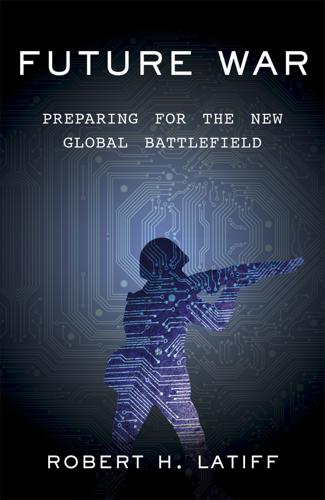
Future War: Preparing for the New Global Battlefield
by
Robert H. Latiff
Published 25 Sep 2017
While the enhancement of soldiers cannot a priori be ruled out as illegal or unethical, there must be debate about questions of military necessity, legitimate purpose, and warfighter dignity, safety, and accountability. — Robots have long captured the popular imagination. They can be “good” robots like the lovable WALL-E or the engaging and comical robot in Short Circuit, or they can be “bad” robots like HAL in 2001: A Space Odyssey or the fearsome, murderous robots in War of the Worlds. These are fictional, but real robots become more capable every day with improvements in electronics, computers, artificial intelligence, materials, and other supporting technologies.
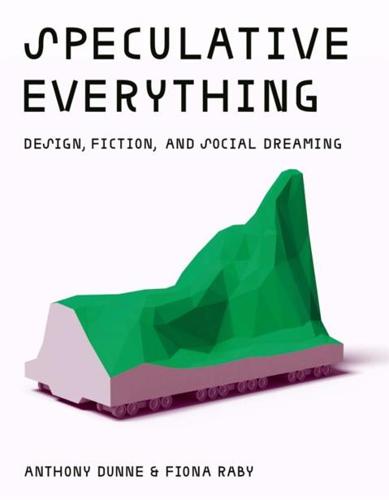
Speculative Everything: Design, Fiction, and Social Dreaming
by
Anthony Dunne
and
Fiona Raby
Published 22 Nov 2013
Although not a strong novel by any means, Ben Elton's Blind Faith (2007) picks up current trends for dumbing culture down, extrapolating into a near future when inclusiveness, political correctness, public shaming, vulgarity, and conformism are the norm, a world where tabloid values and commercial TV formats shape everyday behavior and interactions. It can be found in film, too: Idiocracy (2006) and WALL-E (2008) are both set in worlds suffering from social decay and cultural dumbing down. The most recent example is Black Mirror (2012), a satirical miniseries for Chanel Four television in the United Kingdom. It fastforwards technologies being developed today by technology companies to the point at which the dreams behind each technology turn into nightmares with extremely unpleasant human consequences.
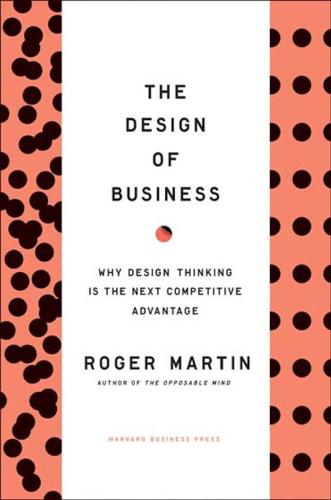
Design of Business: Why Design Thinking Is the Next Competitive Advantage
by
Roger L. Martin
Published 15 Feb 2009
In that 1965 speech, De Pree offered this scathing assessment: “American industrial programs of planned obsolescence have set up an industrial complex geared to producing waste, and a society trained to accept it.” His vision of an industrial landscape littered with drab, uninspiring products foreshadowed the consumer-apocalypse wasteland depicted in Pixar’s Wall-E. The De Pree design model worked for Herman Miller, thanks to the commitment of the De Pree family. But I am not sure it is the optimal model for other companies. The top managers of the design-thinking organizations of today and tomorrow do not merely place themselves between designers and line managers.
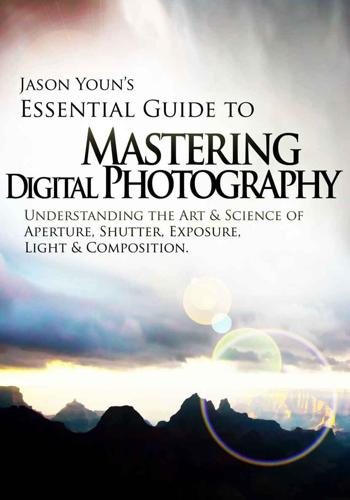
Mastering Digital Photography: Jason Youn's Essential Guide to Understanding the Art & Science of Aperture, Shutter, Exposure, Light, & Composition
by
Jason Youn
Published 12 Jul 2013
Because the images are so close together they can actually effect one another; if there is more than one image on your screen, you may want to cover one up so that you can only see one image at time. This way you can get a good sense of how the image stands on its own. Leading looks don't have to come from a face. We people like to anthropomorphize the objects around us; it's why movies like The Brave Little Toaster or Wall-e are popular. Our tendency to do this causes us to give names to cars and ships, and it causes us to attribute leading looks to objects that don't have ability to look at anything. These types of leading looks can come from any animal or anything that moves, or points, or is able to be anthropomorphic.

Science...For Her!
by
Megan Amram
Published 4 Nov 2014
Xander and I waited eight dates before we had sex, and now he and my ex–best friend are probably gonna get married in their favorite lava tube with a molten chocolate lava cake and bridesmaids that are dressed like virgin sacrifices to a volcano god of yore. It’s actually a really cute theme, but still, fuck them. Now, listen. I can only speak from a woman’s perspective. I’ve always been terrible at impressions, and I couldn’t do one of a man if my life depended on it. Actually, that’s a lie. I do a great impression of WALL-E, and technically I think he’s a man. Here, I’ll write a little bit of the impression for you: WAAAALLLLLLL-E. Impressions don’t work as well written out! For most people, the ten-minute rule might seem extreme. How do you know that they’re tested for STDs? That they’re not crazy? That their pubes aren’t shaved into a swastika or a strawberry (Hitler’s favorite berry)?
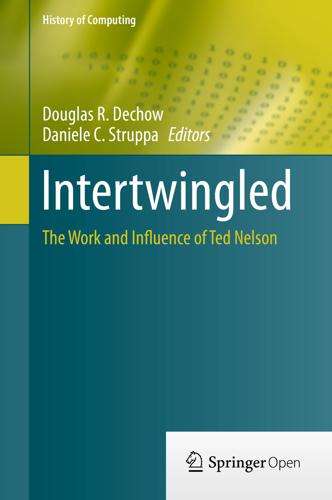
Intertwingled: The Work and Influence of Ted Nelson (History of Computing)
by
Douglas R. Dechow
Published 2 Jul 2015
Attempts to move computational media forward through pure engineering approaches, in areas such as computer graphics, give us awful “photorealistic” films such as 2007’s Beowulf—while those few who understand that computing and art must work together (that high-level technical goals cannot be set or evaluated apart from artistic goals) create much stronger, more stylized animations such as 2008’s WALL-E.3 Happily, some of the work that follows Logo and Smalltalk does come from those who understand these issues, and are themselves media makers. Ben Fry and Casey Reas, the initiators of Processing, are an accomplished artist and information designer. Matt MacLaurin and Stephen Coy, key creators of Kodu, are both game industry veterans.

100 Things We've Lost to the Internet
by
Pamela Paul
Published 14 Oct 2021
The local diner is quieter, families sitting together in front of their respective devices, eyes cast downward rather than across the table, giggling to themselves or their online companions rather than with one another. Nobody is whining about not getting to order chocolate chip pancakes for lunch or asking when the food will arrive; that’s all secondary. Instead, all are content, each in their own world like Pixar’s postapocalyptic WALL-E vision of earthlings, stripped of musculature and humanity, reclining blobbily in automated loungers, affixed to portable screens. Extracting a teenager from her phone at any meal can be such an epic struggle, it’s no wonder many parents have stopped trying. Only one in three American teenagers regularly silences, turns off, or puts away her phone when visiting extended family.

Physics of the Future: How Science Will Shape Human Destiny and Our Daily Lives by the Year 2100
by
Michio Kaku
Published 15 Mar 2011
A new scale that does is based on another concept, called entropy. RANKING CIVILIZATIONS BY ENTROPY Ideally, what we want is a civilization that grows in energy and information, but does so wisely, so that its planet does not become unbearably hot or deluged with waste. This was graphically illustrated in the Disney movie Wall-E, where in the distant future we have so polluted and degraded the earth that we simply left the mess behind and lead self-indulgent lives in luxury cruise ships drifting in outer space. Here’s where the laws of thermodynamics become important. The first law of thermodynamics simply says that you can’t get something for nothing, i.e., there is no free lunch.
…
See Civilizations Ulam, Stanislaw Ultracentrifuges United States, economic future of Universal translators Utopias Vacations in 2100 Venter, J. Craig Verne, Jules, itr.1, 6.1 Victoria, Queen of England Vinge, Vernor, 2.1, 2.2 Virgin Galactic spacecraft Virtual reality Virtual retinal display (VRD) Viruses, 1.1, 3.1, 3.2, 8.1 Volcano vents Von Neumann probes, 8.1, 8.2 Wall-E (movie) Wall screens Wanamaker, John War, changing nature of Warner, Harry M. Water as utility, 7.1, 7.2 Water in space, search for, 6.1, 6.2 Watson, James, 3.1, 3.2 Watson, Thomas Wealth. See Economics Weightlessness problem in space Weiser, Mark, 1.1, 1.2 Wells, H. G., 3.1, 3.2 Westphal, Christoph What Is Life?
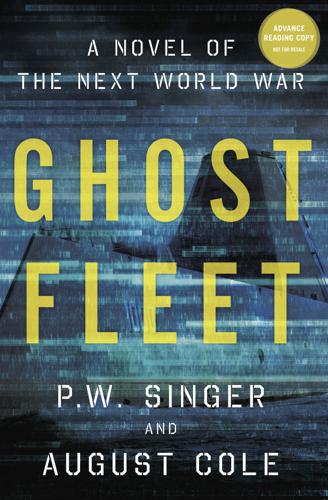
Ghost Fleet: A Novel of the Next World War
by
P. W. Singer
and
August Cole
Published 28 Jun 2015
“I’m thinking we need to give them an umbrella. I’ll take Eagle and Wall-E elements of the escort to mix it up. You take Viper element on with the big boys to keep ’em safe and give the ground pounders some support, over.” “Understood, Roscoe. Just like an Eagle driver to steal all the glory,” Oscar responded. “We’ll get them through. Good hunting, over.” “Eagle Flight, I know you heard that conversation. Form up on me.” Then he paused, and when he spoke again, he made sure to enunciate his words. They said the voice-recognition software would work anyway, but he wanted to be certain. “Wall-E Flight. Authorization Roscoe.
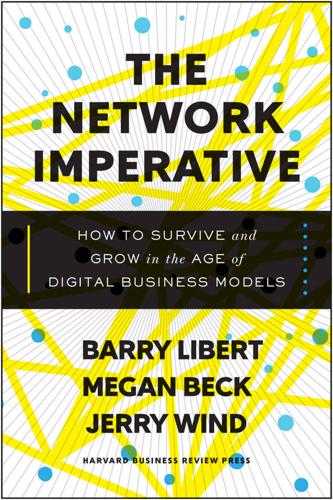
The Network Imperative: How to Survive and Grow in the Age of Digital Business Models
by
Barry Libert
and
Megan Beck
Published 6 Jun 2016
On the Lego Ideas web page, customers share their ideas for new Lego sets. Ideas that gather ten thousand supporters go before a review board, which selects the best options, and those aligned with Lego’s values, for production. The latest release from Lego Ideas is the lovable robot from Pixar’s movie WALL-E. Lego also facilitates interaction among customers, helping Lego enthusiasts of all ages share their passion and great ideas. Lego has a thriving community of enthusiasts who share words, photos, and videos. The Lego Digital Designer software, which customers can use to create and share their own custom designs (along with instructions for building them), is available free.
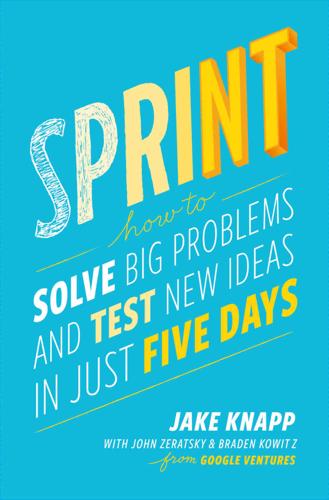
Sprint: How to Solve Big Problems and Test New Ideas in Just Five Days
by
Jake Knapp
,
John Zeratsky
and
Braden Kowitz
Published 8 Mar 2016
Steve chose the moment of delivery. Get it right, and the guest is delighted. Get it wrong, and the front desk might spend all day answering questions from confused travelers. One big concern came up again and again: The team worried about making the robot appear too smart. “We’re all spoiled by C-3PO and WALL-E,” explained Steve. “We expect robots to have feelings and plans, hopes and dreams. Our robot is just not that sophisticated. If guests talk to it, it’s not going to talk back. And if we disappoint people, we’re sunk.” On Tuesday, the team switched from problem to solutions. Instead of a raucous brainstorm, people sketched solutions on their own.
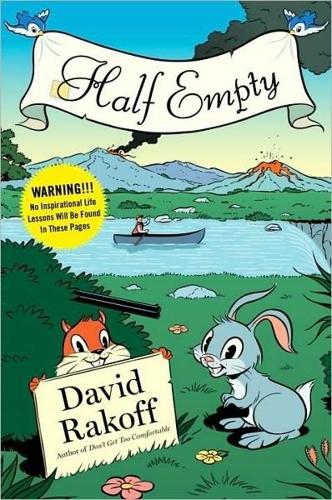
Half Empty
by
David Rakoff
Published 20 Sep 2010
The Dream Home, therefore, exists in an unspecified time and space when the challenges of oil and sprawl have been vanquished, although how exactly is never mentioned. Disney may have said it first but they seem to have forgotten that it really is a small world, after all. In an odd coincidence, the very week that the Dream Home opened, at the other end of the Disney corporation’s spectrum, Pixar releases Wall-E, its thoroughly dystopian masterpiece, a film premised on a world choked by garbage and waste, a planet no longer habitable and made so, at least in part, by—let’s not mince words—the fat fucks who build gargantuan homes that make little or no concession to the limited resources out there. The Monsanto House of the Future actually began as a research project between the chemical company and MIT as a means of exploring the ways in which plastics and man-made materials could be harnessed in ways they never had been previously.
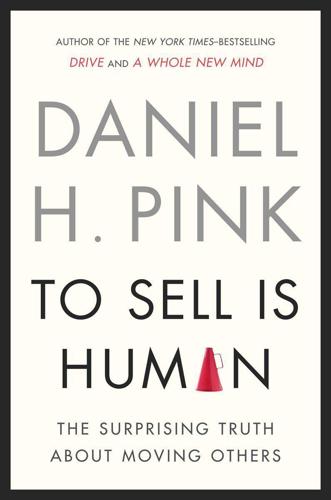
To Sell Is Human: The Surprising Truth About Moving Others
by
Daniel H. Pink
Published 1 Dec 2012
Thirty-five years later, it’s one of the most successful studios in movie history. Starting with Toy Story in 1995, Pixar has produced thirteen feature films that together have grossed $7.6 billion worldwide, an astonishing $585 million per movie.23 Six Pixar films—Finding Nemo, The Incredibles, Ratatouille, WALL-E, Up, and Toy Story 3—have won the Academy Award for Best Animated Feature, just a few of the twenty-six total Oscars the studio has taken home. How does Pixar do it? Success has many parents—the foresight of Steve Jobs, who invested in the company early; the distribution and marketing muscle of the Walt Disney Company, which struck a development deal with the studio early on and acquired it in 2006; the meticulous attention to detail for which Pixar’s army of technical and artistic talent is renowned.
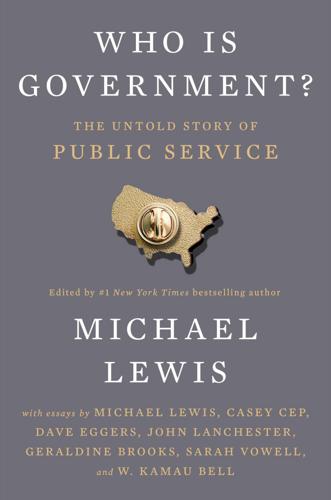
Who Is Government?: The Untold Story of Public Service
by
Michael Lewis
Published 18 Mar 2025
We pass a flat expanse about the size of a few basketball courts; it’s full of red dirt and rocks, with mini-craters and gullies. “That’s the Mars yard, where they tested the Opportunity rover.” We pause briefly. There are a pair of rover replicas sitting idle in the sun. “Everybody’s always surprised that the rover is bigger than they expect. It’s the size of an SUV! Or maybe they just saw ‘WALL-E’ and think it’ll be that size.” The golf cart climbs the hill and finally arrives at a nondescript warehouse at the top of the campus. Siegler jumps out of the cart and leads us to the door. “Okay. All right. In here, you can touch everything. Welcome to the world of the Starshade.” He opens the door to what looks like an airplane hangar.
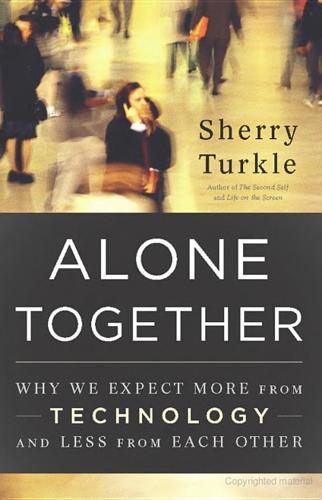
Alone Together
by
Sherry Turkle
Published 11 Jan 2011
Traditional science fiction, from Frankenstein to the Chucky movies, portrays the inanimate coming to life as terrifying. Recently, however, it has also been portrayed as gratifying, nearly redemptive. In Star Wars, R2D2 is every child’s dream of a helpmate. In Steven Spielberg’s A.I.: Artificial Intelligence, a robot’s love brings hope to a grieving mother. In Disney’s WALL-E, a robot saves the planet, but more than this, it saves the people: it reminds them how to love. In 9, the humans are gone, but the robots that endure are committed to salvaging human values. An emerging mythology depicts benevolent robots. I study My Real Baby among children five through fourteen.
…
and intimacy, ideas about networked life and performances by philosophical traditions in dialogue with, and relationships with reflecting on as symptom and dream of Social networks hacking and profiles and identity on Solitude intimacy and Sontag, Susan Sony Space public and private online, special qualities of sacred Speak & Spell (electronic game) Spielberg, Steven Spontaneity, loss of in online life Spoon (band) Stalking, online Star Wars (film) Starner, Thad Starr, Ringo State Radio (band) Storr, Anthony Strangers confessions, online, and as “friended,” Super Mario (game) Symptoms, dreams and Tamagotchis caring for death of feelings attributed to primer, notion of Technology blaming communities and complex ecology of complex effects of confusion about relationships and efficiency and embracing, with cost and expectations of ourselves holding power of keeping it busy, notion of mythology and narcissistic style and Oedipal story to discuss limitations of as prosthesis thinking about Teddy bears Tethered life Texts apology, use of for complexity of feelings about control, and conversations through feelings, path toward giving up hastily composed as interruptions loneliness and protective qualities of reflecting on (adolescents) seductiveness of speed up of communication and spontaneity and teaching parents about Thompson, Clive Thoreau, Henry David Toddlers, mechanical (Kismet and Cog) Transference, the Trust robotic Turing, Alan Turing test, the Turner, Victor Turtles, live/robot Twain, Mark Tweets Twitter Ultima 2 (game) Upside-down test (Freedom Baird) Vacations, offline Vadrigar Venting Virginia Tech Virtual self and virtual places Voice Voicemail Walden (Thoreau) Walden 2.0: WALL-E (film) Wandukan, development of Weak ties Wearable Computing Group (MIT) Weiner, Norbert: cybernetics and Weizenbaum, Joseph Wi-Fi Willard, Rebecca Ellen Turkle Wired World of Warcraft (game) YouTube Zhu Zhu pet hamsters Zone, The a In this book I use the terms the Net, the network, and connectivity to refer to our new world of online connections—from the experience of surfing the Web, to e-mail, texting, gaming, and social networking.

The Singularity Is Nearer: When We Merge with AI
by
Ray Kurzweil
Published 25 Jun 2024
Previous AI systems had generally been limited to inputting and outputting one kind of data—some AI focused on recognizing images, other systems analyzed audio, and LLMs conversed in natural language. The next step was connecting multiple forms of data in a single model. So OpenAI introduced DALL-E (a pun on surrealist painter Salvador Dalí and the Pixar movie WALL-E),[105] a transformer trained to understand the relationship between words and images. From this it could create illustrations of totally novel concepts (e.g., “an armchair in the shape of an avocado”) based on text descriptions alone. In 2022 came its successor, DALL-E 2,[106] along with Google’s Imagen and a flowering of other models like Midjourney and Stable Diffusion, which quickly extended these capabilities to essentially photorealistic images.[107] Using a simple text input like “a photo of a fuzzy panda wearing a cowboy hat and black leather jacket riding a bike on top of a mountain,” the AI can conjure up a whole lifelike scene.[108] This creativity will transform creative fields that recently seemed strictly in the human realm.
…
See epochs thought-to-text technology, 70–71 3D printing, 144, 178, 183–89 of buildings, 170, 187–89 medical implants, 184, 185, 186 miniaturization, 169 of solar cells, 173 thumbs, opposable, 8, 37, 245 tidal power, 154, 173 tigers, 86 TikTok, 212–13, 218 Tinder, 232 Titan X, 166, 310–11 tokens, 46–47, 55 tool making, 37 top-down approach to nanotech, 249–50 totalitarianism, 162, 297n, 298n traffic accidents, 229 Training Compute (FLOPS) of Milestone Machine Learning Systems Over Time, 57, 57–58 Transcend (Kurzweil and Grossman), 191, 255, 348n transformers, 46–47, 99, 239 transgender people, 109 transistors, 3, 40, 164, 168, 245–46, 251 transparency in AI, 18, 163, 282, 399n transplanted organs, 186 transport technology speeds, 113 tripartite brain, 30 Troyanskaya, Olga, 242 truck drivers, 196–97, 229–30 Turing, Alan, 12, 60, 63, 67 Turing test, 8–9, 9, 12–13, 60, 71, 103, 287 panprotopsychist point of view, 81 passing, 63–69 Tversky, Amos, 120–21 typhoid fever, 177 U uncanny valley, 100–101, 102 unconscious competence, 32 underground economy, 217–18 uniformitarianism, 39 United Kingdom Asilomar Principles, 280 crime, 149 crime rates, 118 education and literacy, 127 GDP, 114 life expectancy, 134, 136 literacy, 124, 125 nuclear weapons, 269 poverty rate, 117 social safety net, 223 spread of democracy, 159, 160–61, 162 United Nations, 169–70, 274 Millennium Development Goals, 138 United States Army Medical Research Institute of Infectious Diseases (USAMRIID), 272 United Therapeutics, 186 UNIVAC 1103, 165, 300 universal basic income (UBI), 226 universal constructor, 247, 249 Universal Sentence Encoder, 45 university education, 206–7, 207 University of Cambridge, 78 University of Pittsburgh, 237 University of Southern California, 238 upskilling, 208, 209 V vaccines, 227, 237–38, 273 vacuum tubes, 40, 168 value alignment, 280, 283 vandalism, 150 vertical agriculture, 169, 171, 178, 179–83, 182 violence, 118–19, 148–54, 230 decline in, 118–19, 148–54 public perception of rising, 118, 118–20, 152 in US, 151 virtual meetings, 170–71 virtual reality (VR), 170–71, 285, 289 virtual-world driving, 195–96 virtuous circles, 152–53 viruses, 236, 271–73. See also COVID-19 pandemic voice, 38, 56 voting rights, 161–62 W wage labor, 200–201, 209–10, 220 Walker, Richard, 115 WALL-E (movie), 49 water purification and distribution, 177–79 Watson (computer), 64–65 Waymo, 43, 195–96. See also Google weak nuclear force, 96–97 weapons, 274–76, 280–82. See also nuclear weapons Weibel, Peter, 245 well-formed formulas (WFFs), 15 whole-brain emulation (WBE).
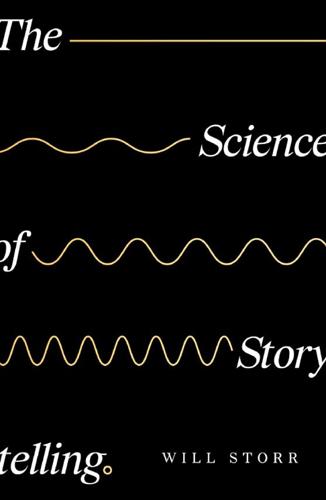
The Science of Storytelling: Why Stories Make Us Human, and How to Tell Them Better
by
Will Storr
Published 3 Apr 2019
Yorke additionally believes there’s a hidden symmetry in story, in which protagonists and antagonists function as opposites with their rising and falling fortunes mirroring one another. The Hollywood animation studio Pixar is home to some of the most successful mass-market storytellers of our age. ‘Story artist’ Austin Madison, who’s worked on blockbusters including Ratatouille, Wall-E and Up, has shared a structure he says all Pixar films must adhere to. The action starts with a protagonist who has a goal, living in a settled world. Then a challenge comes that forces them into a cause-and-effect sequence of events that eventually builds to a climax that demonstrates the triumph of good over evil and the revelation of the story’s moral.

Architects of Intelligence
by
Martin Ford
Published 16 Nov 2018
In those risk scenarios, we head towards an enfeebled human society where we’ve moved too much of our knowledge and too much of our decision-making into machines, and we can never recover it. We could eventually lose our entire agency as humans along this societal path. This societal picture is how the future is depicted in the WALL-E movie, where humanity is off on spaceships and being looked after by machines. Humanity gradually becomes fatter and lazier and stupider. That’s an old theme in science fiction and it’s very clearly illustrated in the WALL-E movie. That is a future that we need to be concerned about, assuming we successfully navigate all the other risks that we’ve been discussing. As an optimist, I can also see a future where AI systems are well enough designed that they’re saying to humans, “Don’t use us.

Empire of AI: Dreams and Nightmares in Sam Altman's OpenAI
by
Karen Hao
Published 19 May 2025
OpenAI would do the release itself and put the technology directly into the hands of consumers. The model even had an eye-catching name from the original researchers who’d developed it in the company: DALL-E 2, a play off the Spanish surrealist artist Salvador Dalí and the titular robot in the Disney Pixar movie WALL-E. DALL-E had spun out of a trend in the broader field of AI research to develop multimodal models—models that combine at least two different “modalities,” such as text, images, sound, or video. For years the field had been working to merge the first two—language and vision—so a single model would be capable of relating words to visual information.
…
See also DALL-E Thiel, Peter Altman and, 26–27, 36, 38–39, 39–42 Founders Fund, 38 founding of OpenAI, 12–13, 50 “monopoly” strategy of, 39–40, 142 Palantir, 38, 69 PayPal, 38, 40, 142 Trump and, 38, 42 Threads, 260 Three-Body Problem, The (Liu), 83 Three Mile Island, reopening, 275 TikTok, 304 Tiku, Nitasha, 253–54 Time (magazine), 137, 192, 210, 416–17 Tironi Rodó, Martín, 273–74, 297–98, 300 Toner, Helen, 58 Altman and board, 7, 11, 253, 321–22, 375, 376 leadership behavior, 324, 348–51, 353–55, 356–59, 361–62, 364 “costly signals” paper, 357–59, 364 Murati and, 348–51, 356–57 Sutskever and, 325, 343, 351–52, 353–55, 359–60 Tools for Humanity, 185–86 TPUs (tensor processing units), 171 transcription, 220–21 Transformers, 120–22, 158–59, 160, 165–66, 169, 235 transparency, 5, 9, 14, 19–20, 81, 82, 86, 119, 134, 143, 166, 167, 172, 173–74, 230, 301, 384, 403, 406, 419–20 Trump, Donald, 38, 42, 51, 195, 321, 406 Tuna, Cari, 230 Turing, Alan, 81–82, 89, 91, 93, 373 Turing Award, 105, 162 Turing machine, 81–82, 91 Twitch, 9, 34, 367 U Uber, 106, 107, 110, 136, 194, 228 Ukraine war, 52, 191 “United Slate, The” (Altman), 42 universal basic income (UBI), 85, 185–86 University of Applied Sciences Dresden, 196 University of California, Berkeley, 49, 56, 108, 118, 217, 235, 419 University of California, Los Angeles, 162 University of California, San Diego, 97 University of Chicago, 272–73, 296 University of Massachusetts Amherst, 79–80, 159–60 University of Toronto, 47, 105, 117 “unknown unknowns,” 249 Upwork Research Institute, 18 Uruguay, 272, 417 data centers, 291–96 water crisis, 292–95 Utawala, Kenya, 190, 209, 211 V Vallejos, Rodrigo, 296–99 veil of ignorance, 3 Venezuela crisis, 195–97, 203 Venezuela, data annotation, 195–96, 198–202, 203–4, 218 Victoria, Lake, 207 Villagra, Julia, 389–90 Vincent, James, 119 Virginia, data centers, 278 Volpi, Mike, 203 Volta, Alessandro, 133 W WALL-E (movie), 234 Wall Street Journal, The, 33, 35, 41, 69, 102, 188, 193, 212, 280, 367, 384, 390–91, 416 Wang, Alexandr, 202–3, 213, 218 Warzel, Charlie, 370 Washington Post, The, 69, 114, 253, 371, 400, 403 water pollution, 293 water resources, 15, 17, 271, 273, 275, 277–78, 280–84, 287–96, 297, 299 Watson Health, 99 Waymo, 100 Weil, Elizabeth, 326–27, 328–29, 332–33, 336–40, 343 Weil, Kevin, 404 Weinstein, Emily, 307, 309 Weizenbaum, Joseph, 95–97, 420–21 Welinder, Peter, 150, 155, 250–51 Weng, Lilian, 267, 406 West, Kanye, 221 West, Sarah Myers, 308 Whale, 279–80 Whisper, 244, 247, 267, 413 whistleblower protections, 403 white hats, 107–8 Wikipedia, 57, 125, 135, 221 Willner, Dave, 238, 249–52, 267, 406 WilmerHale, 375 Wong, Hannah, 256, 326–28, 338–40 workplace impacts, 78–81, 114–15, 222, 265–66 World Bank, 207 Worldcoin, 185–86 World War II, 29, 91 X X (formerly Twitter), 3, 257, 260, 312, 328, 368–69 xAI, 321, 322, 397, 403, 404–5 Xerox PARC, 54–55 Y Yale University, 196, 291 Y Combinator, 23, 27–28, 32, 34, 36–38, 39, 43 Yom Kippur, 326–27 YouTube, 34, 51–52, 102–3, 136, 244–45, 334 Yudkowsky, Eliezer, 319–20 Z Zaremba, Wojciech, 59, 152, 181–82 Zenefits, 36 Zilis, Shivon, 63, 320–21, 324, 384 Zoloft, 329, 330 Zoph, Barret, 247, 381–82, 387, 404, 406 Zuboff, Shoshana, 101 Zuckerberg, Mark, 38, 42, 159, 311, 406–7 A B C D E F G H I J K L M N O P Q R S T U V W X Y Z About the Author Karen Hao is an award-winning journalist covering the impacts of artificial intelligence on society.
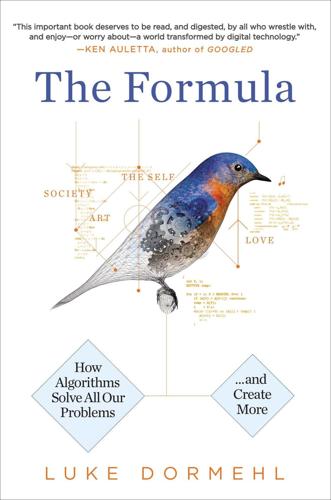
The Formula: How Algorithms Solve All Our Problems-And Create More
by
Luke Dormehl
Published 4 Nov 2014
At around the same time that Avatar was gaining momentum, a second project was doing the rounds in Hollywood. This was another science-fiction film, also in 3-D, based upon a classic children’s story, with a script cowritten by a Pulitzer Prize–winning author, and was to be made by Andrew Stanton, a director with an unimpeachable record who had previously helped create the highly successful Pixar films WALL-E and Finding Nemo, along with every entry in the acclaimed Toy Story series. Stanton’s film (let’s call it “Project X”) came with a proposed $250 million asking price to bring to the screen—a shade more than Project 880. Project X received the go-ahead too, only this didn’t turn out to be the next Avatar, but rather the first John Carter, a film that lost almost $200 million for its studio and resulted in the resignation of the head of Walt Disney Studios (the company who bankrolled it), despite the fact that he had only taken the job after the project was already in development.
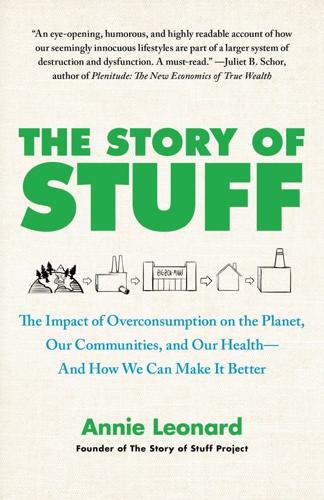
The Story of Stuff: The Impact of Overconsumption on the Planet, Our Communities, and Our Health-And How We Can Make It Better
by
Annie Leonard
Published 22 Feb 2011
Had those cans been recycled, 16 billion kilowatt hours could have been saved—enough electricity for more than two million European homes for a year.”96 I saw a great depiction of the irrationality of aluminum beverage cans when I was working on waste issues in Budapest in 2007. HuMuSz, an organization there that raises awareness about waste, had made a series of short, entertaining films that play before feature films in Hungarian movie theaters. My favorite film took place in a WALL-E-like, totally trashed planet Earth of the future, where aliens arrive to conduct research. They find one remaining human being and grill him for answers about the incredibly valuable and widely dispersed pieces of aluminum strewn about the planet, convinced these were used for communications, military, or medical purposes.
…
It’s now the number-one seller of groceries, clothing, home furnishings, toys, and music in the United States.69 Americans are buying many of their DVDs, cameras, home appliances, and common household items like toothpaste, shampoo, and diapers there too. It sells gas. It’s even opened health clinics. And it has been trying to overturn laws that keep it from offering banking services.70 Remember the corporation in the film WALL-E that basically owned the planet, providing every good and service on, and then beyond, earth? It’s really not that far-fetched; Wal-Mart seems to be headed in that very direction. In contrast to Amazon, however, Wal-Mart offers at most only a couple of varieties of any given product. About 40 percent of products sold are its own private label brands, meaning they’re produced exclusively for Wal-Mart.71 Yet, even without the variety available at Amazon, the “always low prices, always” promised in these huge one-stop-shopping emporia are enough to keep people coming back again and again.
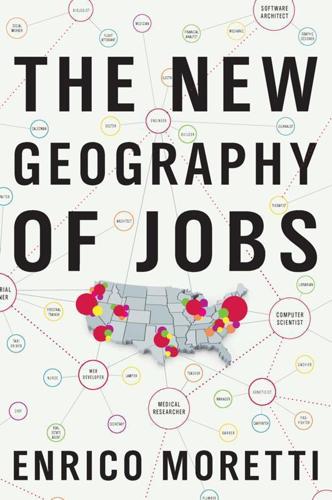
The New Geography of Jobs
by
Enrico Moretti
Published 21 May 2012
Glynn is a color scientist and lead engineer at Pixar Animation Studios, where he spends his days bringing animated creatures to life. His office, located in Pixar’s bright red brick facility in Emeryville, California, overflows with toys, which is not unusual on Pixar’s campus. He has worked on many films, including Cars, Ratatouille, WALL-E, Up, and Toy Story 3. If you liked the colors in those movies, Glynn and his team are the ones to thank. Glynn is in his thirties, plays baroque violin, and has a beautiful three-year-old daughter. When I met him, he was busy finishing Cars 2. He told me that the math he uses is simple, but for some reason I was skeptical.
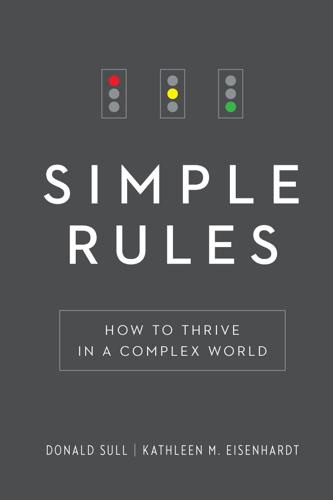
Simple Rules: How to Thrive in a Complex World
by
Donald Sull
and
Kathleen M. Eisenhardt
Published 20 Apr 2015
It took a while and there were blips, but Pixar created something close to a hit moviemaking factory. By getting the right people on a given movie at the right stage every year and then annually rotating them to the next movie, Pixar was able to consistently turn out creative successes, from Monsters, Inc., Finding Nemo, The Incredibles, and Ratatouille to Wall-E and Up. The one-movie-per-year rule worked because, like all time-pacing rules, it gave people a rhythm with a goal and a sense of urgency to achieve it. The rule also proved efficient because it kept everyone continuously busy and not sitting around waiting for their next job—a very costly proposition.
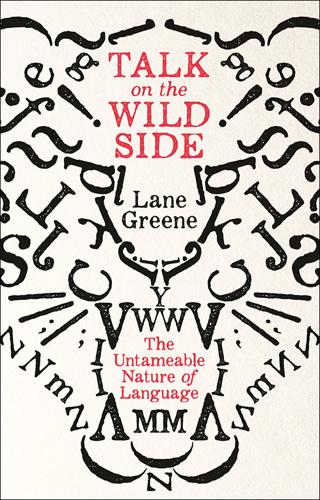
Talk on the Wild Side
by
Lane Greene
Published 15 Dec 2018
Today, the natural metaphor is a computer.1 As humans have conceptualised the mind as a kind of machine, a second thought – perhaps just as unsettling – has occurred to them. How would we know if an intelligent-seeming machine has a mind? And if it does, how would we know it’s benign? Adorable thinking machines like the robot from the eponymous WALL-E are the exception, in popular culture. For some reason, when we imagine thinking machines, we imagine them as heartless: it’s easier to imagine computers thinking than caring, so fiction has given us more memorable murderers, Terminators and HAL 9000s than it has automated pals. But how could we tell that a machine is thinking, rather than just responding to input according to instructions?

Army of None: Autonomous Weapons and the Future of War
by
Paul Scharre
Published 23 Apr 2018
—World Economic Forum Annual Meeting 2016 | World Economic Forum,” video, accessed June 7, 2017, https://www.weforum.org/events/world-economic-forum-annual-meeting-2016/sessions/what-if-robots-go-to-war. 109 “decisions to release a lethal mechanism”: John Ingham, “WATCH: Unmanned Test Plane Can Seek and Destroy Heavily Defended Targets,” Express.co.uk, June 9, 2016, http://www.express.co.uk/news/uk/678514/WATCH-Video-Unmanned-test-plane-Taranis. 109 “The UK does not possess”: UK Ministry of Defence, “Defence in the Media: 10 June 2016,” June 10, 2016, https://modmedia.blog.gov.uk/2016/06/10/defence-in-the-media-10-june-2016/. 110 “must be capable of achieving”: UK Ministry of Defence, “Joint Doctrine Note 2/11: The UK Approach to Unmanned Aircraft Systems,” March 30, 2011, https://www.gov.uk/government/uploads/system/uploads/attachment_data/file/33711/20110505JDN_211_UAS_v2U.pdf, 2-3. 110 “As computing and sensor capability increases”: Ibid, 2–4. 111 one short-lived effort during the Iraq war: “The Inside Story of the SWORDS Armed Robot ‘Pullout’ in Iraq: Update,” Popular Mechanics, October 1, 2009, http://www.popularmechanics.com/technology/gadgets/4258963. 112 “the military robots were assigned”: Alexander Korolkov and special to RBTH, “New Combat Robot Is Russian Army’s Very Own Deadly WALL-E,” Russia Beyond The Headlines, July 2, 2014, https://www.rbth.com/defence/2014/07/02/new_combat_robot_is_russian_armys_very_own_deadly_wall-e_37871.html. 112 “Platform-M . . . is used”: Ibid. 112 videos of Russian robots show soldiers: This video (https://www.youtube.com/watch?v=RBi977p0plA) is no longer available online. 114 According to David Hambling of Popular Mechanics: David Hambling, “Check Out Russia’s Fighting Robots,” Popular Mechanics, May 12, 2014, http://www.popularmechanics.com/technology/military/robots/russia-wants-autonomous-fighting-robots-and-lots-of-them-16787165. 114 amphibious Argo: “Battle Robotic complex ‘Argo’—Military Observer,” accessed June 7, 2017, http://warsonline.info/bronetechnika/boevoy-robotizirovanniy-kompleks-argo.html. 114 Pictures online show Russian soldiers: Tamir Eshel, “Russian Military to Test Combat Robots in 2016,” Defense Update, December 31, 2015, http://defense-update.com/20151231_russian-combat-robots.html. 115 slo-mo shots of the Uran-9 firing: Rosoboronexport, Combat Robotic System Uran-9, n.d., https://www.youtube.com/watch?
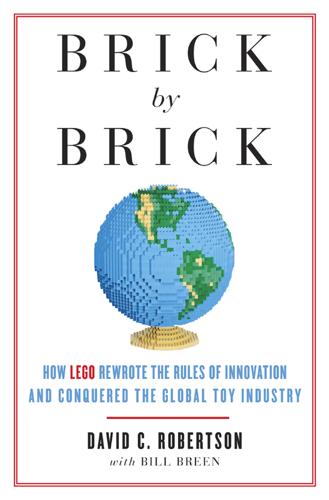
Brick by Brick: How LEGO Rewrote the Rules of Innovation and Conquered the Global Toy Industry
by
David Robertson
and
Bill Breen
Published 24 Jun 2013
When the kids weren’t competing, many swarmed the LEGO Mindstorms booth, where LEGO staffers delivered coaching tips on the finer points of building a better bot and expert adult hobbyists showed off their over-the-top creations, such as Mindstorms Moon Rovers and an astoundingly faithful, LEGO-ized re-creation of Wall-E, the famous robot from the Disney/Pixar movie of the same name. For a couple of hours, a group of LEGO software developers and other staff members slipped away from the booth and into a vacant hallway, where they met with a thirteen-year-old college student and FIRST LEGO League competitor from Beaverton, Oregon, named Tesca Fitzgerald.

Street Smart: The Rise of Cities and the Fall of Cars
by
Samuel I. Schwartz
Published 17 Aug 2015
On a purely personal level, I’m a little taken aback by the promise that autonomous vehicles will be able to collect you at your front door and deposit you at the front door of a supermarket or shopping mall—or even at your desk or workstation—without your feet ever touching the ground. In the Disney movie Wall-E, spaceship-bound refugees from an Earth destroyed by environmental catastrophe are so well cared for by their robot transportation devices that hardly anyone even stands up anymore, with the result that the universe’s entire remaining population of Homo sapiens is morbidly obese. This, it seems to me, is not a particularly utopian future—one in which fewer people die from crashes, but more get hypertension and diabetes at ever-younger ages.

The Fourth Age: Smart Robots, Conscious Computers, and the Future of Humanity
by
Byron Reese
Published 23 Apr 2018
If a fast-food robot costs $10,000, would a business rather pay a human a $15 minimum wage—or a $10 minimum wage, or any minimum wage? A massive displacement of this sort would represent a dramatic shift of economic power away from labor and toward those who own the robots. Another widespread concern is the potential for a WALL-E future. In that world, we become permanently sedentary when we no longer have to work. On top of that, our brains atrophy as well, since the machines maintain themselves, as well as everything else. Some fear that we will form emotional attachments to robots so strong that they will supplant bonds between humans.

All Day Long: A Portrait of Britain at Work
by
Joanna Biggs
Published 8 Apr 2015
‘Thinking of it as a maintenance engineer would,’ said Craig Scott, who had an orange robot arm embroidered on his black polo shirt, ‘within any cell, there’s generally one or two robots that tend to be a bit more of a pain in the backside.’ ‘But they’re normally called things that we probably couldn’t repeat on that,’ Hart said, pointing to my dictaphone. Robots in movies have cute names like Wall-E or not so cute ones like Terminator; I liked the idea that in real life there might be a robot called Fuckwit. The robot engineers treated the robots as the machines they are: the car parts the robots made, however, did have nicknames. A ‘bird bath’, named for an indent shallow enough for birds to splash in, was the rear floor of the Mini.
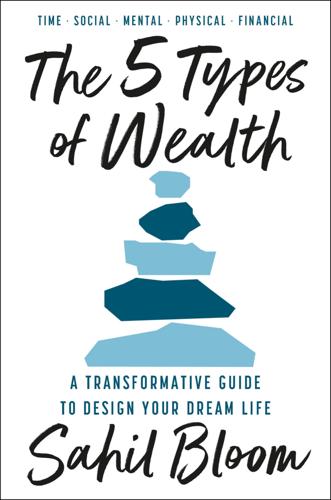
The 5 Types of Wealth: A Transformative Guide to Design Your Dream Life
by
Sahil Bloom
Published 4 Feb 2025
How to Build a Personal Board of Advisers: The Brain Trust Pillar: Breadth Pixar Animation Studios is widely regarded as one of the most creative studios of all time; its films have earned over twenty Academy Awards and countless other recognitions. Throughout its thirty-plus-year history, the studio has created and fostered beloved films, including Toy Story, Finding Nemo, A Bug’s Life, Monsters, Inc., The Incredibles, Wall-E, Coco, Inside Out, and more. If you are a parent or if you grew up in the 1990s or 2000s, odds are that you’ve fallen in love with a Pixar storyline and character. But this kind of prolific creative output doesn’t happen by chance. As Pixar cofounder Ed Catmull revealed in his bestselling book Creativity, Inc., systems and processes were deliberately put in place to ensure the absolute highest quality and consistency of the product across the decades.[20] One such system—referred to at Pixar as the Braintrust—is particularly relevant as a model that can be applied to our own lives.
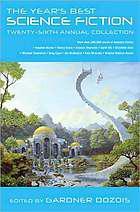
The Year's Best Science Fiction: Twenty-Sixth Annual Collection
by
Gardner Dozois
Published 23 Jun 2009
Of the year’s top ten highest-grossing films, of the nine that can be considered to be genre movies of one sort or another, three are superhero movies (The Dark Knight, Iron Man, and Hancock, with The Incredible Hulk finishing in fourteenth place and Hellboy II: The Golden Army finishing in thirty-eighth place); one is fantasy/adventure (Indiana Jones and the Kingdom of the Crystal Skull, with the comparable The Chronicles of Narnia: Prince Caspian finishing in thirteenth place); four are animated films (Wall-E, Kung Fu Panda, Madagascar: Escape 2 Africa, and Dr. Seuss’s Horton Hears a Who!, with superhero—sort of—animated feature Bolt finishing in nineteenth place, and The Tale of Despereaux, released at the end of the year, perhaps destined to climb the charts); and one is a glossy vampire/romance movie (Twilight).
…
, which finished in eleventh and twelfth places respectively—unless you want to make the somewhat arch argument that they’re fantasy films as well.) Like last year, there were almost no actual science fiction films on the list at all, even in the top hundred, let alone the top ten. The closest approach to a real SF film out this year was the animated film Wall-E, which did make the top ten list, in fifth place, in fact, and although its science was a bit shaky (you can’t make an ecosystem out of one plant and one cockroach), for the most part it treated its science fiction tropes with respect and intelligence, and what satiric needling there was at the genre was affectionate.
…
The closest approach to a real SF film out this year was the animated film Wall-E, which did make the top ten list, in fifth place, in fact, and although its science was a bit shaky (you can’t make an ecosystem out of one plant and one cockroach), for the most part it treated its science fiction tropes with respect and intelligence, and what satiric needling there was at the genre was affectionate. In fact, with its humans who have become so pampered and constantly waited on by machines that they’ve lost the ability to walk, it may be the purest expression of 1950s’ Galaxy-era social satire of the Pohl/Kornbluth variety ever put before the general public. Wall-E itself got treated with an amazing amount of respect for an animated film ostensibly for children, as Ratatouille and The Incredibles had been before it, and is probably the one out of the top-grossing genre films that came the closest to being treated as a “serious movie.” At least some animated films are big money-makers these days and are clearly not being watched only by children anymore (if they ever were only watched solely by children in the first place, which I doubt).

Wired for War: The Robotics Revolution and Conflict in the 21st Century
by
P. W. Singer
Published 1 Jan 2010
We will have to think not merely in terms of costs and benefits and how to get steel on target, but much more. How it gets that angry insurgent from being eager to fight to thinking that there is no point in it, there is no chance to win against a relentless foe.” If not all robots are going to look like Disney-Pixar’s cute and cuddly WALL-E (though one of the British army’s robots is a dead ringer), the first and easiest step to fearing up a robot is to equip it with effectors that can play a role in psyching out the enemy. If history is any guide, we can anticipate that this won’t just be about giving them a scary look, as with the Redcoats, but also a scary sound.
…
unit cohesion and war crimes and war porn and warrior redefined by see also military robotics; robotics; robots; war, warfare Unrestricted Warfare (Qiao and Wang) Urbanscape program USV (unmanned surface vessel) U-2 spy plane UUV (unmanned underwater vehicle) V-1 rocket V-2 missile V-3 (supercannon) van Creveld, Martin Vanguard (robot) Varian, Paul Vaucanson, Jacques de Vaucanson’s duck VB-1 Azons (radio-controlled bomb) Vego, Milan Velvet Underground Verdun, Battle of Verhoff, Donald VeriChip company Verne, Jules Verruggio, Gianmarco Very-high-altitude, Ultra-endurance, Loitering Theater Unmanned Reconnaissance Element (VULTURE) Vick, Michael Vietnam Vietnam War My Lai atrocity in smart bombs in Tonkin Gulf Incident and UAVs in Vincennes, U.S.S. Vinge, Vernor Virgin Galactic VisiBuilding technology Vulcans (advisory group) VULTURE (Very-high-altitude, Ultra-endurance, Loitering Theater Unmanned Reconnaissance Element) Wachowski, Larry and Andy Walker, David Wallace, William WALL-E (robot) Wal-Mart data mining by Walzer, Michael Wang company Wang Xiangsui war, warfare China’s strategic view of cities as center of dehumanization and discrimination rule of experience of going off to Fussell on future of human psychology and human rights and hybrid ideals and international law and irregular just war theory and medical advances and new warrior class and and obsolete warrior open source physical implants and enhancements for private contractors and proportionality rule of public’s disconnect from redefining and resistance to change study of technology and future of unmanned, see unmanned warfare War and Human Nature (Rosen) Ward, Edward warfighters’ associate concept Warfighters’ Perspectives panel War Games (film) War Made New (Boot) Warner, John Warrior (robot) Wars of Blood and Faith: The Conflicts That Will Shape the Twenty-first Century (Peters) War of the Worlds, The (Wells) Warwick, Kevin Washington Post Wasp (unmanned aerial vehicle) Waterloo, Battle of Watson, Thomas Wegerbauer, Cyndi Wegner, Thomas Weinberg, Gil Welles, Orson Wells, H.G.
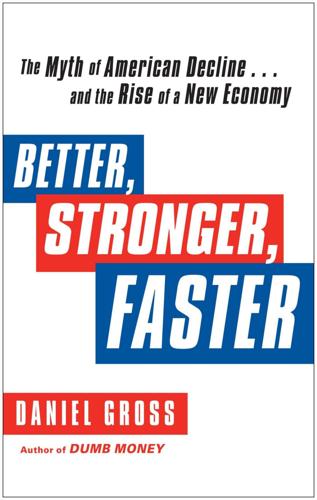
Better, Stronger, Faster: The Myth of American Decline . . . And the Rise of a New Economy
by
Daniel Gross
Published 7 May 2012
And therein lies the key to debunking another enduring myth about America’s economic present—and future. CHAPTER 7 The Myth of Not Making Stuff the World Wants To hear declinists tell it, the United States doesn’t make anything anymore. It can’t compete on wages. It has outsourced, offshored, and dismantled its way to economic oblivion. Americans are like the humans in the film Wall-E, consuming everything, producing nothing: useless, obese spectators. While the rest of the world’s nations are getting rich, trading with each other and selling stuff to Americans, a mere 1 percent of American firms manage to export. But that’s a myth too. In fact, as Donald Trump might say, the United States is a world-class exporter.
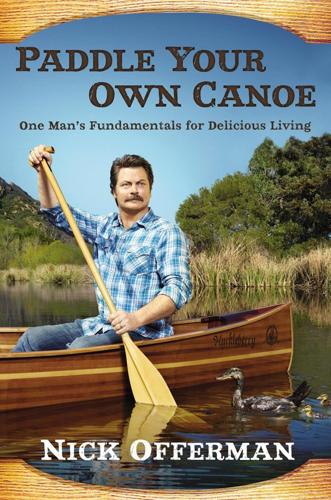
Paddle Your Own Canoe: One Man's Fundamentals for Delicious Living
by
Nick Offerman
Published 30 Sep 2013
It feels like we’re participating in society. We’re present in the moment as we share the road with one another, passing on the left, waving for one another to go ahead and pull out of that driveway, giving one another a spirited middle-finger salute. . . . When will it end? I found the infantile grown-ups in the great film WALL-E to be poignantly frightening. Fat, mewling adult larvae, floating about in cradle-chairs, being fed their daily pap in the form of only blended shakes. Orwell predicted that shit, and it scares me to death. Here’s my trip: Our cool, new technologies provide us with a surplus of convenience, and it seems to me that an overabundance of convenience leaves us with a surplus of leisure time.
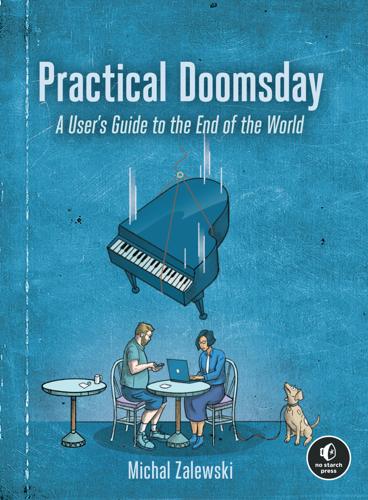
Practical Doomsday: A User's Guide to the End of the World
by
Michal Zalewski
Published 11 Jan 2022
In the 1960s, the venerable genre expanded to include hitherto unthinkable predictions of environmental crises brought on by people—be it overpopulation, pollution, or resource depletion. To this day, whether it’s the asteroid in Armageddon, the infertility in Children of Men, the cartoonish consumerism of WALL-E, or the crop blight in Interstellar, the notion of a global cataclysm has remained one of our species’ most enduring anxieties. In contrast to some other topics discussed in this chapter, many of the concerns about ecosystem collapse are rooted in reasonable science and solid historical precedent.

Supremacy: AI, ChatGPT, and the Race That Will Change the World
by
Parmy Olson
With each step, the picture would become clearer and more detailed, just like a painter refining their artwork. This diffusion approach, combined with an image labeling tool known as CLIP, became the basis of an exciting new model that the researchers called DALL-E 2. The name was an homage to both WALL-E, the 2008 animated film about a robot that escapes planet Earth, and the surrealist painter Salvador Dali. DALL-E’s images sometimes looked surreal, but the tool itself was extraordinary to those seeing it for the first time. If you typed in a text prompt like “chair in the shape of an avocado,” you’d get a series of pictures of just that, many of them uncannily photorealistic.
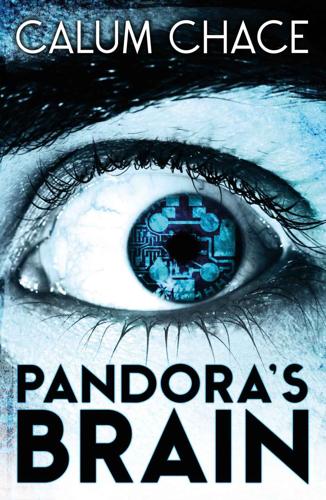
Pandora's Brain
by
Calum Chace
Published 4 Feb 2014
We are going to absolutely hate being surpassed. Just think how demoralising it would be for people to realise that however clever we are, however hard we work, nothing we do can be remotely as good as what the AI could do.’ ‘So you think we’ll collapse into a bovine state like the people on the spaceship in Wall-E?’ joked Ross. Montaubon arched his eyebrows and with a grim smile, nodded slowly to indicate that while Ross’s comment had been intended as a joke, he himself took it very seriously. ‘Yes I do. Or worse: many people will collapse into despair, but others will resist, and try to destroy the AI and those people who support it.

The Smart Wife: Why Siri, Alexa, and Other Smart Home Devices Need a Feminist Reboot
by
Yolande Strengers
and
Jenny Kennedy
Published 14 Apr 2020
Noteworthy examples include the Daleks in the Doctor Who television series (commencing on British TV in 1963), HAL in 2001: A Space Odyssey (first appearing in 1968), Maria in the film Metropolis (1926), I, Robot (2004), 9 (2009), and The Matrix trilogy (1999–2003). That’s not to say that some of these robot characters don’t fight for humanity against their evil counterparts (as in The Terminator series [1984, 1991, 2003, 2008–2009, 2015]) or that there aren’t still some friendly characters in the mix (like in the animated film Wall-E [2008], Big Hero 6 [2014], or Transformers [2007]), but this isn’t what is commonly portrayed.64 Another potential obstacle to people embracing robots is what is known as “the uncanny valley”: a still relevant theory—developed by Japanese roboticist Masahiro Mori in 1970—that refers to the eerie and uncanny feelings people experience when interacting with robots that too closely resemble themselves.65 The uncanny valley is closely related to humanity’s fear of being replaced or taken over by artificial intelligence, or robots “waking up” and rebelling against humanity (as occurs in the UK Humans television series, and as illustrated by Samantha, the smart wife in Her).66 Richardson calls these fears “annihilation anxiety.”67 She links the uncanny valley directly to the fearful robots portrayed in Western culture (a point also made by literature, technology, and science scholar Jennifer Rhee).68 The existence of the uncanny valley, while still uncertain, has withstood the test of time in many studies and experiments with humanoid robots and AI.69 More controversially, though, is how to respond to its existence and effects on humans.

Gene Eating: The Science of Obesity and the Truth About Dieting
by
Giles Yeo
Published 3 Jun 2019
There are foods available whose shelf lives laugh in the face of going stale, almost defying biological decay and decomposition. A common urban myth claims that the infamous American ‘cake’ (a very loosely used term here I would argue), the Twinkie, has an infinite shelf life, due to all of the chemicals used in their production. In homage to this legend, the Pixar film WALL-E, which is set in part on a ‘post-apocalyptic’ Earth, has a scene where a cockroach is shown eating its way through the cream-filled centre of a Twinkie, both of which have survived the apocalypse, emerging out the other side not having been struck down by food poisoning. The myth is just that of course – a myth – but Twinkies certainly stay ‘edible’ (another word used here with great artistic license) for an unnaturally long time, particularly as they are filled with ‘cream’ (or at least some kind of cream analogue ... what in heavens is in Twinkie cream?).
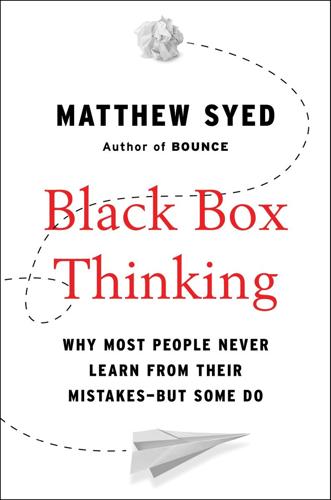
Black Box Thinking: Why Most People Never Learn From Their Mistakes--But Some Do
by
Matthew Syed
Published 3 Nov 2015
The crucial point—and the one that is most dramatically overlooked in our culture—is that in all these things, failure is a blessing, not a curse. It is the jolt that inspires creativity and the selection test that drives evolution. Failure has many dimensions, many subtle meanings, but unless we see it in a new light, as a friend rather than a foe, it will remain woefully underexploited. Andrew Stanton, director of Finding Nemo and WALL-E, has said: My strategy has always been: be wrong as fast as we can . . . which basically means, we’re gonna screw up, let’s just admit that. Let’s not be afraid of that. But let’s do it as fast as we can so we can get to the answer. You can’t get to adulthood before you go through puberty. I won’t get it right the first time, but I will get it wrong really soon, really quickly.
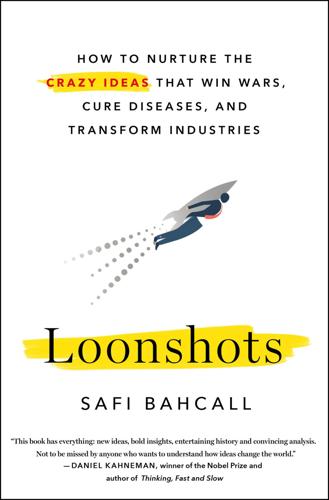
Loonshots: How to Nurture the Crazy Ideas That Win Wars, Cure Diseases, and Transform Industries
by
Safi Bahcall
Published 19 Mar 2019
MOVIES AND DRUGS: A BRIEF INTERLUDE Pixar’s story has a great plot: a small, struggling company, dismissed by nearly all the major players in the industry, is saved by a partnership. The partnership produces an industry-transforming hit. The hit launches a wildly successful public offering. The offering finances a staggering run of new hits: Monsters, Inc., Finding Nemo, The Incredibles, Cars, Ratatouille, Wall-E, Up, Inside Out, and others. The Pixar story is a marvelous remake. Fifteen years earlier, in 1978, a tiny, profitless company called Genentech, developing an unproven new technology called genetic engineering, which was dismissed by nearly all the incumbent players in the industry, signed a partnership with a large pharma company.

How to Murder Your Life: A Memoir
by
Cat Marnell
Published 30 Jan 2017
All of the streetlights were Day-Glo with neon laser beams shooting out of them, and then there was a glow-in-the-dark baby deer—Bambi, like Tinsley’s Chihuahua—racing alongside me, flickering like a lightbulb. Then I didn’t have wheels anymore, just sneakers that weren’t on all the way; I was shuffling along in my WALL-E world, and I was lost and I just wanted a mother. I knew I’d never find my friends again; I couldn’t remember where I lived. And just when I was about to give up, I sat down in front of a building and then I realized it was my building, and the people in front of it were . . . my friends. “Where you been?”

The Optimist: Sam Altman, OpenAI, and the Race to Invent the Future
by
Keach Hagey
Published 19 May 2025
After a while, they decided to move to a different AI partner. “It was like, ‘We will spend all our revenue on AI. We really can’t make this work,’ ” Walton said.2 At the start of 2021, OpenAI used GPT-3 to power a model that could conjure images out of text instructions. They called it DALL-E, a nod to both Disney’s WALL-E and Salvador Dali. Its first publicly available image was “a baby daikon radish in a tutu walking a dog.” The radish was lumpy and simple, in a cartooning style that made South Park look like Ingres. But it was indeed wearing a tutu and walking a dog. The advances allowed Altman to make his most forceful case yet for his role in reshaping society.
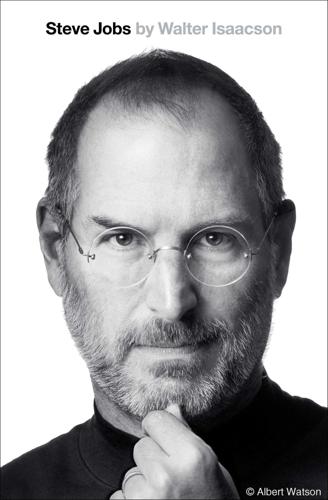
Steve Jobs
by
Walter Isaacson
Published 23 Oct 2011
Lasseter was proud of how much his team impressed Iger, which of course made him warm up to Iger. “I never had more pride in Pixar than that day,” he said. “All the teams and pitches were amazing, and Bob was blown away.” Indeed after seeing what was coming up over the next few years—Cars, Ratatouille, WALL-E—Iger told his chief financial officer at Disney, “Oh my God, they’ve got great stuff. We’ve got to get this deal done. It’s the future of the company.” He admitted that he had no faith in the movies that Disney animation had in the works. The deal they proposed was that Disney would purchase Pixar for $7.4 billion in stock.
…
Pepper’s Lonely Heart Club Band (Beatles), 412 Satoshi, Mizushima, 81 Schieble, Arthur, 2–3 Schieble, Joanne, see Simpson, Joanne Schieble Jandali Schiller, Phil, 336–37, 344, 348–49, 352, 362, 384, 387, 388, 405, 458, 460, 468, 491, 494, 501, 533, 558 Schlein, Philip, 164, 196, 198 Schlender, Brent, 311, 479, 495 Schmidt, Eric, 321, 450, 511, 512–14, 545, 552 Schneider, Peter, 287 Schuler, Barry, 398 Scott, Mike, xv, 82–84, 101, 113, 354 badge number controversy and, 83 ouster of, 115–16, 148 Scott, Ridley, 163, 165, 187 Scott, Tony, 187 Scrabble, 497 Sculley, John, xv, 148, 167, 170, 180, 187, 213, 214, 222, 227, 228, 238, 263, 299, 301, 302, 309, 319, 320, 323, 338, 353, 355, 569 and decline of Apple company, 295–96 1984 ad and, 163–64 pricing debate and, 157–58 reorganization plan of, 205–7 SJ and ouster of, 200–204, 207 SJ’s clashes with, 194–99, 216–17 SJ’s courtship of, 150–54 at SJ’s 30th birthday party, 189 SJ’s working relationship with, 155–57, 168, 181–82, 195, 199, 215 Sculley, Leezy, 155, 187, 203 Seal, 329 SEC (Securities and Exchange Commission), 313, 321, 481 backdated stock options issue and, 450–51 Secret Service, 278 “Secrets of the Little Blue Box” (Rosenbaum), 27 Segal, George, 140 Segall, Ken, 329, 351 semiconductors, 9–10 Senate, U.S., 432–33 Sequoia Capital, 75, 139 Serwer, Andy, 478, 506 Seva Foundation, 106 Sex (Madonna), 502 Shakespeare, William, xxi, 19, 224, 234 “She Drives Me Crazy” (song), 271 Sheff, David, 189 “Shelter from the Storm” (song), 397 Shockley, William, 9 Showplace computer program, 247 Shrek (film), 430 Shriver, Eunice, 330–31 SIGGRAPH, 243–44 “Silicon Valley USA,” 10 Simon and Garfunkel, 413 Simpson, George, 253 Simpson, Joanne Schieble Jandali, xv, 2–4, 89 SJ’s finding of, 253–55, 258 Simpson, Mona, xv, xix, 4, 250, 254–58, 272, 273–74, 281, 455, 485, 494, 547–48 Jandali and, 256–58 Lisa Brennan and, 282 SJ’s reconnection with, 255–56 Simpsons (TV show), 274 Skoll Foundation, 47 Slade, Mike, 458, 553 Smalltalk (computer language), 95, 96–97 Smith, Alvy Ray, xv, 239–41, 243, 285 SJ’s clash with, 244–45 Smith, Burrell, xv, 109–10, 113–15, 117, 134, 136–37, 141–42, 165, 189, 191, 277 Smith, Gina, 310 Smith, Kathryn (Kat), 268–71, 476, 486 Smith, Wes, 233 Snow White (film), 187, 290 Snow White project, 132–33 Solaris operating system, 298, 308 SOL-20 (computer), 70 “Someday Baby” (song), 417–18 Some Girls (Rolling Stones), 412 Sonnenfeldt, Helmut, 313 Sonsini, Larry, 303 Sony, 125–26, 146–47, 361–62, 381, 385, 394–95, 404, 406, 408, 565 music industry and, 394–95, 400–401 Trinitron products of, 132, 155 Sony Connect, 408 Sony Walkman, 407 Sorkin, Aaron, 456 SoundJam, 383 Soviet Union, 8, 209 Spectra-Physics company, 15 Spielberg, Steven, 291, 427, 442 Spindler, Michael, 296, 335 “Spiritus Domini” (Gregorian chant), 413 Stalin, Joseph, 209 Stanford Linear Accelerator Center (SLAC), 28, 61 Stanford University, 9, 33, 57 SJ’s 2005 commencement address at, 456–57 Star Trek (TV show), 117–18, 494 Star Trek (video game), 44 Stengel, Rick, 506 Stewart, Jon, 508, 518 Sticky Fingers (Rolling Stones), 412 Stone, Edward Durell, 151 Stoppard, Tom, 570 “Strange Things” (song), 288 “Strawberry Fields Forever” (song), 418–19 Stringer, Howard, 395, 407 StyleWriter, 338 Sulzberger, Arthur, Jr., 504–5 Summers, Larry, 497 Sun Microsystems, 236, 294, 296, 308, 333 Sunnyvale Electronics, 28 Suzuki, Shunryu, 35, 49 Swisher, Kara, 463 Sylvania, 24 “Sympathy for the Devil” (song), 397 Syria, 3, 258 tablet computers, 467, 490–91 “Talkin’ bout a Revolution” (song), 280 Talking Heads, 413 Tandy company, 135, 138 Tangerine (design company), 341 Tanimoto, Craig, 329 Target, 369 Tate, Ryan, 516–17 Tattoo You (Rolling Stones), 412 TBWA\Chiat\Day, 328, 351, 391 technology boom: counterculture and, 57 hacker subculture and, 56–57 microprocessor and, 10 Moore’s Law and, 10 semiconductors and, 9–10 10,000 Maniacs, 413 Terman, Frederick, 9 Terravera company, 274 Terrell, Paul, 66–67, 68 Tesler, Larry, 96–97, 99, 114, 120, 136, 301 Tevanian, Avadis “Avie,” xv, 259, 268, 273–74, 300–301, 303, 308–9, 362, 366, 458–59, 461 textbook industry, 509–10, 555 “There Goes My Love” (song), 498 “Things Have Changed” (song), 412 “Think Different” advertising campaign, vii, xviii, 328–32, 358 Thomas, Brent, 162 Thomas, Dylan, 19 Through the Looking Glass (Carroll), 235 Thurman, Mrs., 12 Thus Spoke Zarathustra (Nietzsche), 119 Tiffany, Louis, 123 Time, xvii, xviii, 90, 166, 218, 290, 323, 381, 383, 429, 473, 495, 504, 506 SJ profiled by, 106–7, 139–41 Time Inc., 330, 473, 478, 504, 506–7 Time-Life Pictures, 330 “Times They Are A-Changing, The” (Dylan), 168, 207 Time Warner, 506 Tin Toy (film), 248 Toshiba, 385, 386 touchscreens, 93 Toy Story (film), 285–91, 305, 311, 372, 373–74, 427, 428, 430, 434, 437, 472, 565 basic idea for, 285–86 blockbuster success of, 290–91 budgeting of, 288 premieres of, 289–90 reviews of, 290 revision of, 287–88 SJ’s investment in, 287 television premiere of, 331 Toy Story 2 (film), 430 Toy Story 3 (film), 527, 540 Toy Story Musical, 437 Treasure Planet (film), 437 Tribble, Bud, 117–18, 120, 123, 140, 212, 225 Trips Festival, 58 Trotsky, Leon, 209 “Trouble with Steve Jobs, The” (Fortune), 477–78 Trungpa, Chögyam, 35 Turing, Alan, xviii TV Guide, 165 Twain, Mark, 479 Twiggy, 145 Twitter, 495 “Uncle John’s Band” (song), 414 United Network for Organ Sharing, 483 Universal Music Group, 395, 399, 479 UNIX operating system, 212, 297, 298 Up (film), 494 UPS, 219 U2, 399, 413, 537 iPod deal and, 420–22 U-2 spy plane, 8 United Way, 104 USA Today, 507 Valentine, Don, 75–76, 139, 189 Valleywag (website), 516–17, 518 Vanity Fair, 497 Varian Associates, 8, 9 Vatican, 28–29 “Vertigo” (song), 420 Vidich, Paul, 394–95, 398 Vietnam Veterans Memorial, 127 Vietnam War, 34 “View from the Top” lectures, 268 Vincent, James, xv, 332, 364, 391, 392, 398, 413, 417, 421–23, 498–500, 521–22, 524 Visa, 410 VisiCalc (finance program), 84 VLSI Technology, 359 “Wade in the Water” (song), 417 Wall-E (film), 441 Wall Street Journal, 135, 187–88, 192, 193, 215, 226, 236, 307, 379, 450, 463, 482, 493, 504, 507, 531 Wall Street Journal Digital Network, 508 Walt Disney Company, see Disney Co. Warhol, Andy, 180 Warner Music, 394, 398, 403 Warnock, John, 515 Warren, Jim, 80 Washington Post, 228, 230, 231 Waters, Alice, 458, 477 Watson, James, 330 Wavy Gravy, 106 Wayne, Ron, xvi, 44, 52, 54, 63–64, 68–69, 73, 79–80 Weeks, Wendell, 471–72 Weitzen, Jeff, 379 Welch, Jack, 401 Wells, Frank, 436–37 Well-Tempered Clavier, The (Bach), 413 Wenner, Jann, 166 West Coast Computer Faire, 80, 123, 189 Westerman, Wayne, 469 Westgate Shopping Center, 32 Westinghouse, 9, 219 West Wing, The (TV show), 456 What the Dormouse Said (Markoff), 57 “When the Night Comes Falling From the Sky” (song), 207–8 Whitman, Meg, 321 Whole Earth Catalog, 57–59, 494 Whole Earth Truck Store, 58 Whose Line Is It Anyway?

How Everything Became War and the Military Became Everything: Tales From the Pentagon
by
Rosa Brooks
Published 8 Aug 2016
Indeed, some are calling for a global ban on the development, production, and use of fully autonomous weapons systems, which are, according to Human Rights Watch, “also”—and rather conveniently—“known as killer robots.”7 The term does tend to have a chilling effect even upon those harboring a soft spot for R2-D2 and WALL•E. I’m less concerned, however: not because I’m fond of killer robots, but because I’m inclined to think ethicists and rights advocates are far too generous in their assumptions about human beings. Their core concern relates to military research into weapons systems that are “fully autonomous,” meaning that they can “select and engage targets without human intervention.”

Coders: The Making of a New Tribe and the Remaking of the World
by
Clive Thompson
Published 26 Mar 2019
Brandeau was so happy with Krieger’s plug-in that he invited Krieger to a film premiere, “if you ever come to the States,” as Krieger recalls. For a teenage kid in Brazil to be solving corporate problems for a major US executive was intoxicating. (And four years later, he joined Brandeau for the launch of Wall-E.) In 2004, Krieger arrived at Stanford to study a quirky curriculum called Symbolic Systems, a mash-up of computer science, psychology, artificial intelligence, cognitive science, philosophy, and linguistics. (He discovered it via a zagging path: Google ran a social network called Orkut that was a complete failure in the US but wildly popular in Brazil, and for some reason the Symbolic Systems program had an Orkut page, so Krieger saw it.

Evil Geniuses: The Unmaking of America: A Recent History
by
Kurt Andersen
Published 14 Sep 2020
Another possible awful American future is the lower-left quadrant, where quantum computing and robots and miraculous nanotech molecular assembly are doing and making nearly everything, but inequality of income and wealth and power become even more extreme than they are now—a small ruling elite presiding over what the historian and futurist Yuval Noah Harari calls the “useless class,” what the Silicon Valley entrepreneur and investor Martin Ford calls “digital feudalism,” Elysium without that movie’s happy ending. And finally, there’s the best of all plausible worlds—amazing machines, more than enough stuff that our new, optimal social democracy divides fairly, more or less Earth as on Star Trek or in the redemptive finale of WALL-E. In 1930—just after the word robot was invented, just as Aldous Huxley was imagining the dystopia of Brave New World and just before H. G. Wells depicted the utopia of The Shape of Things to Come—their friend John Maynard Keynes saw the economic future.*1 “We are being afflicted with a new disease,” he wrote in a speculative essay called “Economic Possibilities for Our Grandchildren,” a disease of which “readers will hear a great deal in the years to come—namely, technological unemployment.

The Rough Guide to Jerusalem
by
Daniel Jacobs
Published 10 Jan 2000
That was how Caliph Omar found it when he 02 Jerusalem Guide 45-160.indd 99 99 18/06/09 11:36 AM Lions Gate Herod’s Gate Bab al-‘Atm A BAB HITT ROAD KING FAISAL STREET Umariya School Madrasa alDawadariya Bab alAsbat Bab Hitta Madrasa al-Sallamiya Bab alGhawanima Al-Wad Road Te m pl e Mo unt Kursi Suleiman Bab alNaazir Golden Gate Al-Wad Road | Dome of the Spirits Little Wailing Wall DID BAL AL-HA STREET Dome of the Ascension Bab alHadid Dome of the Prophet Dome of the Chain Bab alQattanin NIN -QATTA Al-Wad Road SOUQ AL Turba alSa’adiya SILA L-SIL sabil T STREE Bab al- Sabil of Silsila Qaitbey Tankaziya Madrasa Al-Kas Wailing Wall E SP LAN AD E Turba of Turkan Khatun W E ST E RN WA LL Central Souqs & Jaffa Gate BAB A Dome of the Rock Madrasa alBaladiya Ribat alNisa’ Bab al Magharba 0 Islamic Museum Solomon’s Stables Al-Aqsa Mosque Single Gate 100 m TEMPLE MOUNT Triple Gate Double Gate Solomonic steps JERUSALEM ARCHAEOLOGICAL PARK Dung Gate 100 accepted the surrender of Jerusalem in 638 AD.
…
Run by the Franciscans with a central location and well-kept rooms, but often full with pilgrim groups, so worth booking ahead. The main part was formerly the Orient Palace Hotel, and is still pretty smart for a pilgrims’ guest house, with a/c, 04 Jerusalem Excursion 229-264.indd 233 233 18/06/09 2:11 PM The Separation Wall E xc urs i o n s | Bethlehem and around The idea of building a wall around the West Bank to cut it off from Israel goes back to 1994, when Yitzhak Rabin had a similar barrier built around the Gaza Strip. From 2000, the Second Intifada gave the idea new impetus, and as suicide bombings and other attacks by West Bank Palestinians in Israel increased, pressure for some kind of barrier grew.

Future Crimes: Everything Is Connected, Everyone Is Vulnerable and What We Can Do About It
by
Marc Goodman
Published 24 Feb 2015
We, Robot In the future, I’m sure there will be a lot more robots in every aspect of life. If you told people in 1985 that in 25 years they would have computers in their kitchen, it would have made no sense to them. RODNEY BROOKS Throughout the history of film and television, we’ve seen robots presented in a variety of lights. Some were lovable and helpful such as WALL-E, Johnny Number 5 of Short Circuit, and C-3PO and R2-D2 from Star Wars. Other robots were dangerous and out to destroy mankind, such as Gort from The Day the Earth Stood Still and the T-800s from The Terminator. Thanks to advances in Moore’s law, robots are leaving the silver screen and joining reality.

Tools of Titans: The Tactics, Routines, and Habits of Billionaires, Icons, and World-Class Performers
by
Timothy Ferriss
Published 6 Dec 2016
(doc) Rubin, Rick: 20,000 Days on Earth (doc) Sacca, Chris: The Big Lebowski Schwarzenegger, Arnold: Brooklyn Castle (doc) Sethi, Ramit: Jiro Dreams of Sushi (doc) Shinoda, Mike: House of Cards (TV), The Godfather, The Usual Suspects, Fight Club, Seven, Ninja Scroll, WALL-E, Princess Mononoke Silva, Jason: Inception, The Matrix, The Truman Show, Vanilla Sky, eXistenZ, The Beach, Maidentrip (doc) Sivers, Derek: Scott Pilgrim vs. the World Skenes, Joshua: Chef’s Table (TV) Sommer, Christopher: The Legend of Tarzan Spurlock, Morgan: Scanners, An American Werewolf in London, Making a Murderer (TV), Mr.
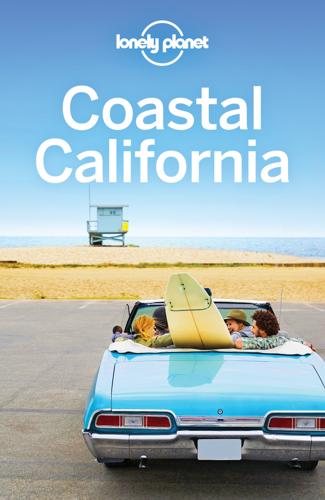
Coastal California Travel Guide
by
Lonely Planet
In San Francisco, George Lucas’ Industrial Light & Magic is made up of a team of high-tech wizards who produce computer-generated special effects for blockbuster series such as Star Wars, Jurassic Park, Indiana Jones and Harry Potter. Just across the San Francisco Bay, Pixar Animation Studios has produced an unbroken string of animated hits, including Toy Story, Finding Dory, Inside Out, WALL-E, Cars and Brave. Director Alfred Hitchcock set some of his best thrillers in coastal California, including Vertigo (1958), with unforgettable shots of San Francisco’s Golden Gate Bridge and Muir Woods, and The Birds (1963), set in Bodega Bay. The Small Screen After a year of tinkering, San Francisco inventor Philo Farnsworth transmitted the first television broadcast in 1927 of…a straight line.

Artificial Intelligence: A Modern Approach
by
Stuart Russell
and
Peter Norvig
Published 14 Jul 2019
Ford (2015) describes the challenges of increasing automation, and West (2018) provides recommendations to mitigate the problems, while MIT’s Thomas Malone (2004) shows that many of the same issues were apparent a decade earlier, but at that time were attributed to worldwide communication networks, not to automation. 1For example, the opera Coppélia (1870), the novel Do Androids Dream of Electric Sheep? (1968), the movies AI (2001), Wall-E (2008), and Her (2013). 2Including the two authors of this book. 3In 2010, although only 2% of the U.S. workforce were actual farmers, over 25% of the population (80 million people) played the FARMVILLE game at least once. 4Science fiction writers are in broad agreement that robots are very bad at resolving contradictions.
…
W., 190, 266, 1107 Mossel, E., 267, 1105 most general unifier (MGU), 302, 304, 324 most likely explanation, 514 most likely state, 963 motion, 1011–1012 motion model, 939 motion parallax, 1027 motion planning, 938, 945, 949, 984 motion primitive, 967 Mott, A., 1069, 1107 Mott, J., 903, 1087 Motwani, R., 627, 735, 1085, 1096 Motzkin, T. S., 836, 1107 Mountney, R, 1069, 1093 Moutarlier, R, 984, 1107 move, 193 movies 2001: A Space Odyssey, 472, 1036 AI, 1033, 1051 Centennial Man, 1051 Her, 1033 The Matrix, 1052 Rogue One, 1022 The Terminator, 933, 1052 Wall-E, 1033 MPC (model predictive control), 963, 971 MPE, see explanation, most probable MPI (mutual preferential independence), 533 MRS (metalevel reasoning system), 316 MST (minimum spanning tree), 127 MT (machine translation), 900, 915, 931 MUC (Message Understanding Conference), 905 Mudd, H.

The Lonely Century: How Isolation Imperils Our Future
by
Noreena Hertz
Published 13 May 2020
Fellow soldiers Dr Julie Carpenter is a research scientist at Accenture’s Digital Experiences Lab in Silicon Valley. She also teaches and is a research fellow at California State Polytechnic University in San Luis Obispo. One of her primary areas of focus is the relationship between soldiers and robots, specifically the WALL-E-like robots that trundle down exposed roads and through narrow doorways to detect and disable improvised explosive devices (IEDs) in war zones like Afghanistan and Iraq. Her findings provide stark evidence of the depth of feelings that robots can inspire. One US Army soldier reported taking care of their robot ‘like a team member’.17 Another recalled losing a robot during a mission in 2006.

Amritsar 1919: An Empire of Fear and the Making of a Massacre
by
Kim Wagner
Published 26 Mar 2019
Kumar, Essays on Gandhian Politics: The Rowlatt Satyagraha of 1919 (Oxford: Clarendon Press, 1971), pp. 236–97. Kuortti, J., ‘“One Thousand Six Hundred and Fifty Rounds”: Colonial Violence in the Representations of the Jallianwala Bagh Massacre’, Indialogs, 1 (2014), pp. 38–50. Lago, M., Hughes, L.K. and Walls, E.M. (eds), The BBC Talks of E.M. Forster, 1929–1960: A Selected Edition (Columbia, MO: University of Missouri Press, 2008). Lal, V., ‘The Incident of the “Crawling Lane”: Women in the Punjab Disturbances of 1919’, Genders, 16 (spring 1993), pp. 35–60. Lawrence, J., ‘Forging a Peaceable Kingdom: War, Violence, and Fear of Brutalization in Post–First World War Britain’, Journal of Modern History, 75, 3 (Sept. 2003), pp. 557–89.

Fodor's Oregon
by
Fodor's Travel Guides
Published 13 Jun 2023
In the main hall, you can explore touch-friendly exhibits on nanotechnology and sports science, and Discovery Island has curious games and puzzles geared to tots under age five. There’s outdoor fun amid the plantings and pathways in the xeriscape Black Bear Garden, as well as a weather station, solar-power nursery, and kid-appropriate climbing wall. E 1500 E. Main St., Ashland P 541/482–6767 w scienceworksmuseum.org A $12.50 C Closed Mon. and Tues. Weisinger Family Winery WINERY | Just a short drive east of downtown, this long-established winemaker occupies a leafy hilltop with broad views of the surrounding mountains. Specialties include a fine Malbec, a well-respected Viognier, both conventional (crisp, minerally) a Barile dessert wine, and a nicely balanced Tempranillo.

Fodor's Essential Israel
by
Fodor's Travel Guides
Published 2 Aug 2023
The baubles and trinkets of the tourist trade often seem secondary, except along the well-trodden paths of the Via Dolorosa, David Street, and Christian Quarter Road. Haggling with merchants in the Arab market—a time-honored tradition—is not for everyone. If you know what you want and what you are willing to pay, it can be fun to try to knock the price down; if not, seek out shops with set prices, either in the Old City or outside its walls. E Muslim Quarter. Jaffa Gate Jaffa Gate got its name from its westerly orientation, toward the Mediterranean harbor of Jaffa, now part of Tel Aviv. Its Arabic name of Bab el-Khalil, “Gate of the Beloved,” points you south, toward the city of Hebron (in the West Bank of today) where the biblical Abraham, the “Beloved of God” in Muslim tradition, is buried.

California
by
Sara Benson
Published 15 Oct 2010
San Francisco remains a hub for documentary and independent filmmakers, while local ethnic media programs are produced statewide in dozens of languages from Persian to Portuguese. With Silicon Valley providing more of the effects for movies, Pixar Animation Studios fit right in among the dot-coms and interactive toy companies of San Francisco’s East Bay, and have produced a string of hits from Toy Story to Wall-E. * * * California Babylon: A Guide to Sites of Scandal, Mayhem, and Celluloid in the Golden State by Kristan Lawson and Anneli Rufus is a bizarre guide to infamous locations throughout the state. * * * Literature Californians read more than movie scripts: they make up the largest market for books in the US, and read more than the national average.

Self Build Simplified
by
Barry Sutcliffe
Published 7 Jun 2016
Generally, for a standard internal stud wall the spec would be: A base plate and a head plate. Studs at generally 600mm centres (so they take standard 1200mm plasterboards). A strengthening timber nogging half way up the wall (see right hand wall in the next image). OSB backing boards, fixed to noggings wherever there is to be any structural load on the wall (e.g. TVs / radiators, shelving etc. to be hung later). More OSB on noggings wherever there is an electrical socket or switch (to fix the back boxes to). If the timber stud wall is to be load bearing, then the construction of it may need to be more sturdy (how to construct the load bearing timber walls should be detailed on drawings and specifications).

The Rough Guide to Egypt (Rough Guide to...)
by
Dan Richardson
and
Daniel Jacobs
Published 1 Feb 2013
While the mural of papyrus-gathering in the marshes [a] is quite faded, the desert hunt [b] is rich in details: notice the copulating gazelles near the left-hand corner. Ball players, women spinning and fullers beating cloth appear below. Nearly two hundred wrestling positions are shown on the rear wall [c], with a lovely pair of birds above the funerary niche [d]. The south wall [e] is covered with episodes from the life of this XI Dynasty nomarch. In the second register from the top, his underlings count cattle and beat tax defaulters with sticks. Tomb of Khnumhotep (#3) Columned porticos and a niche for statues (which replaced the Old Kingdom serdab or secret chamber) are hallmarks of the XII Dynasty tombs, 150m north.